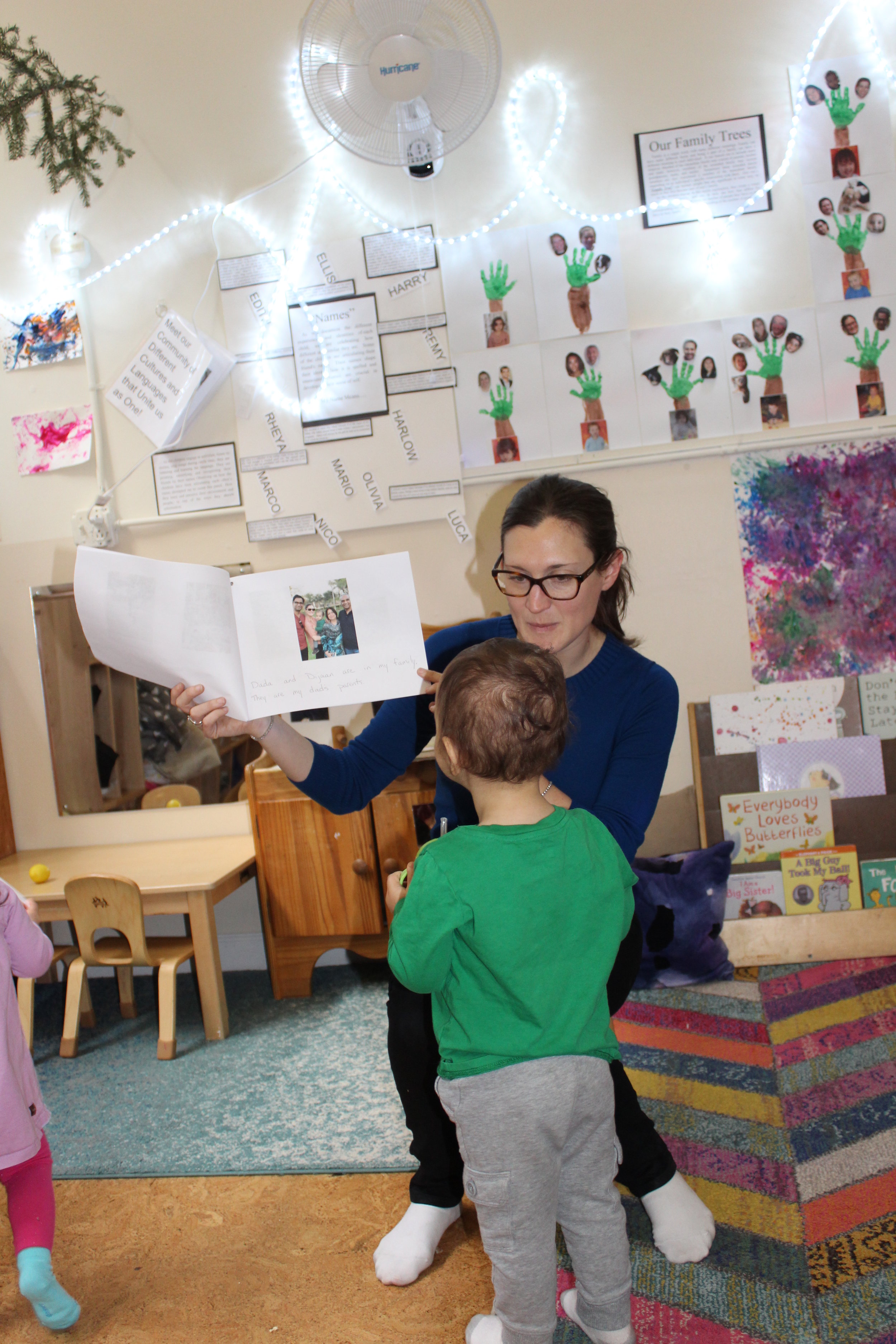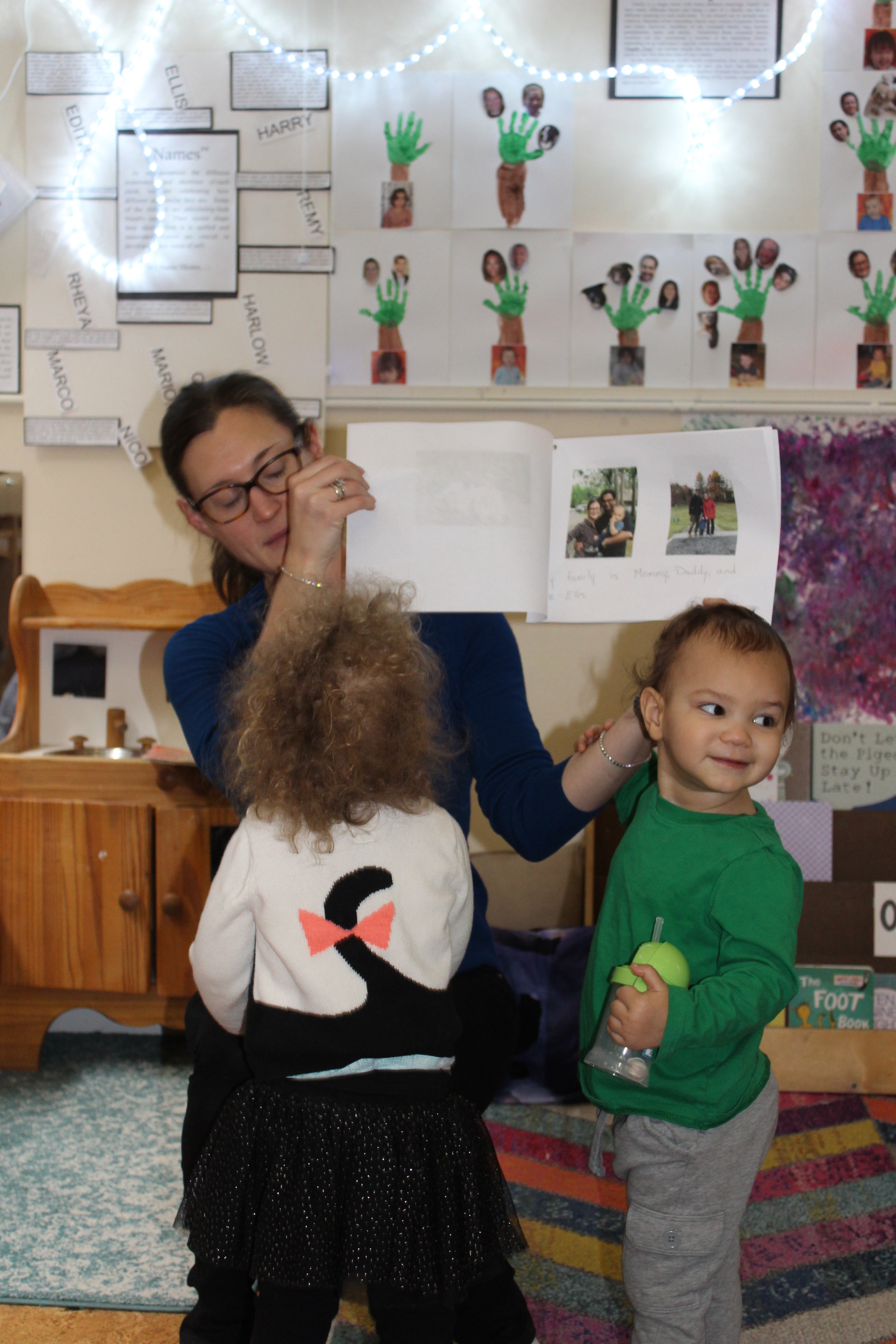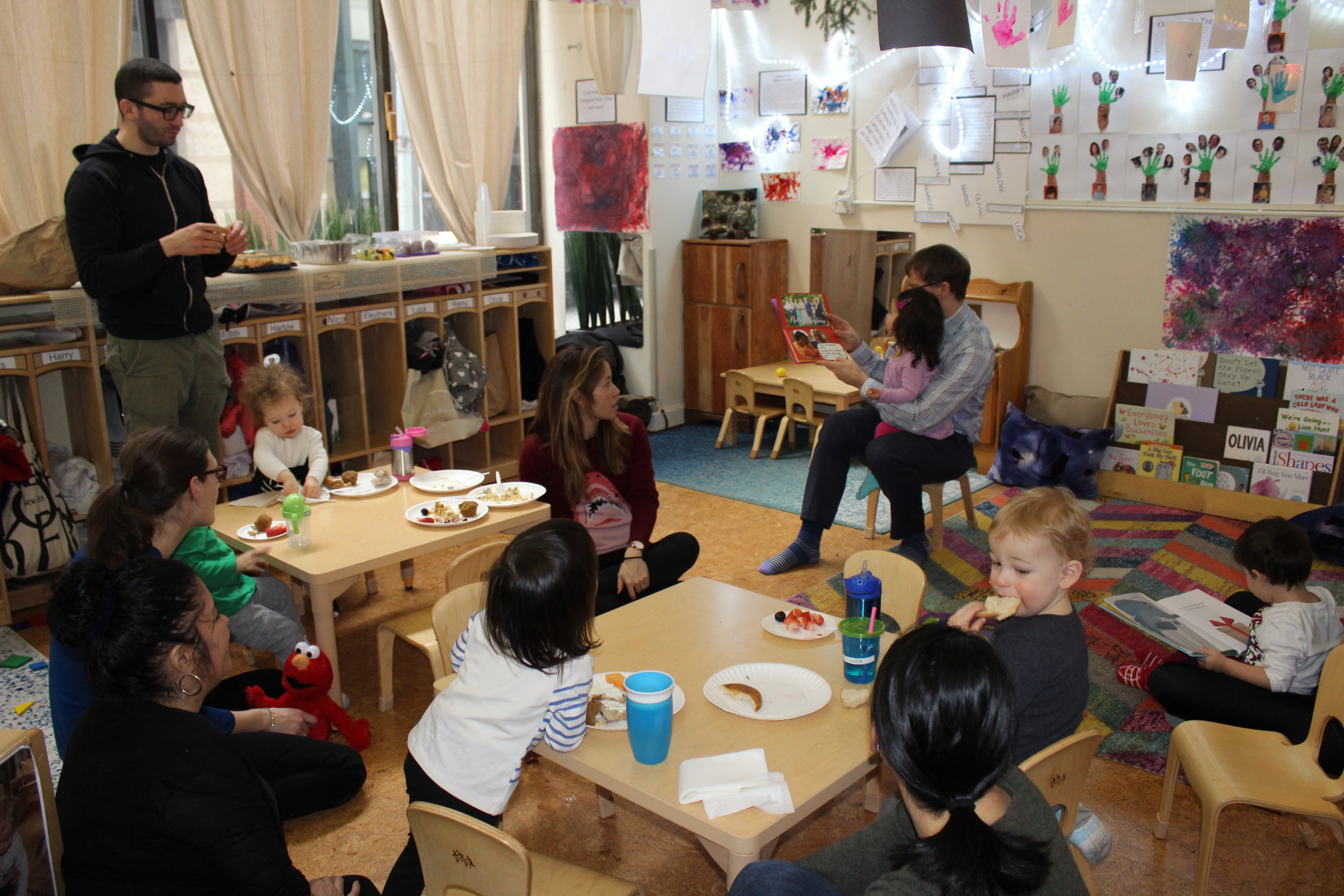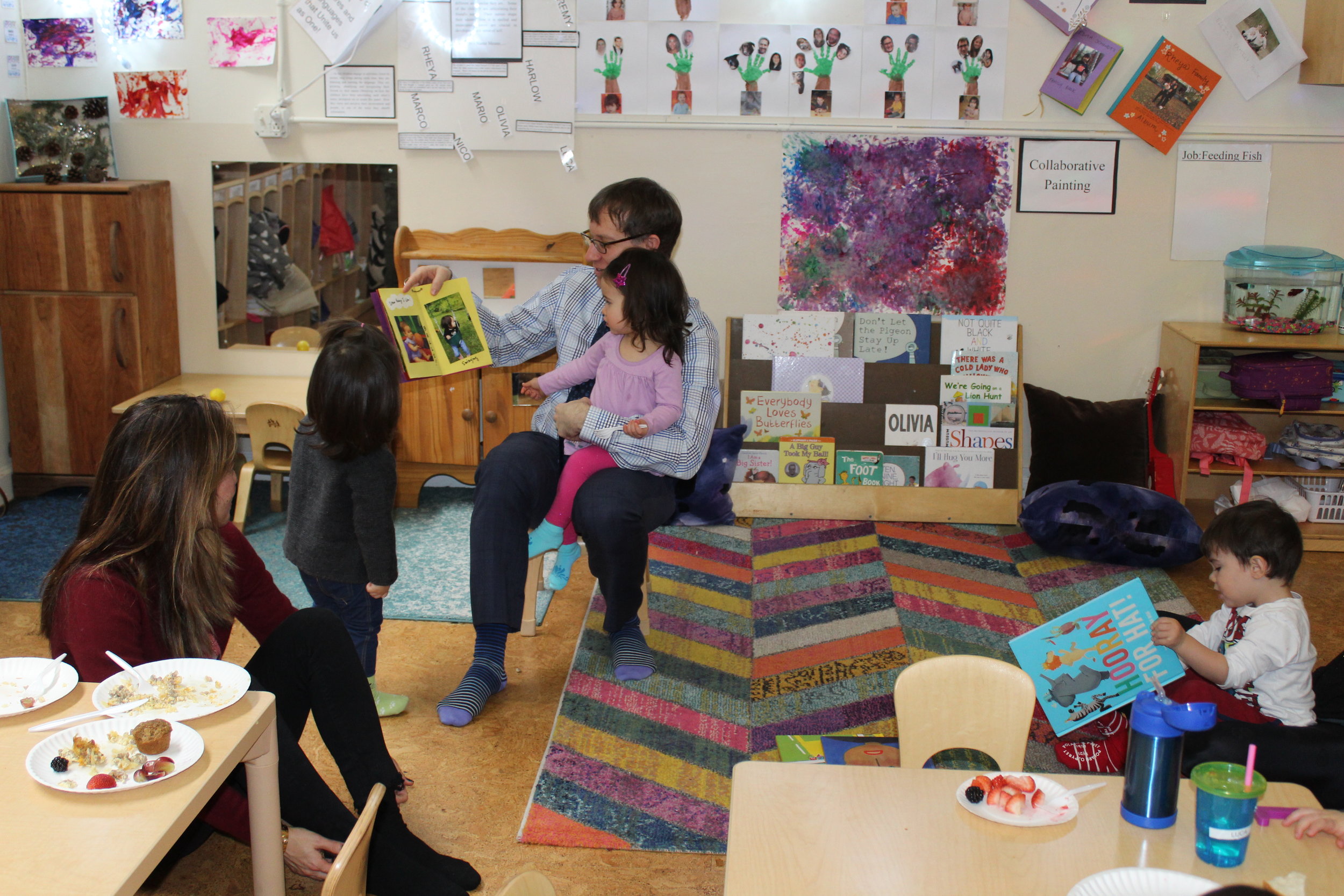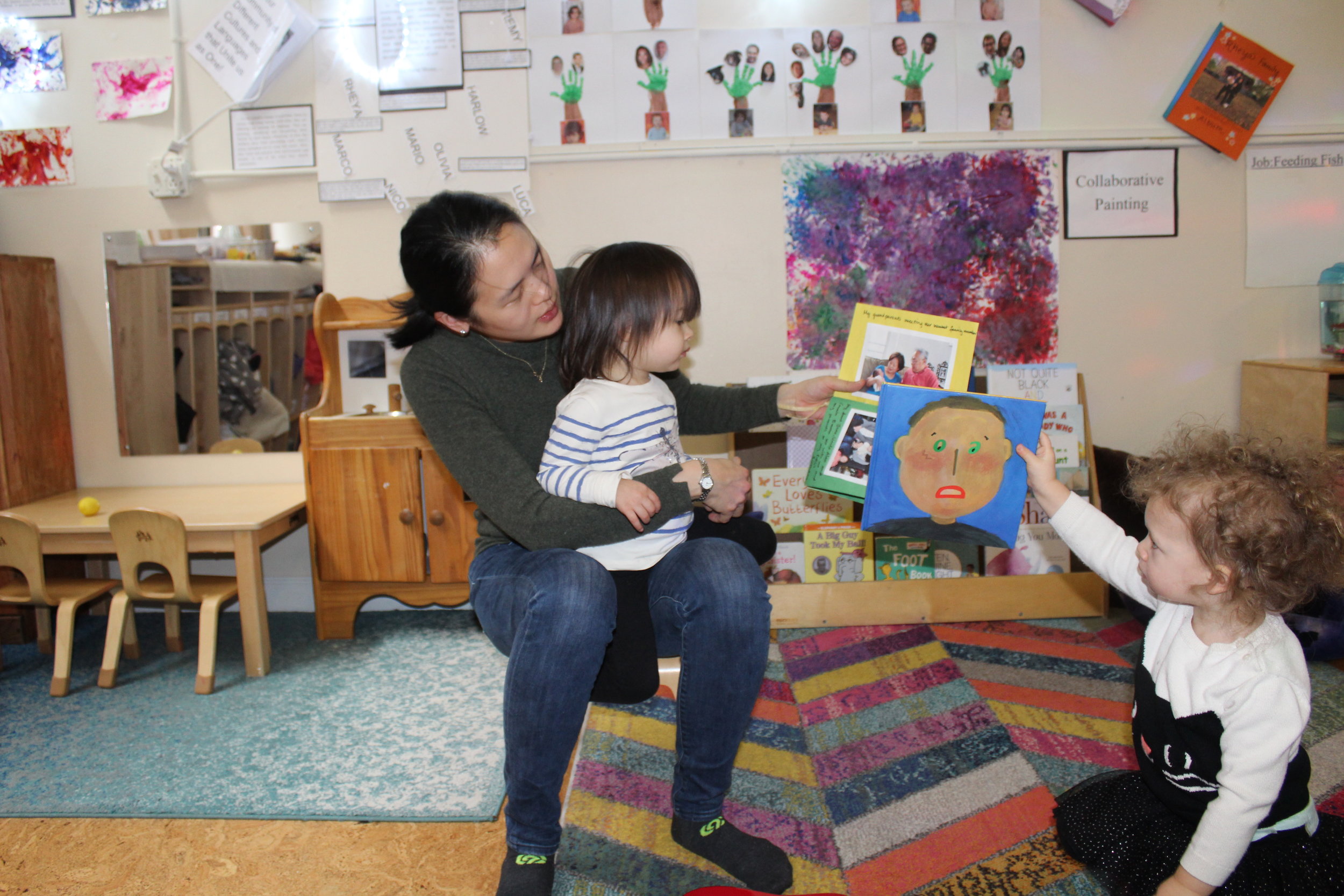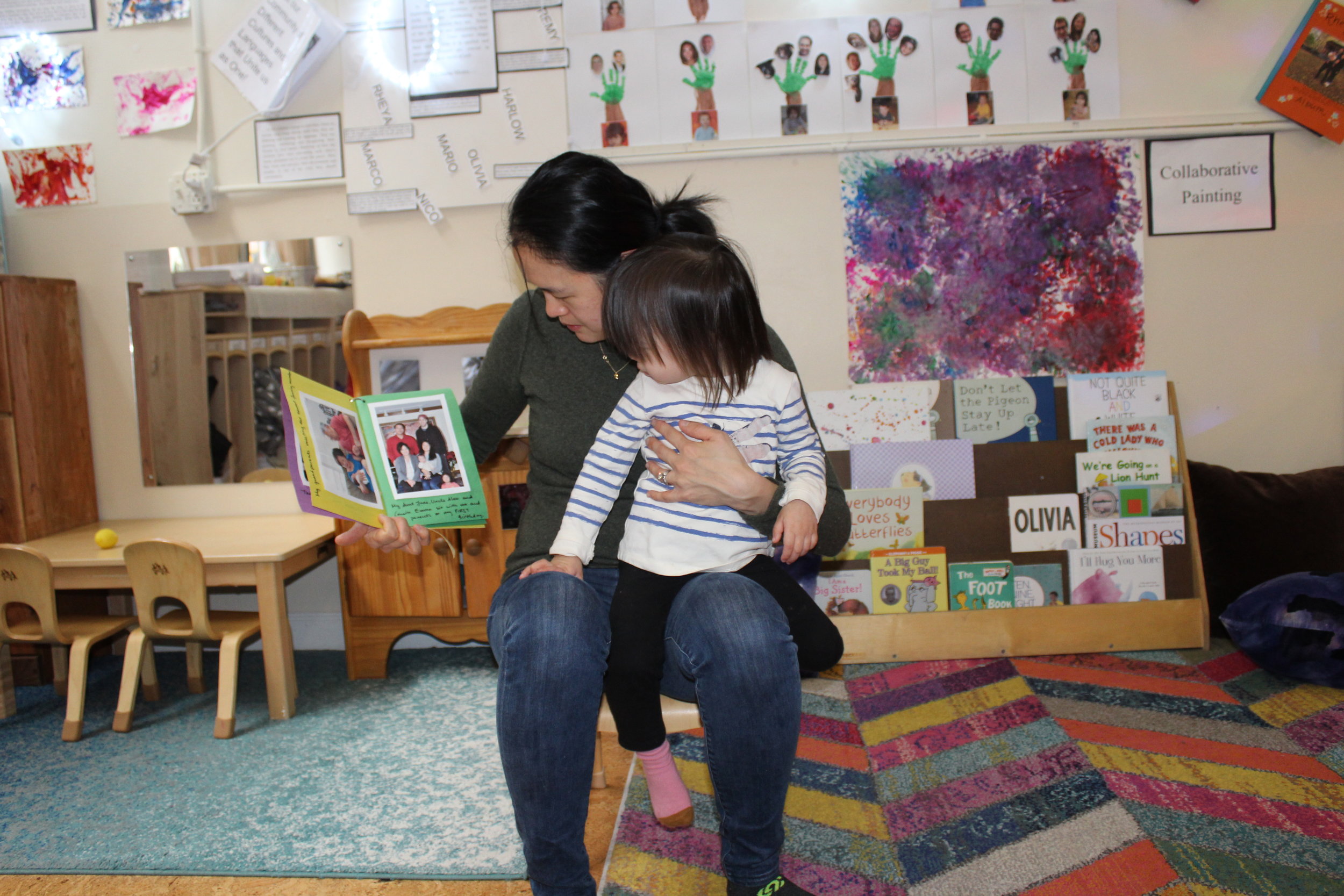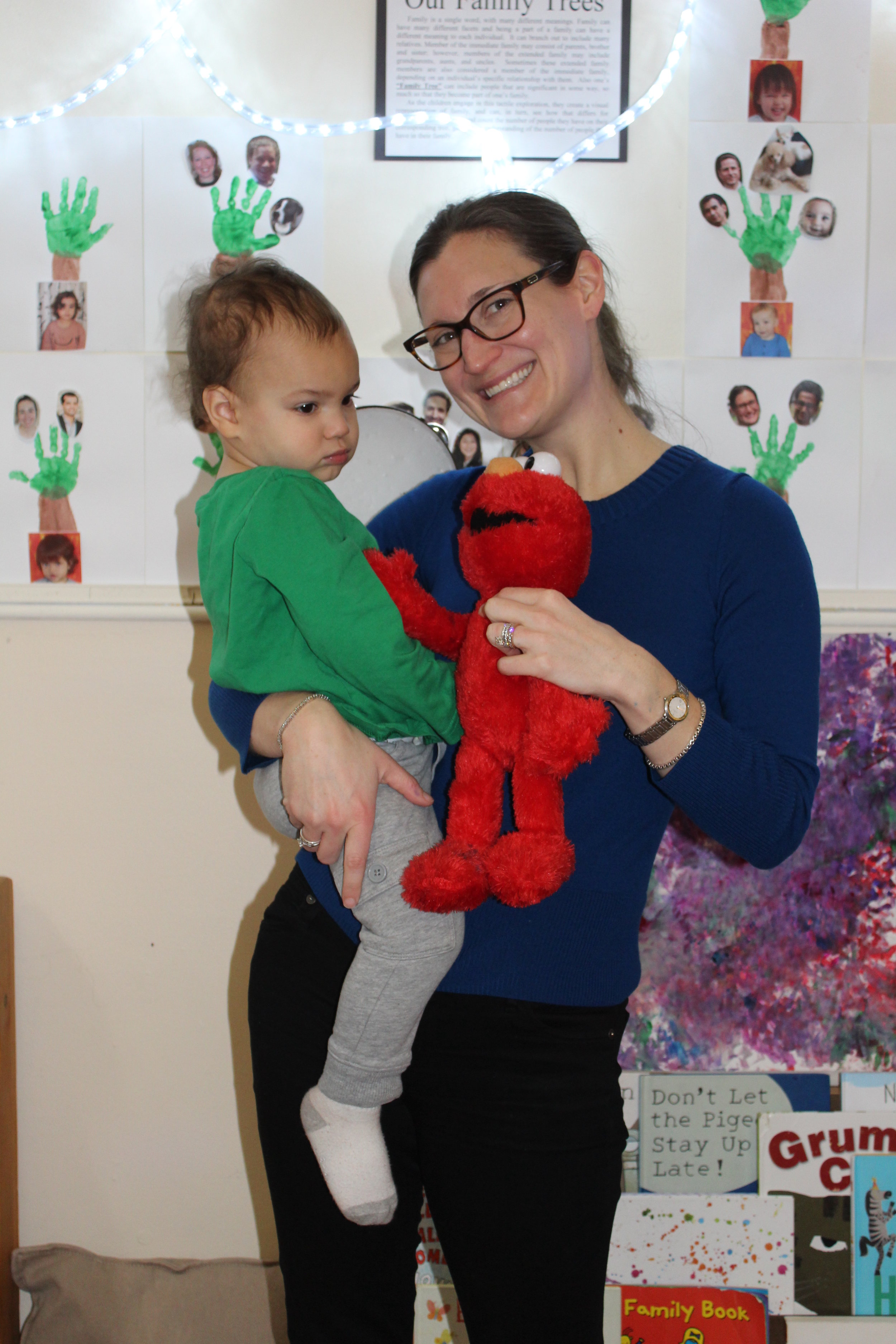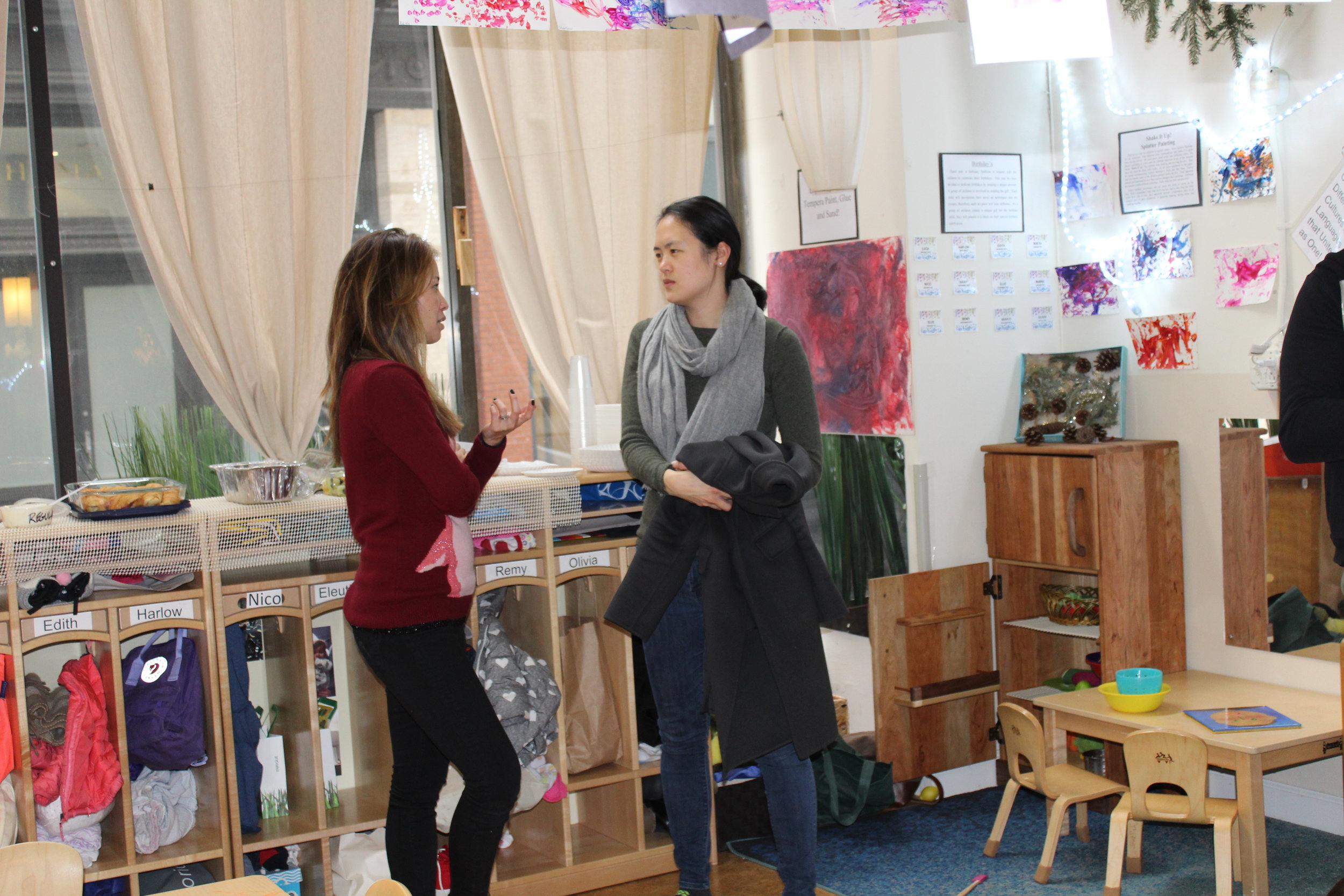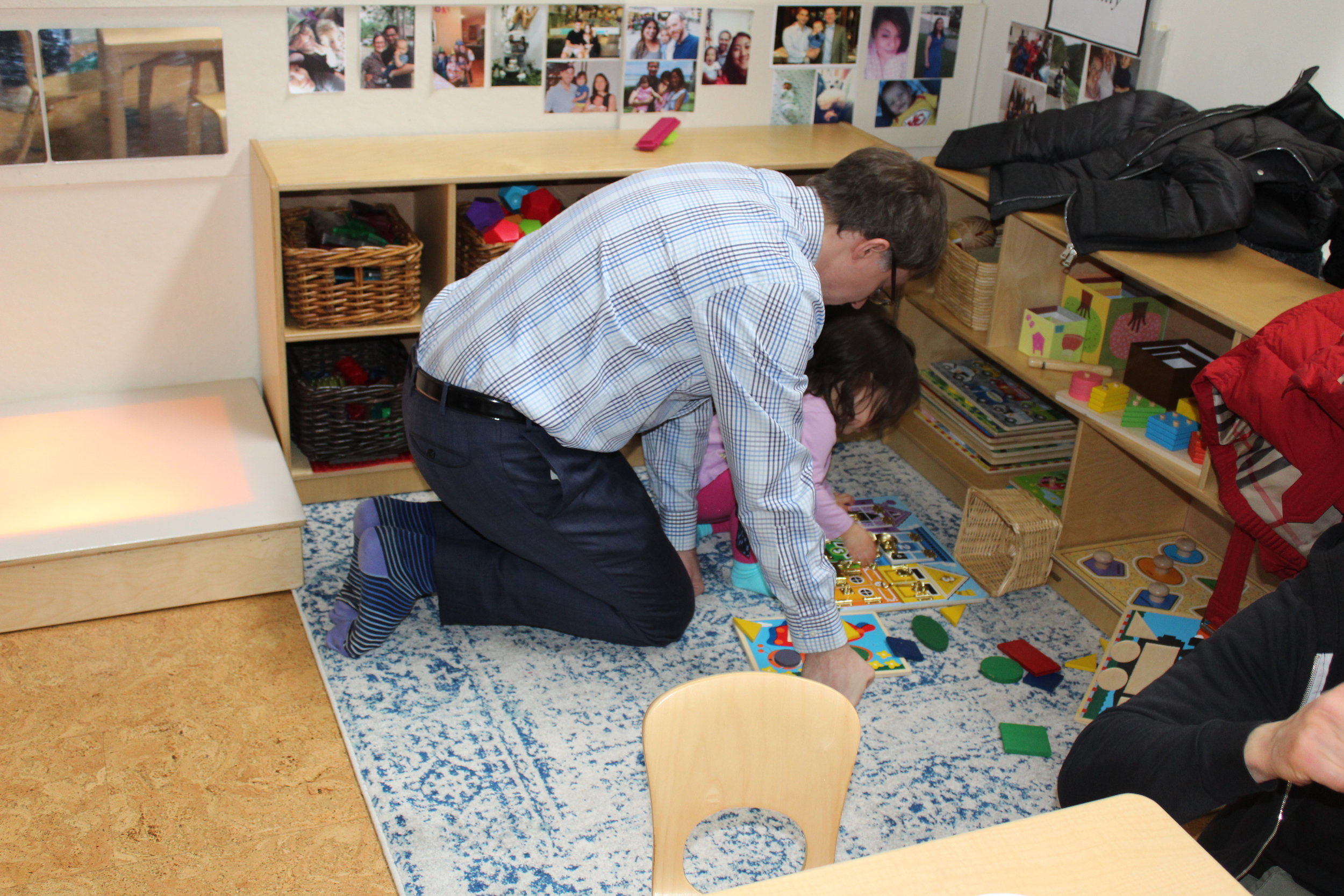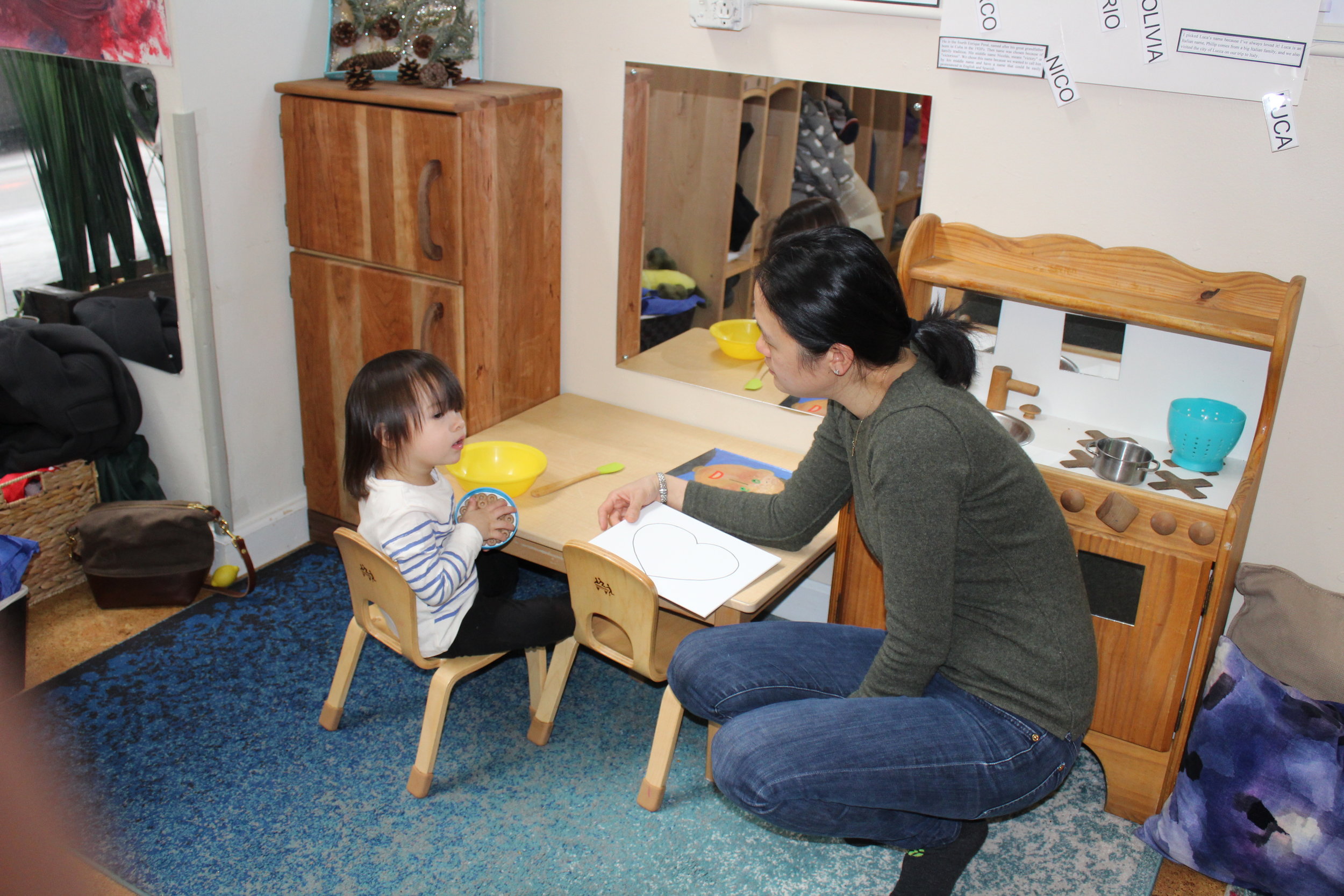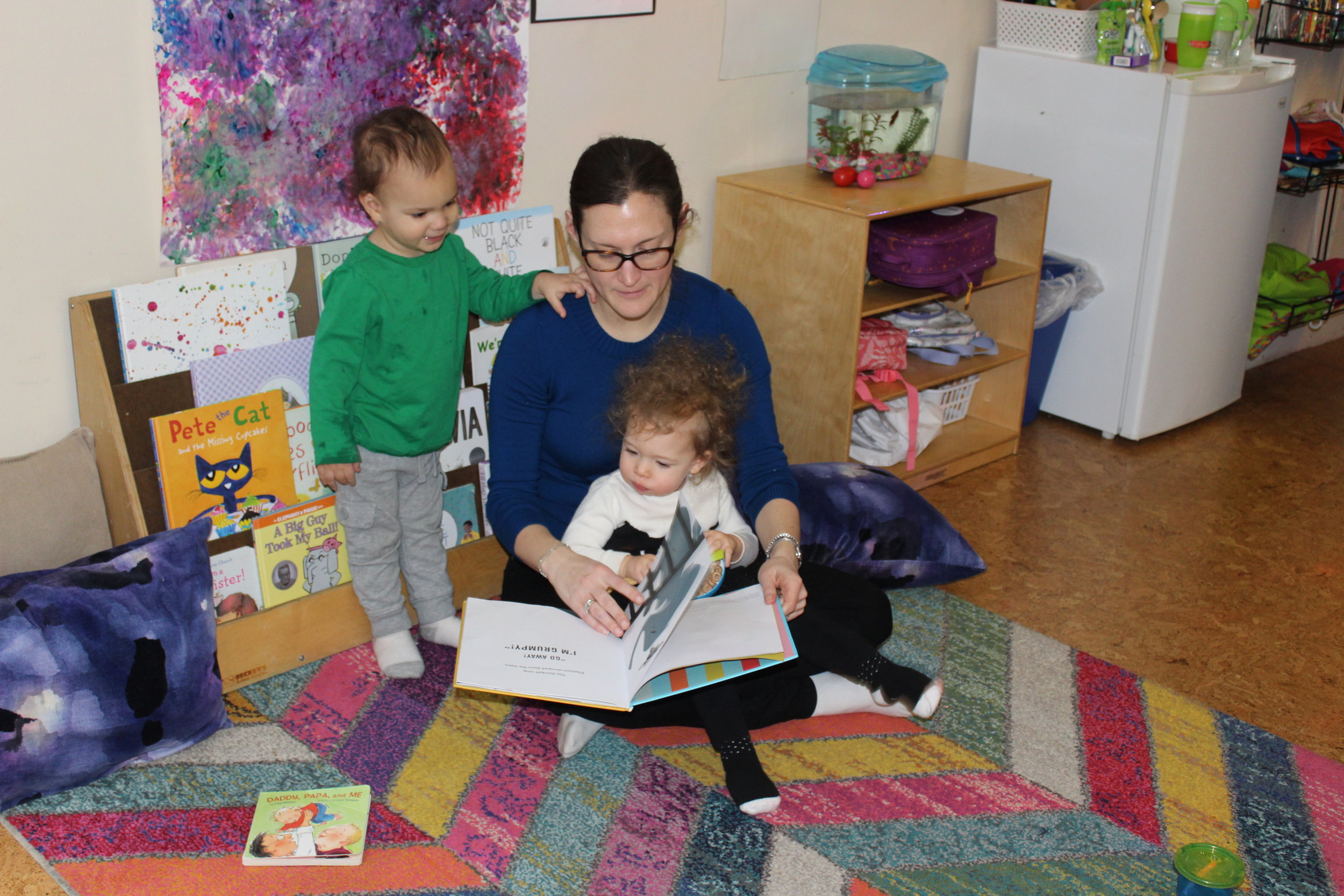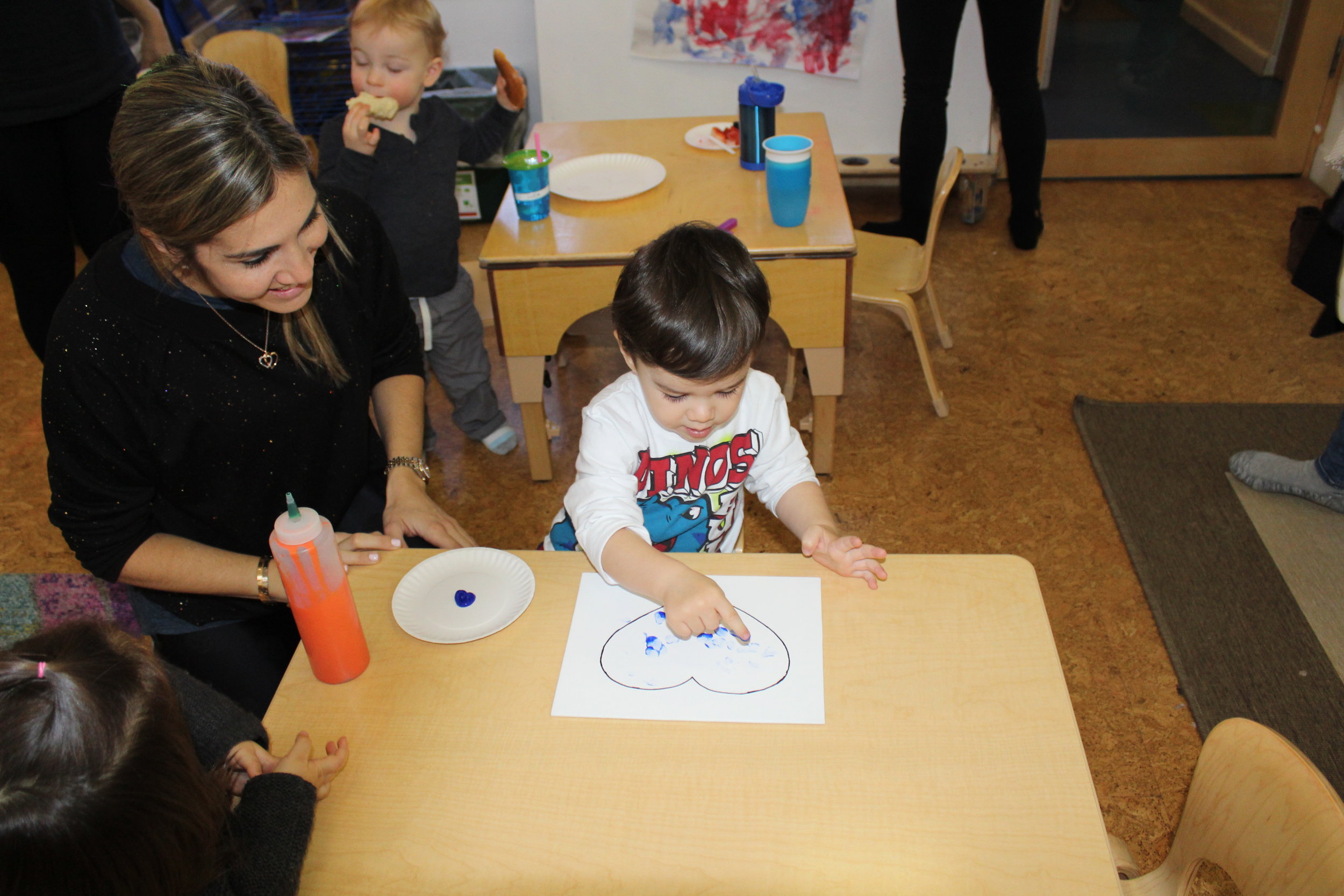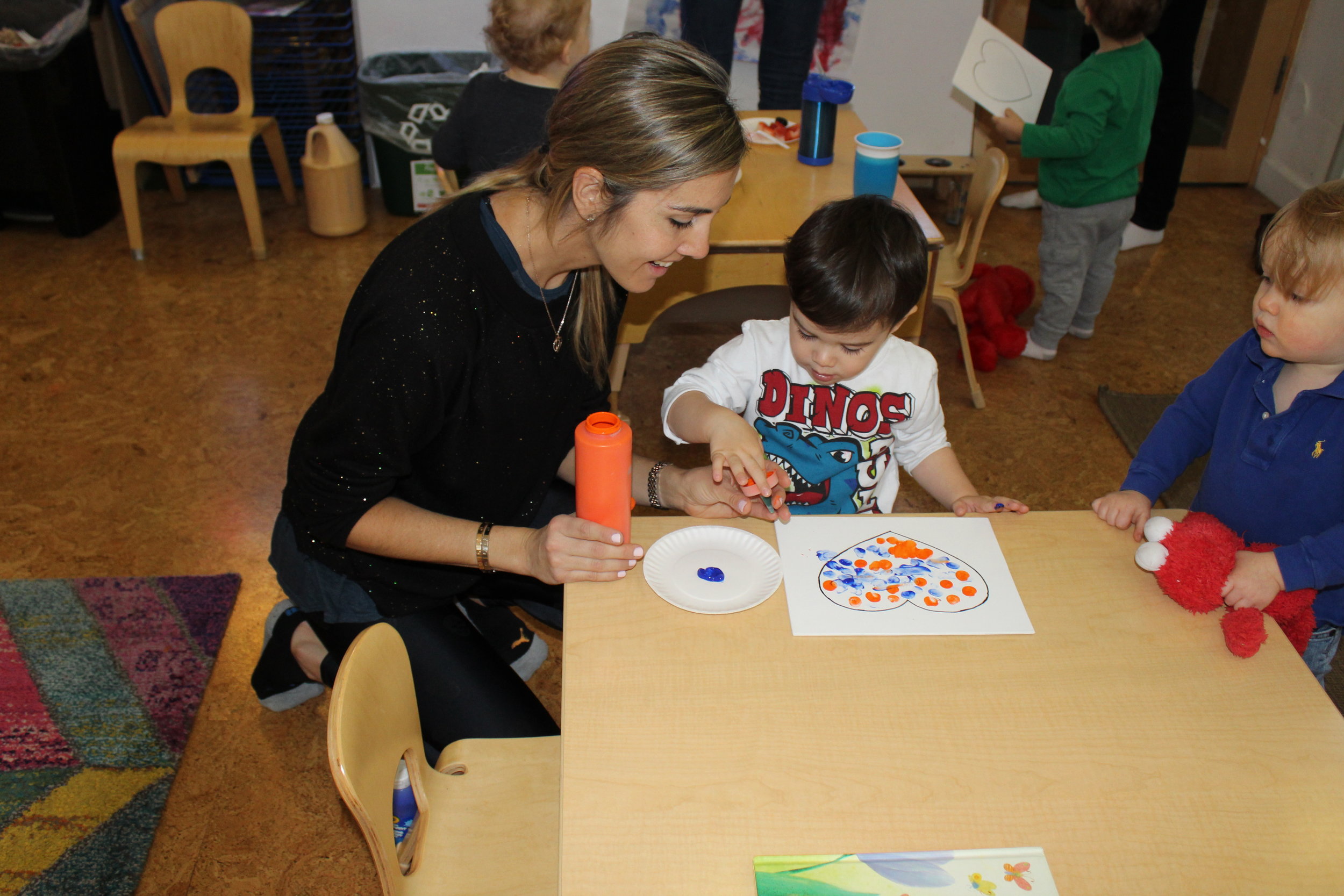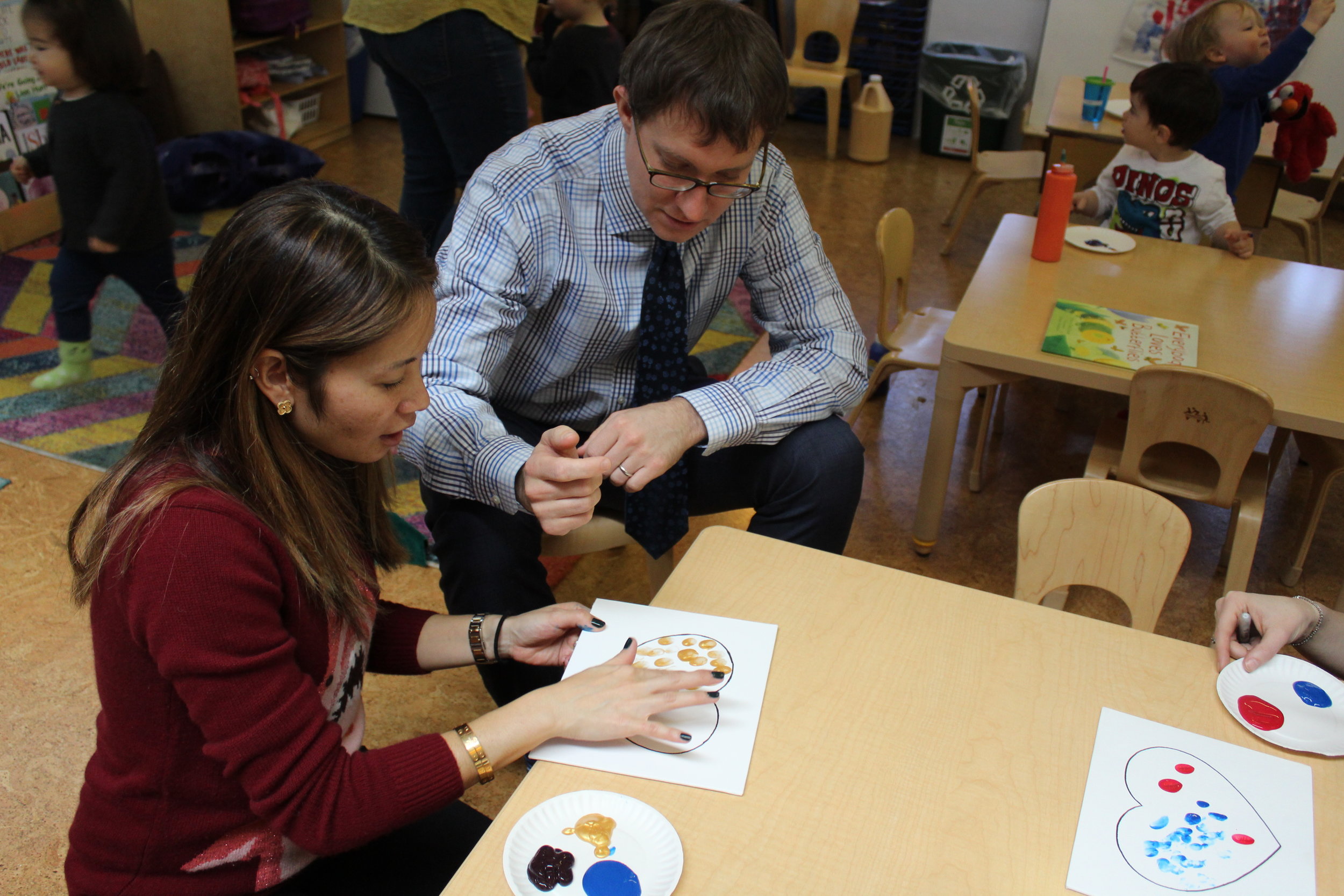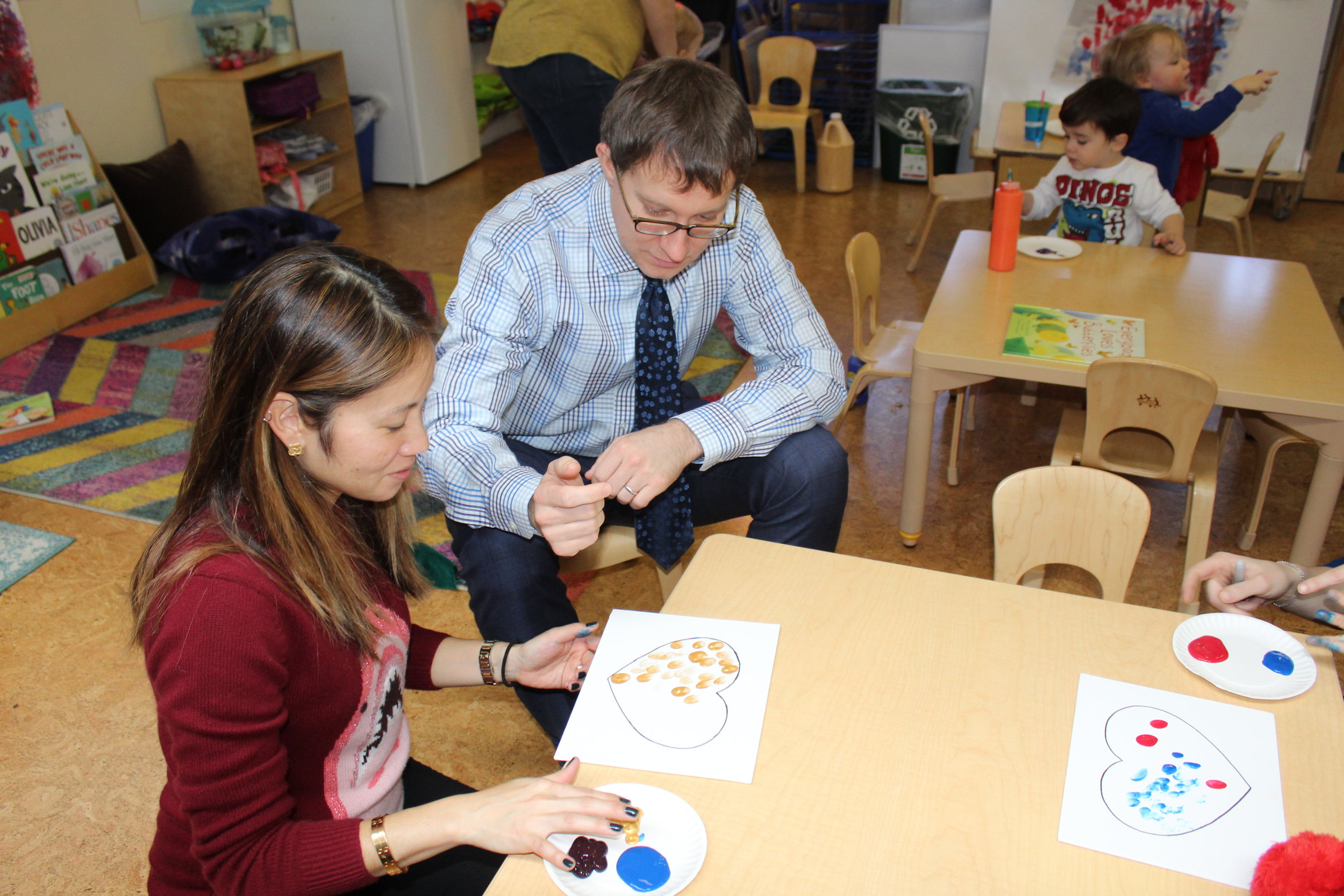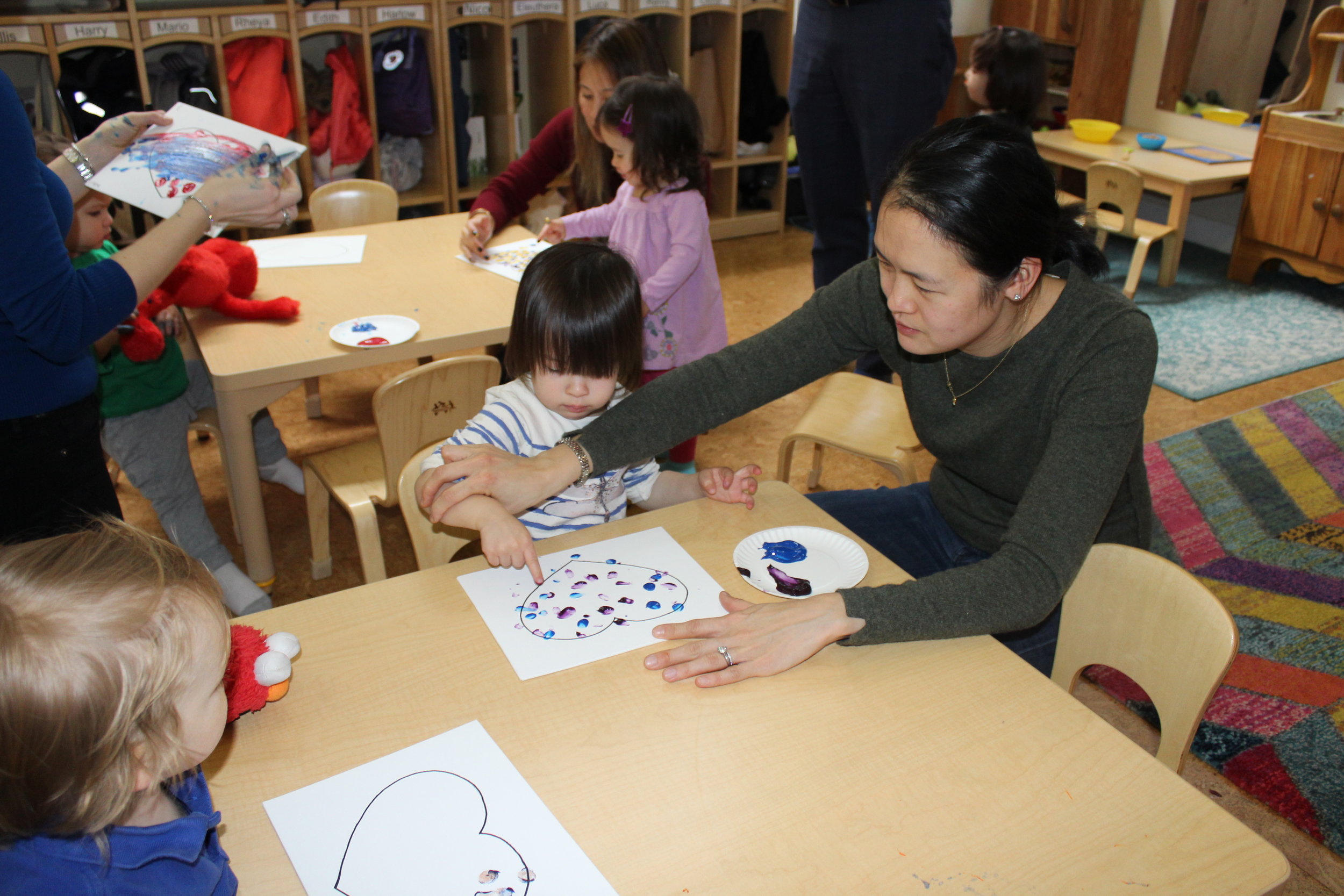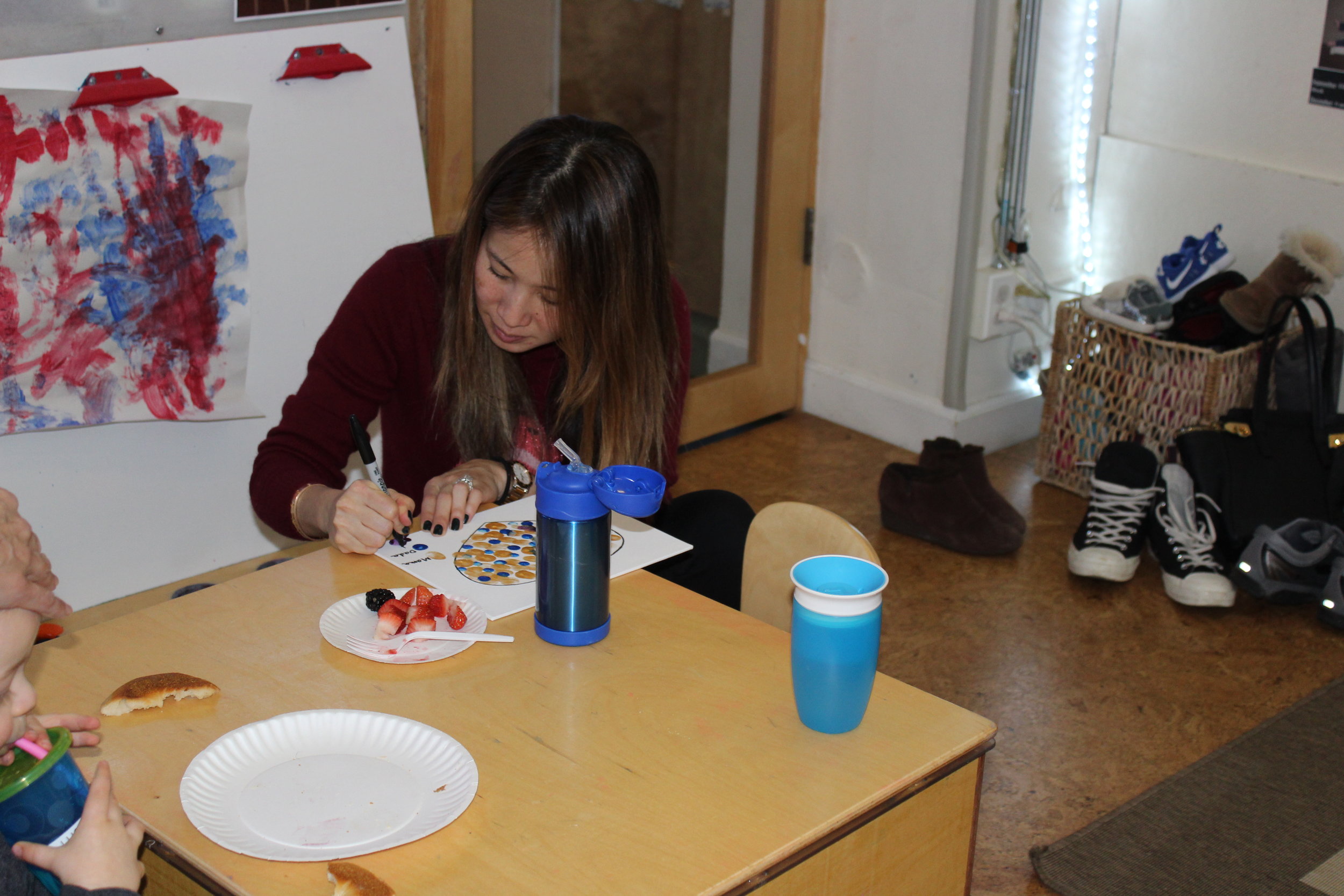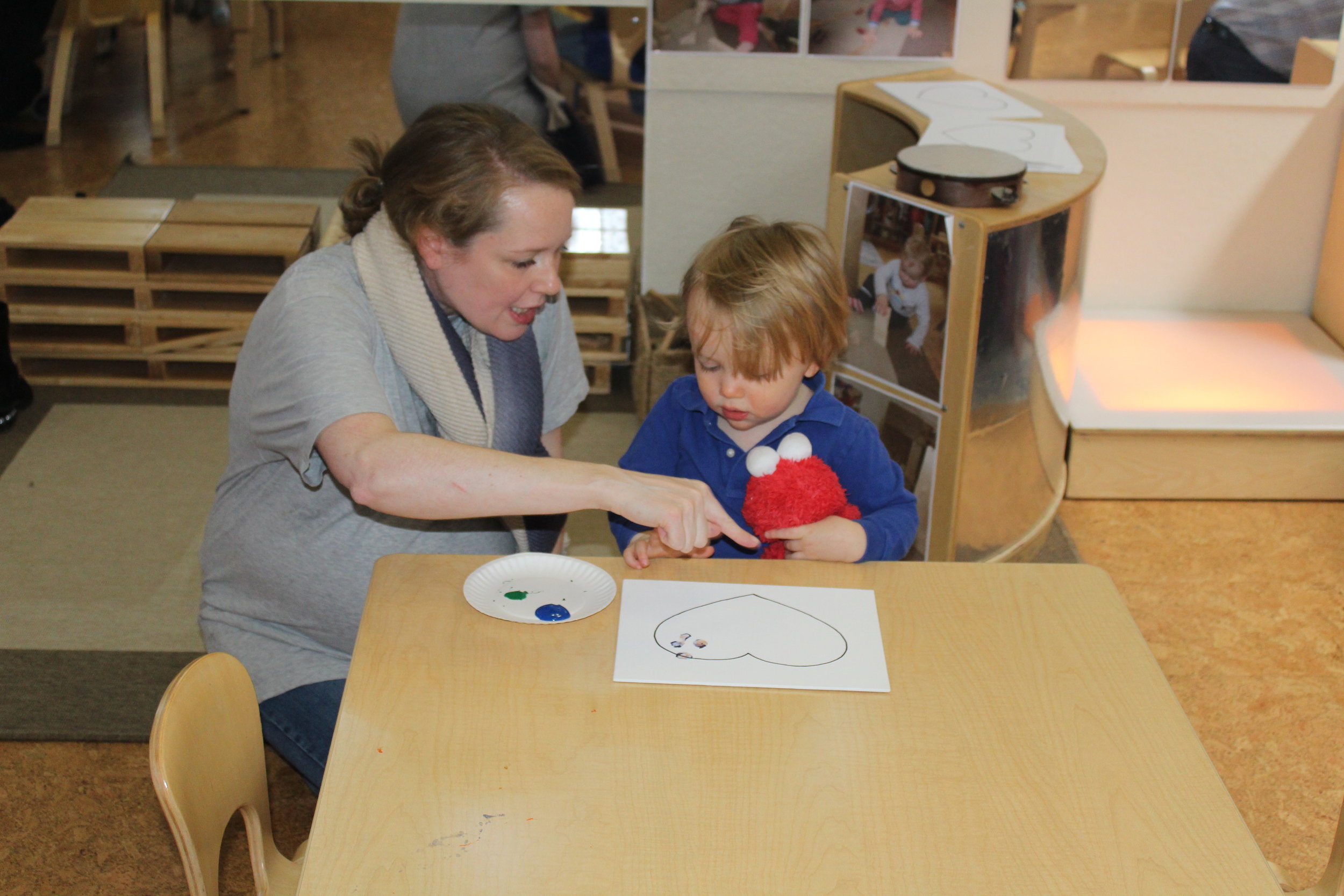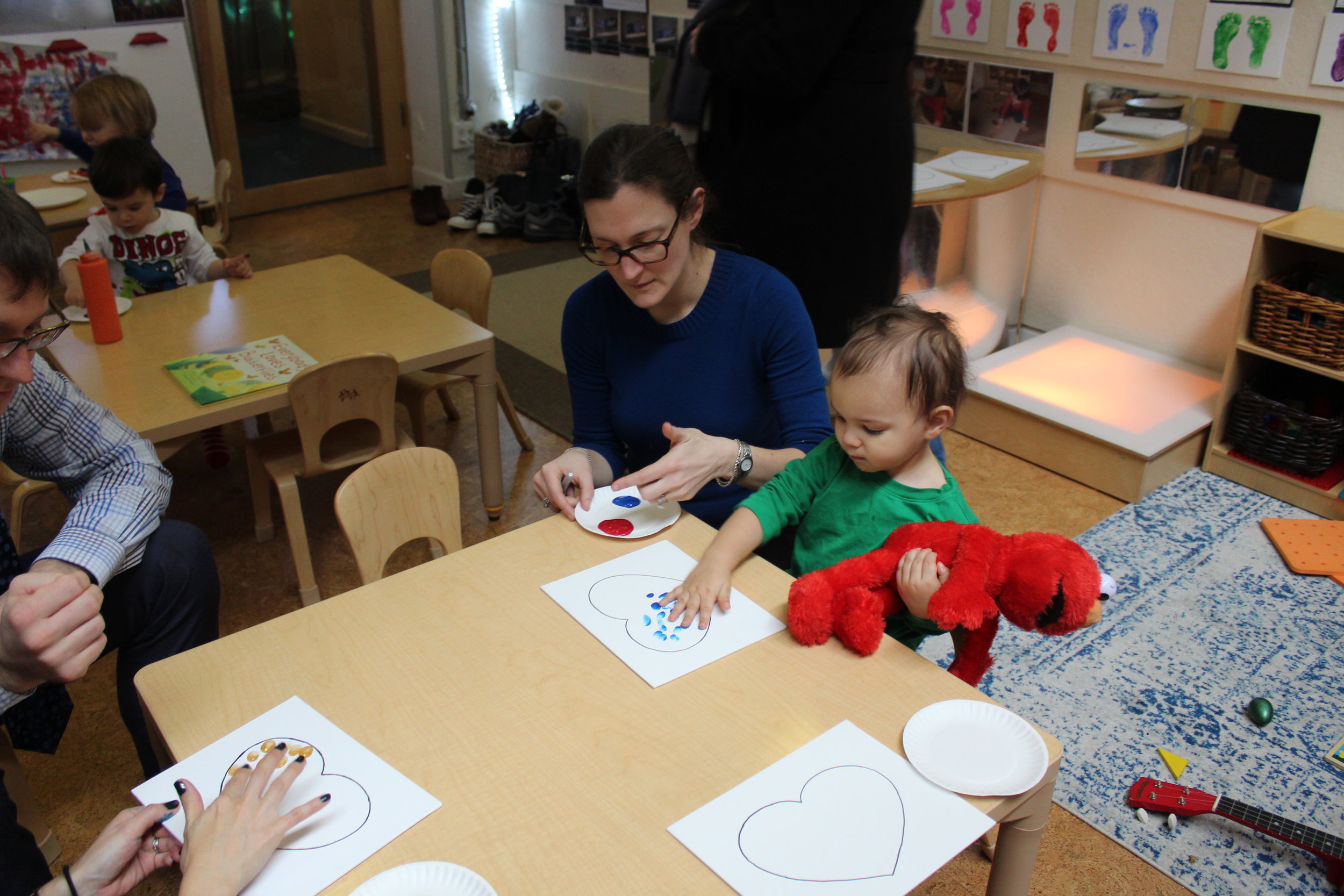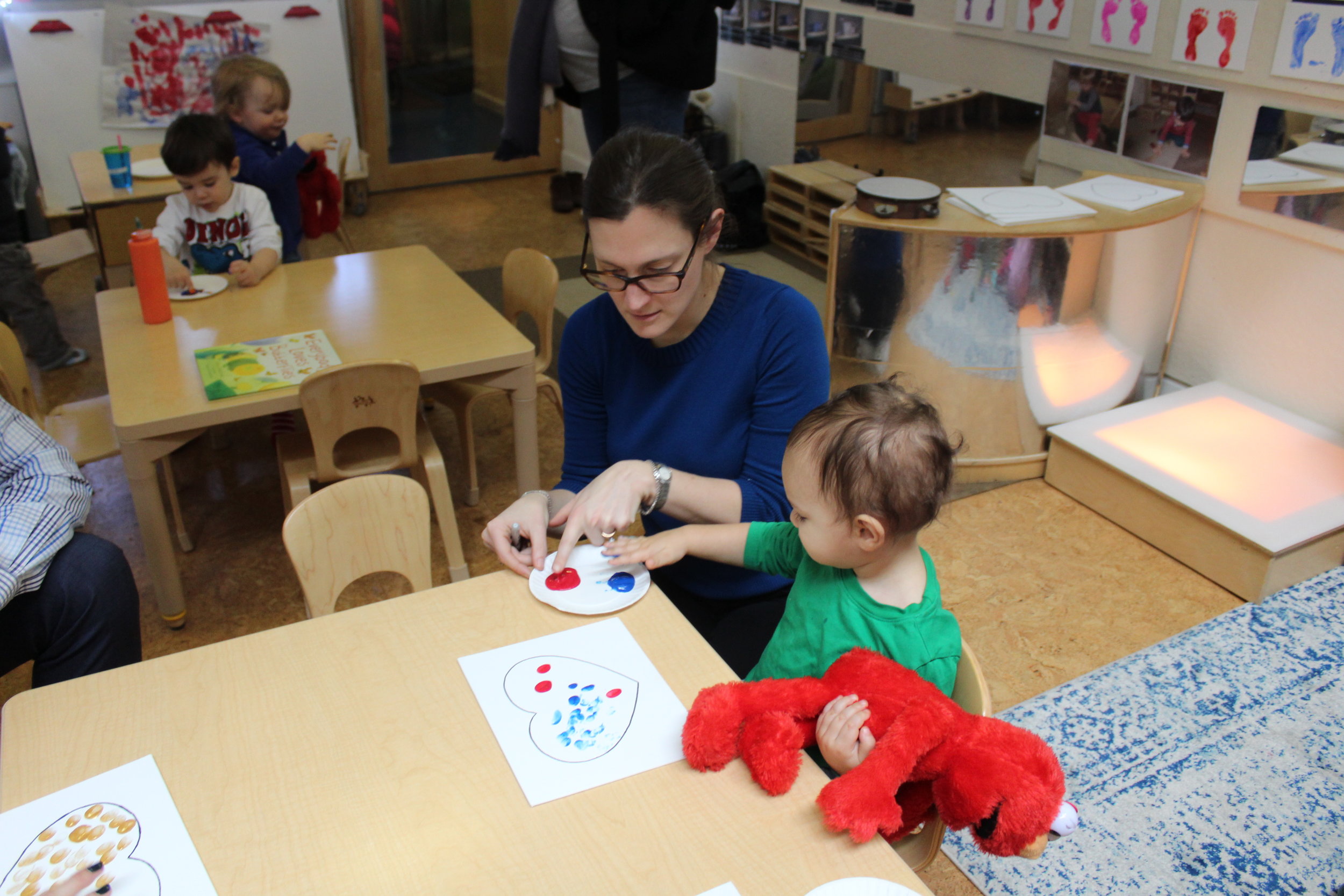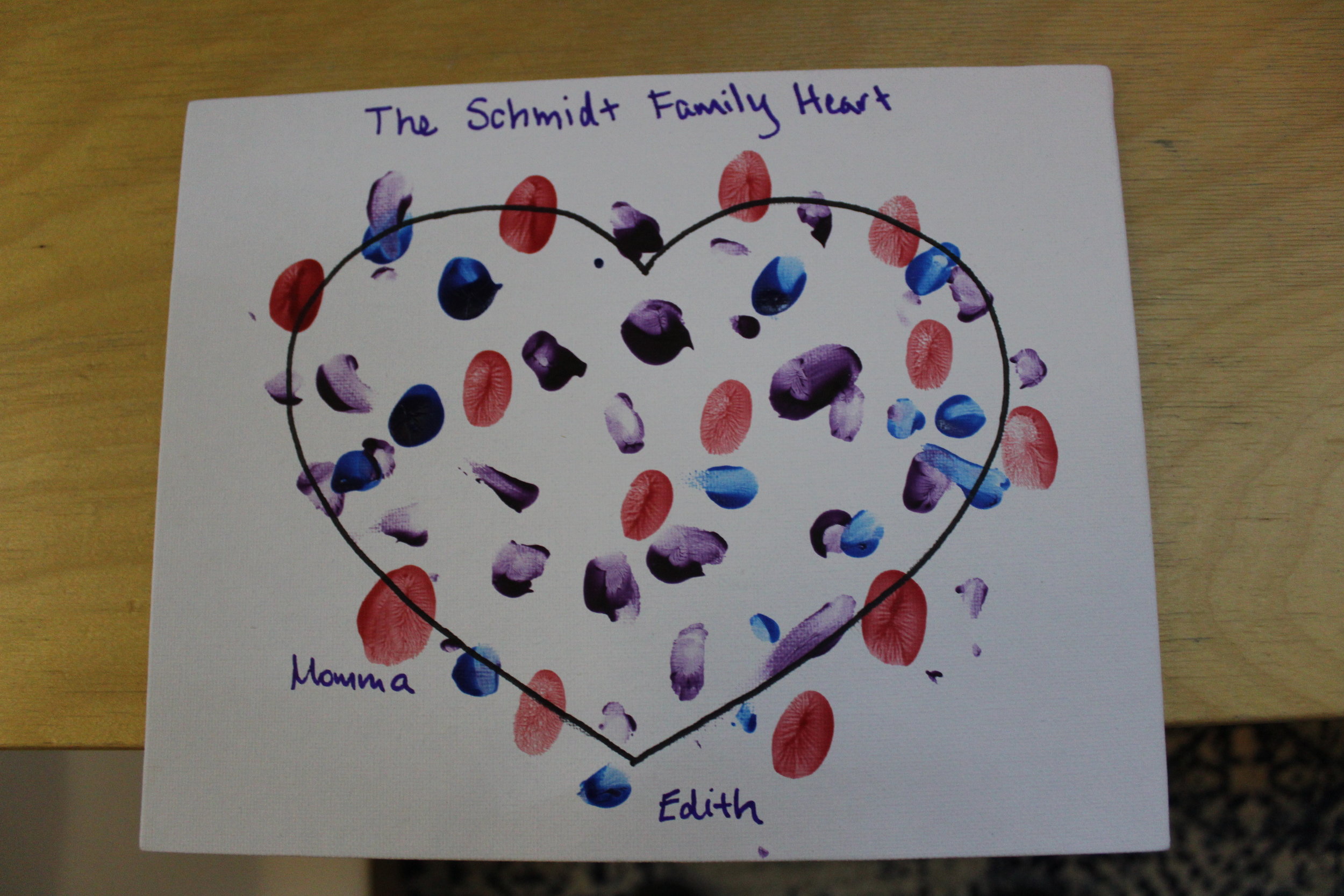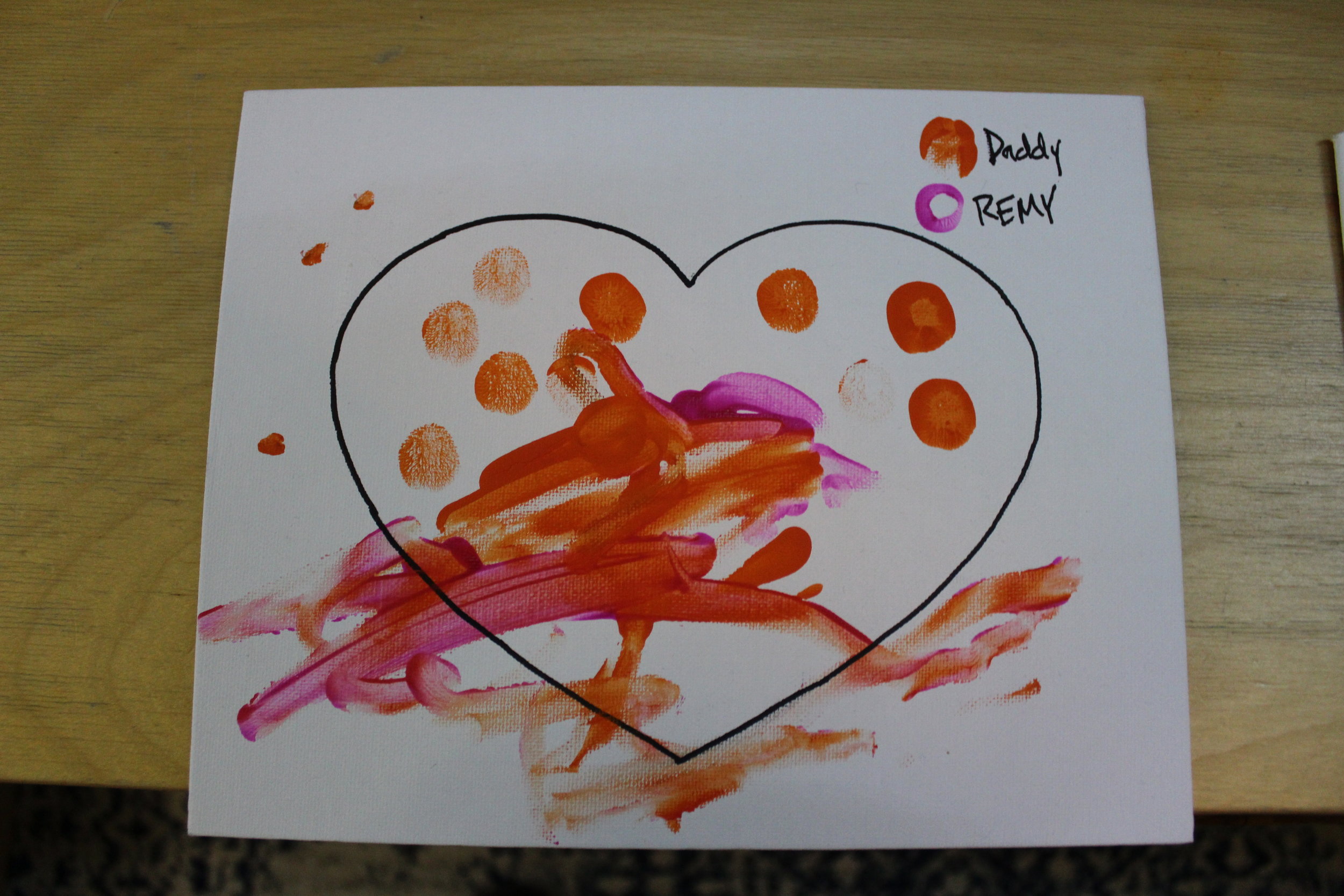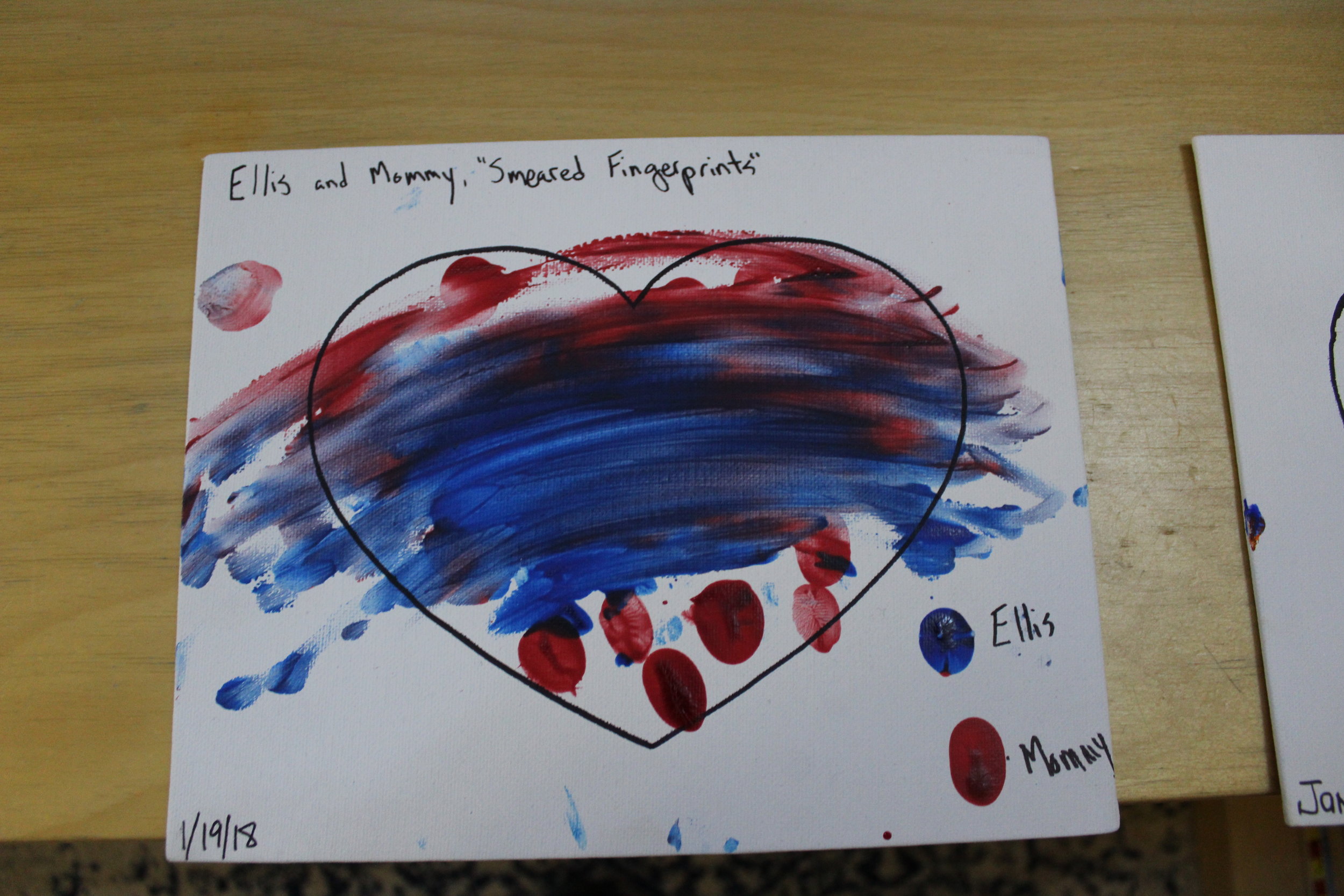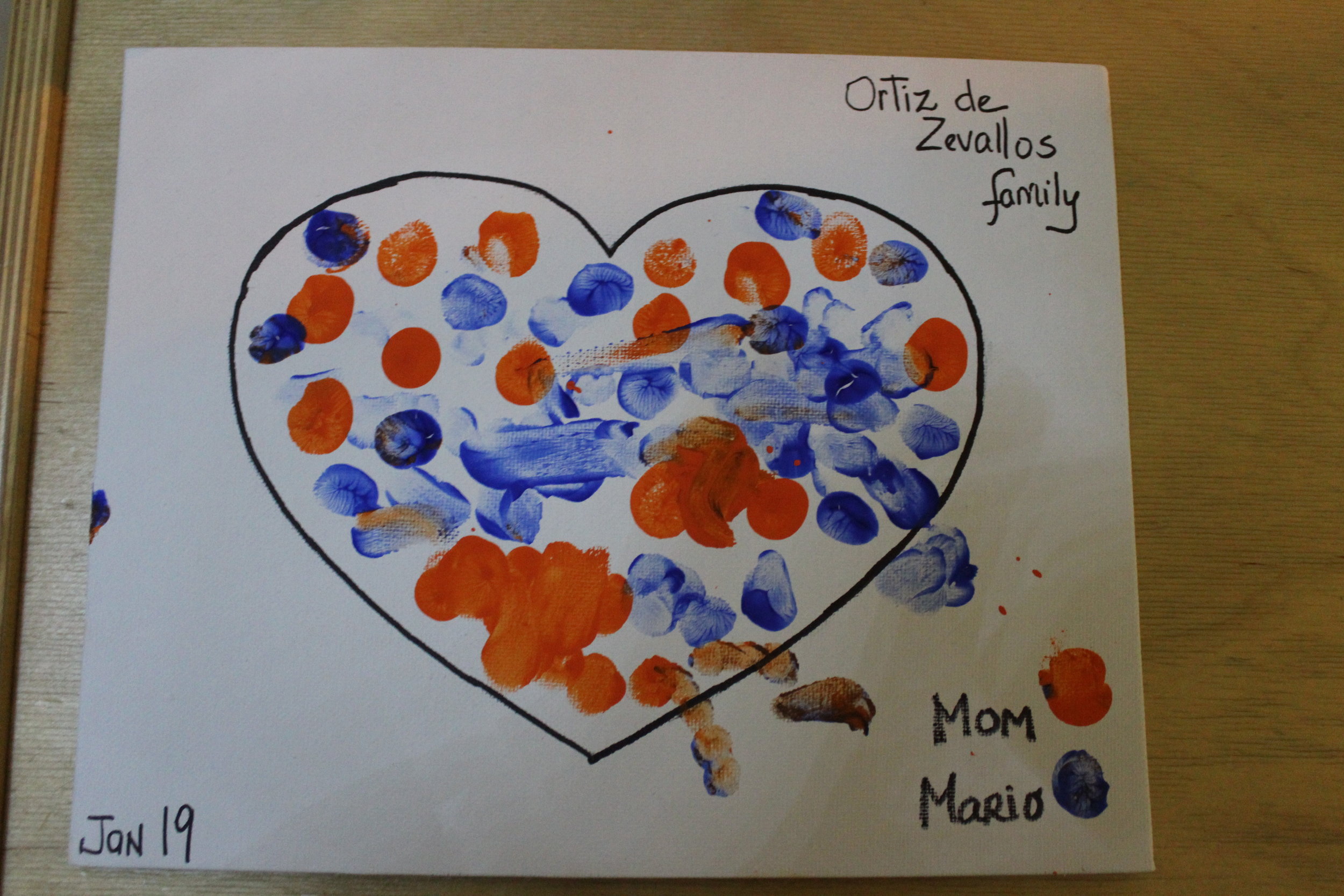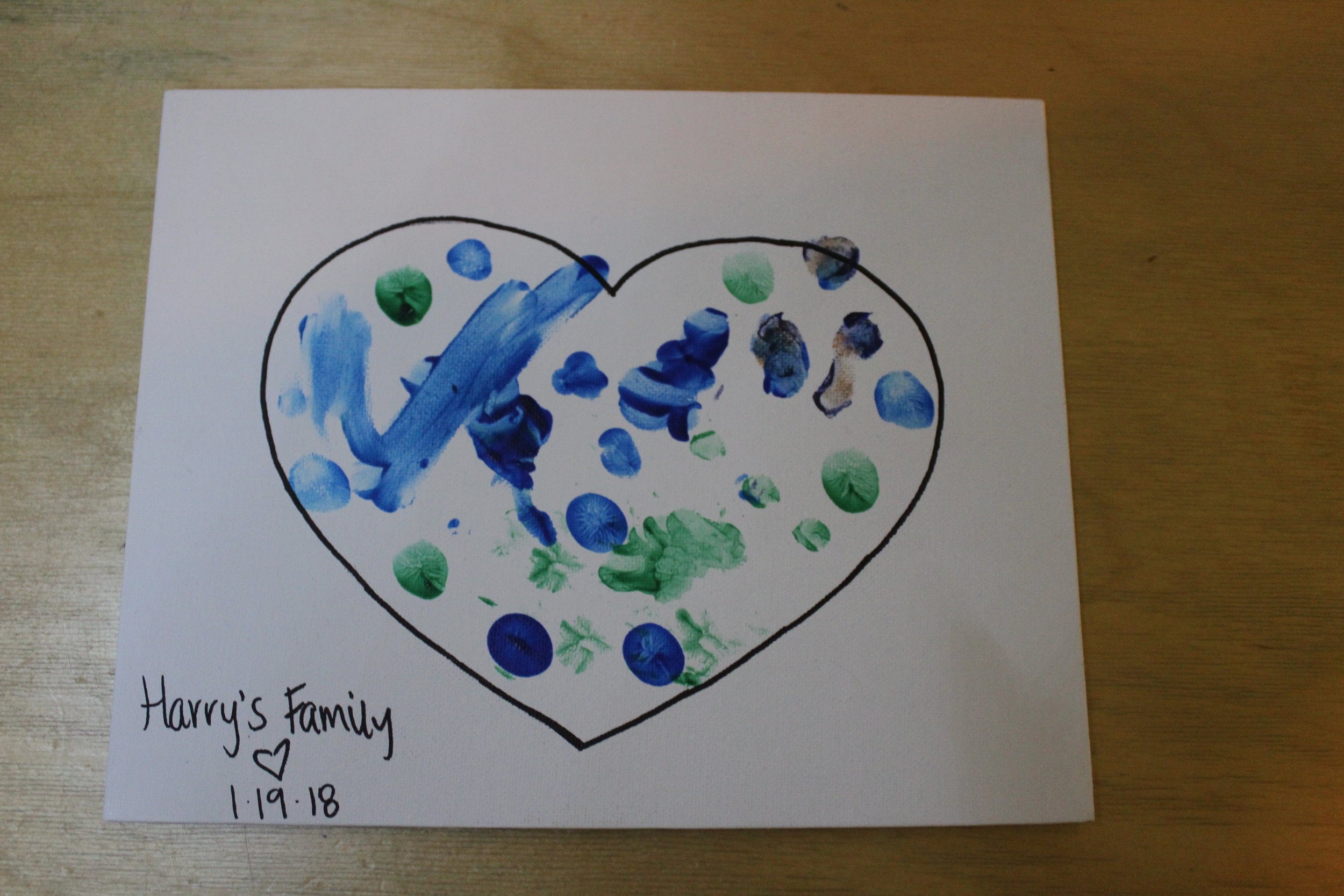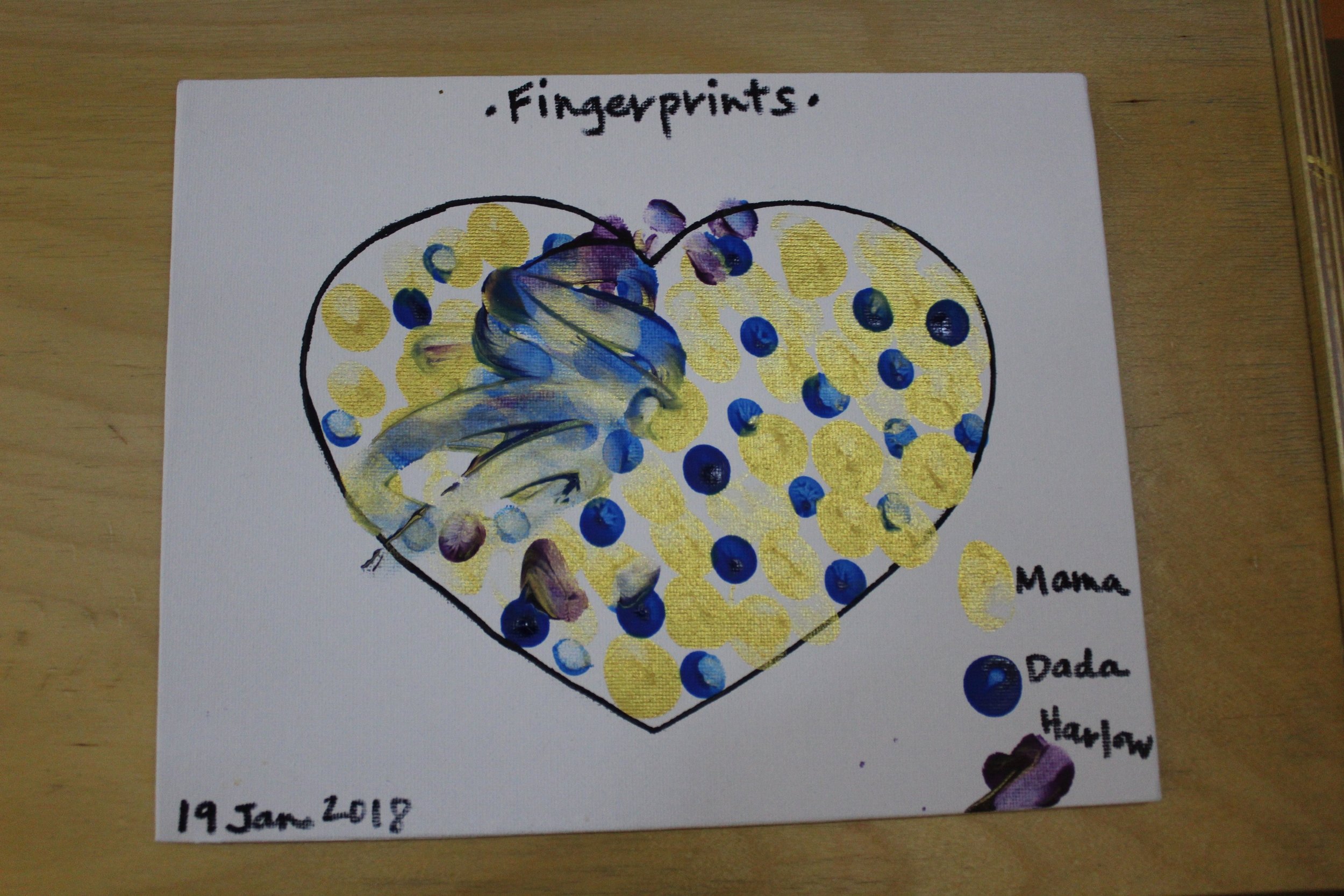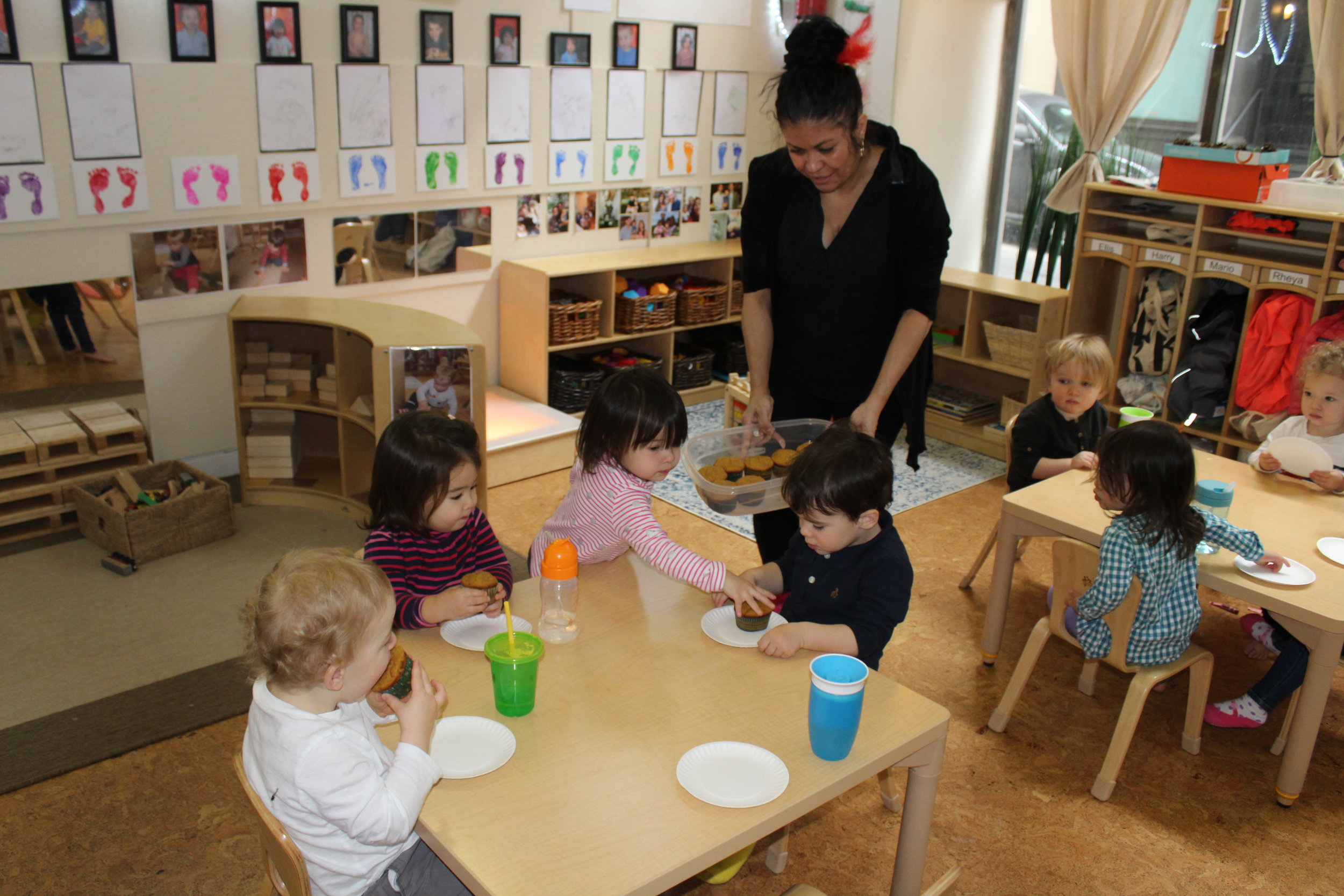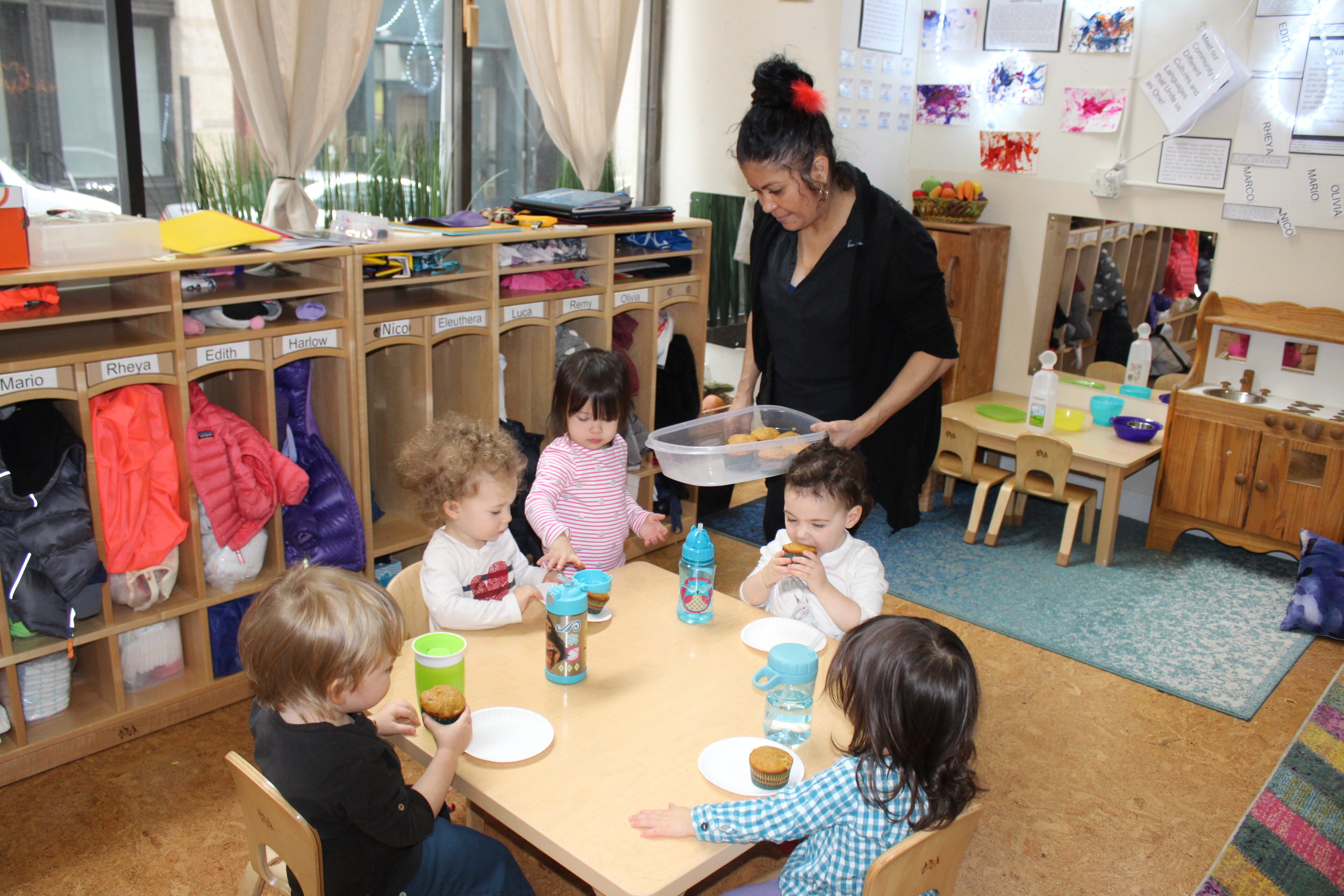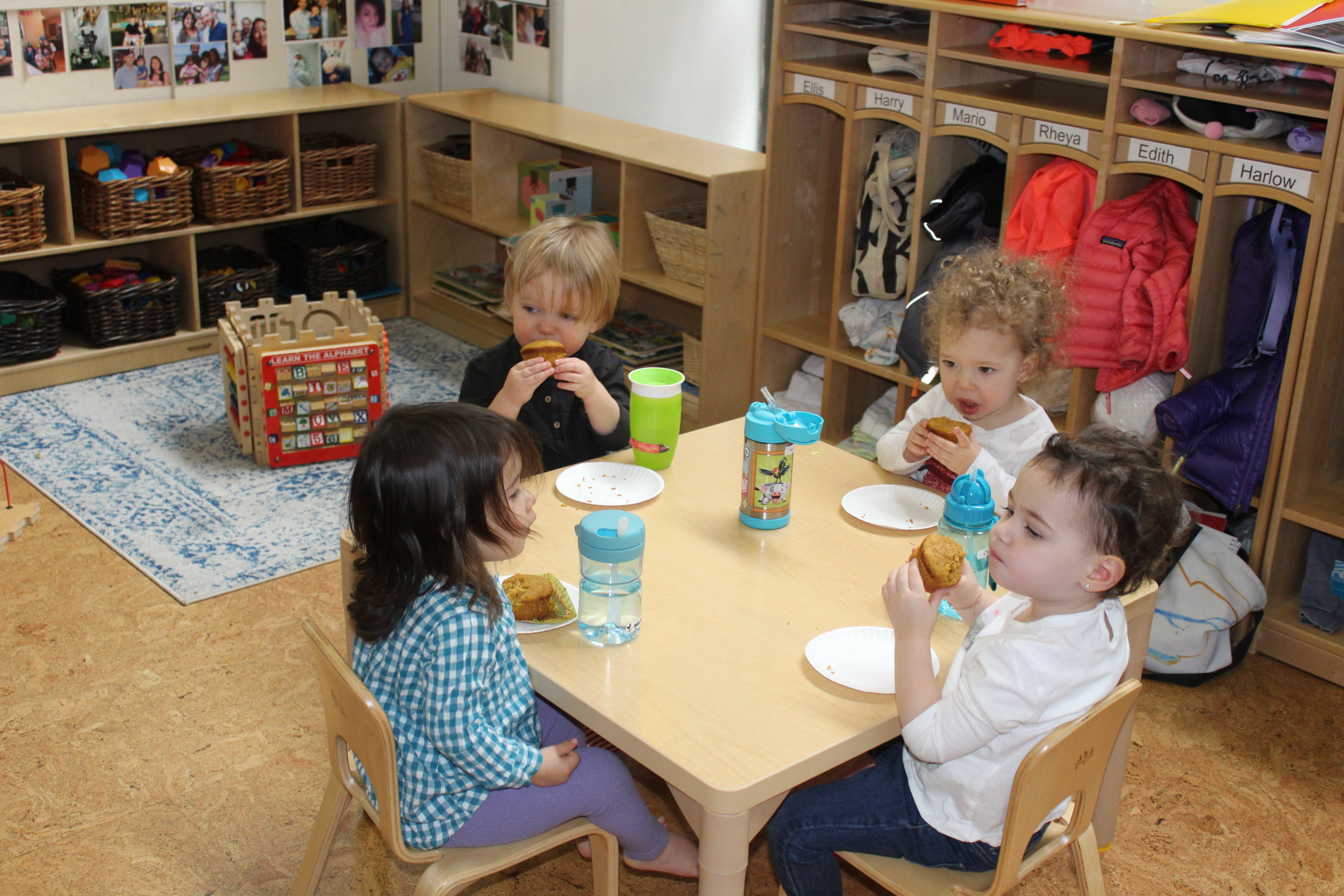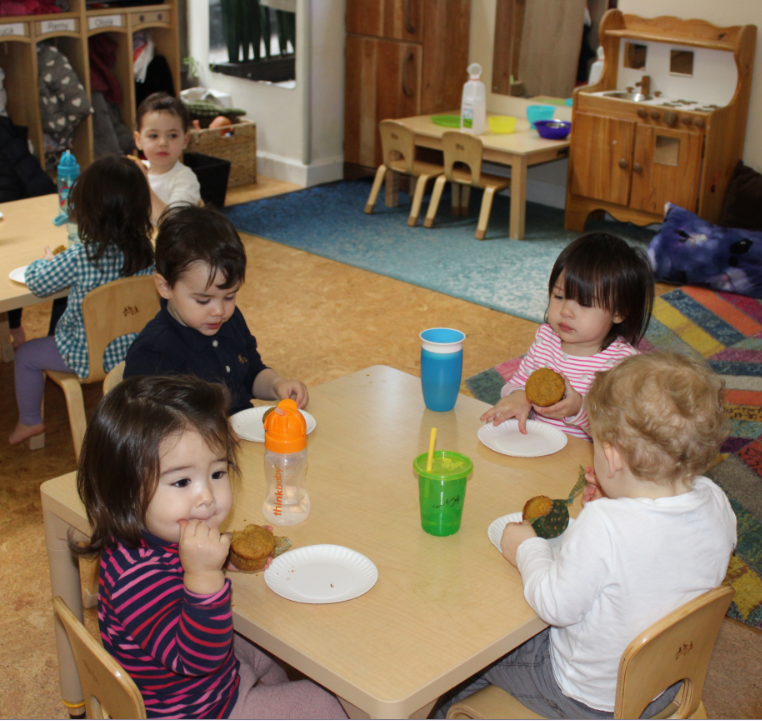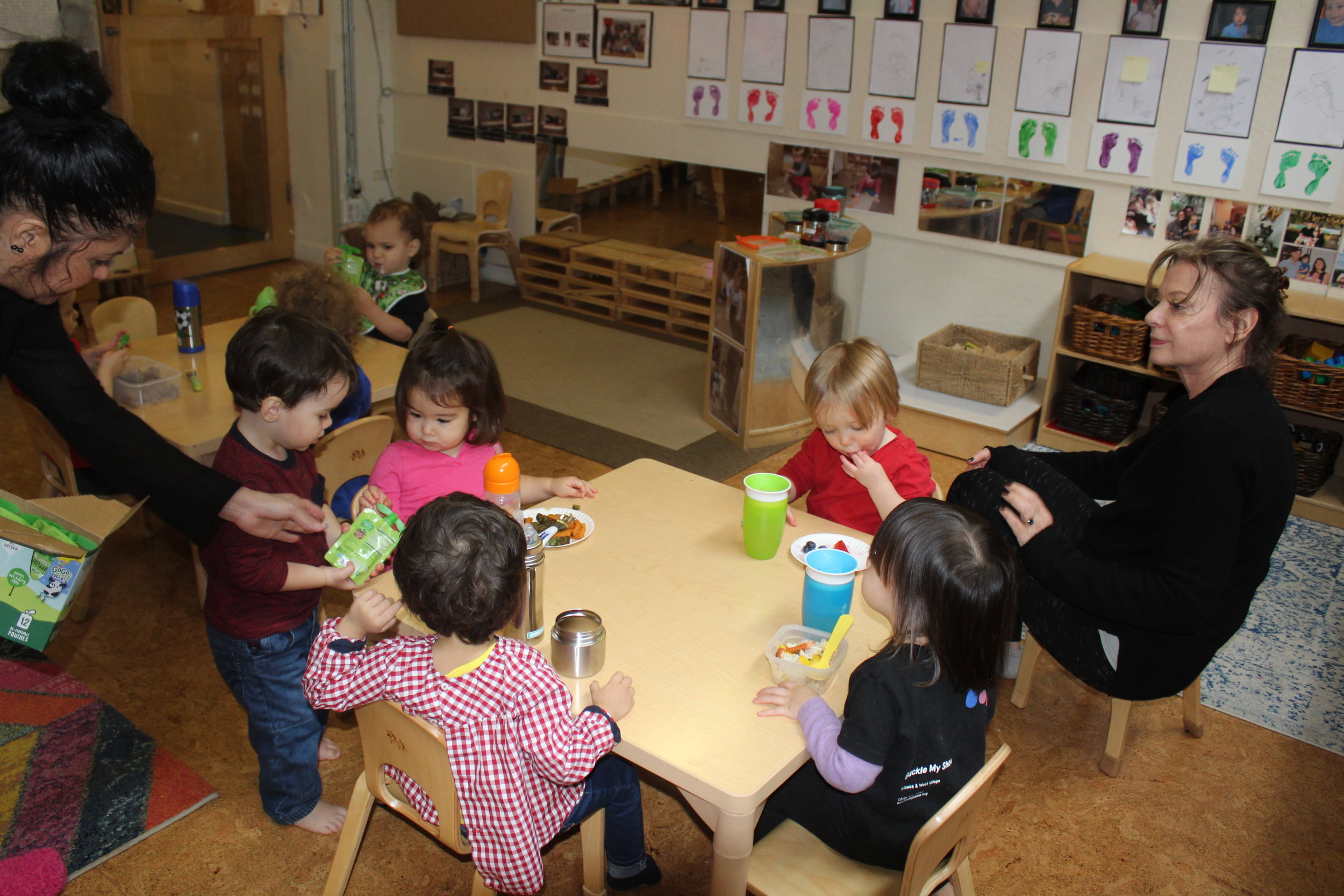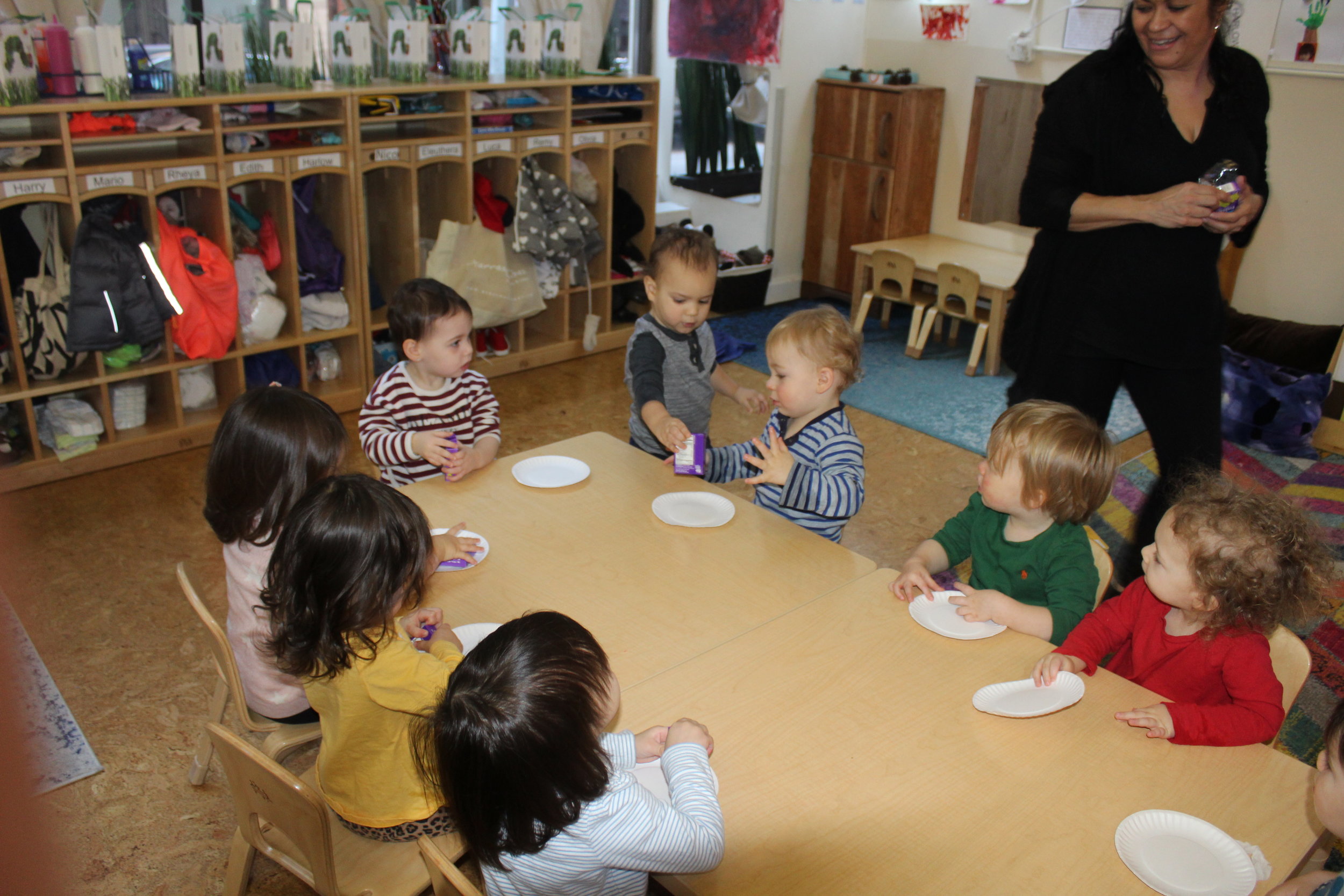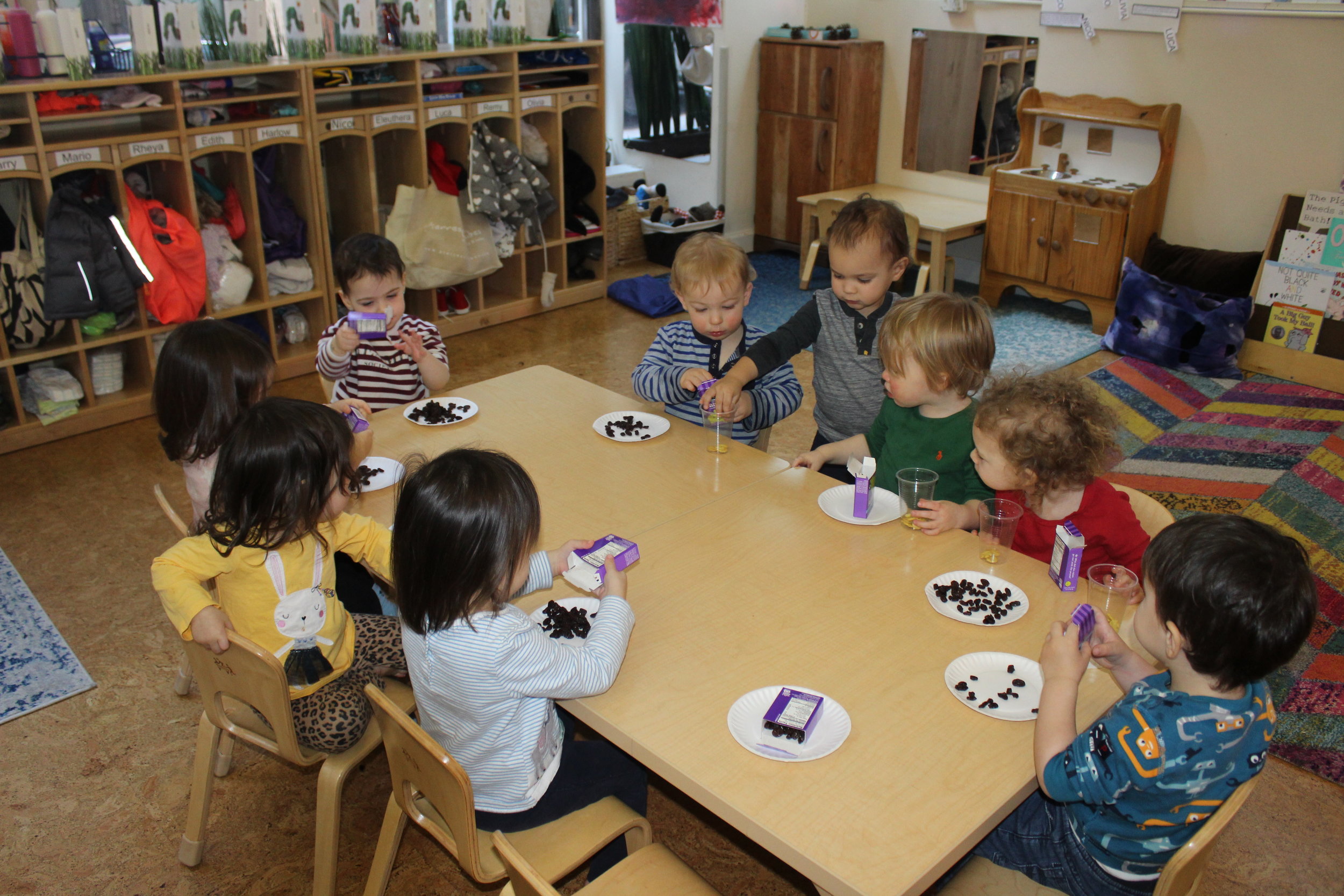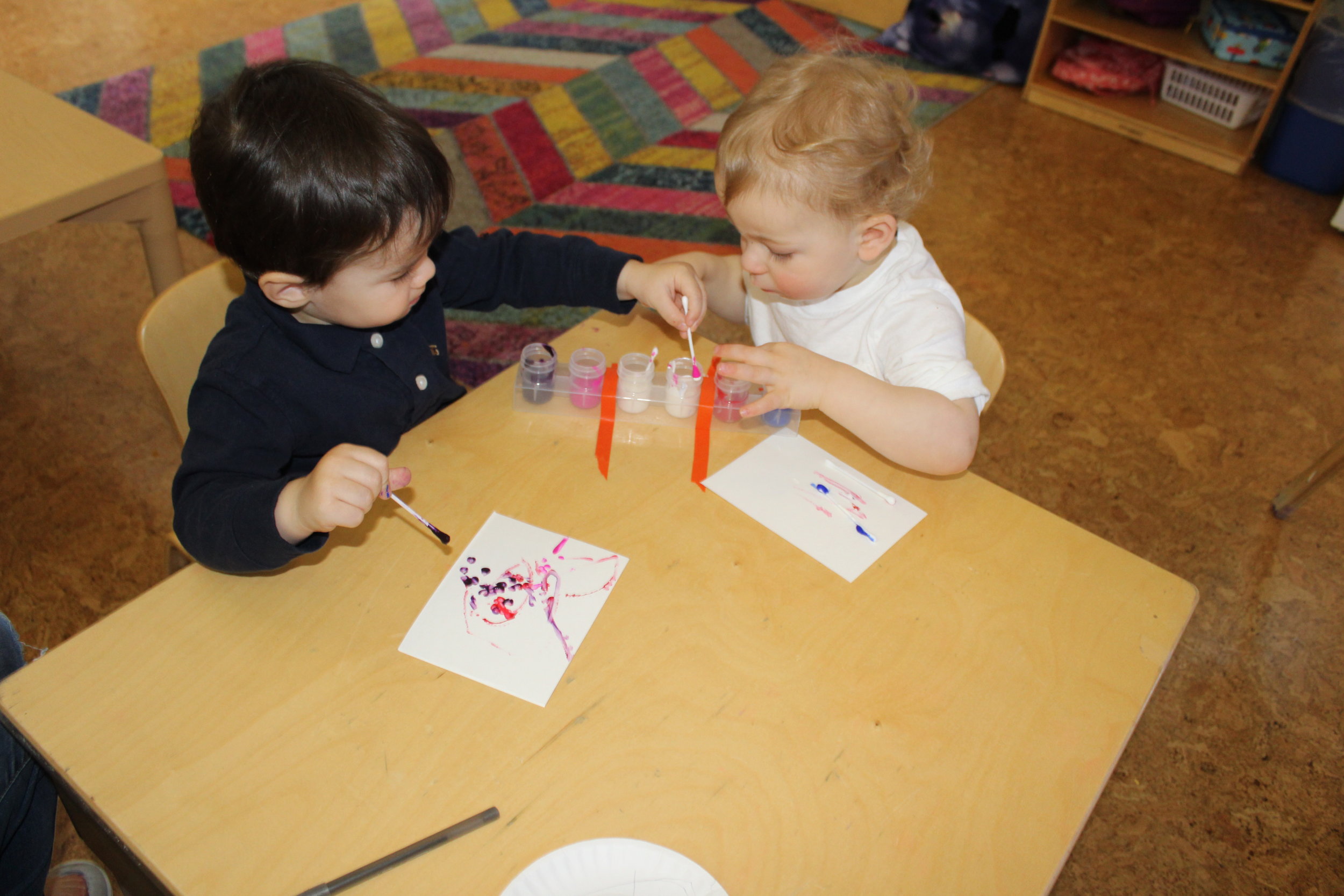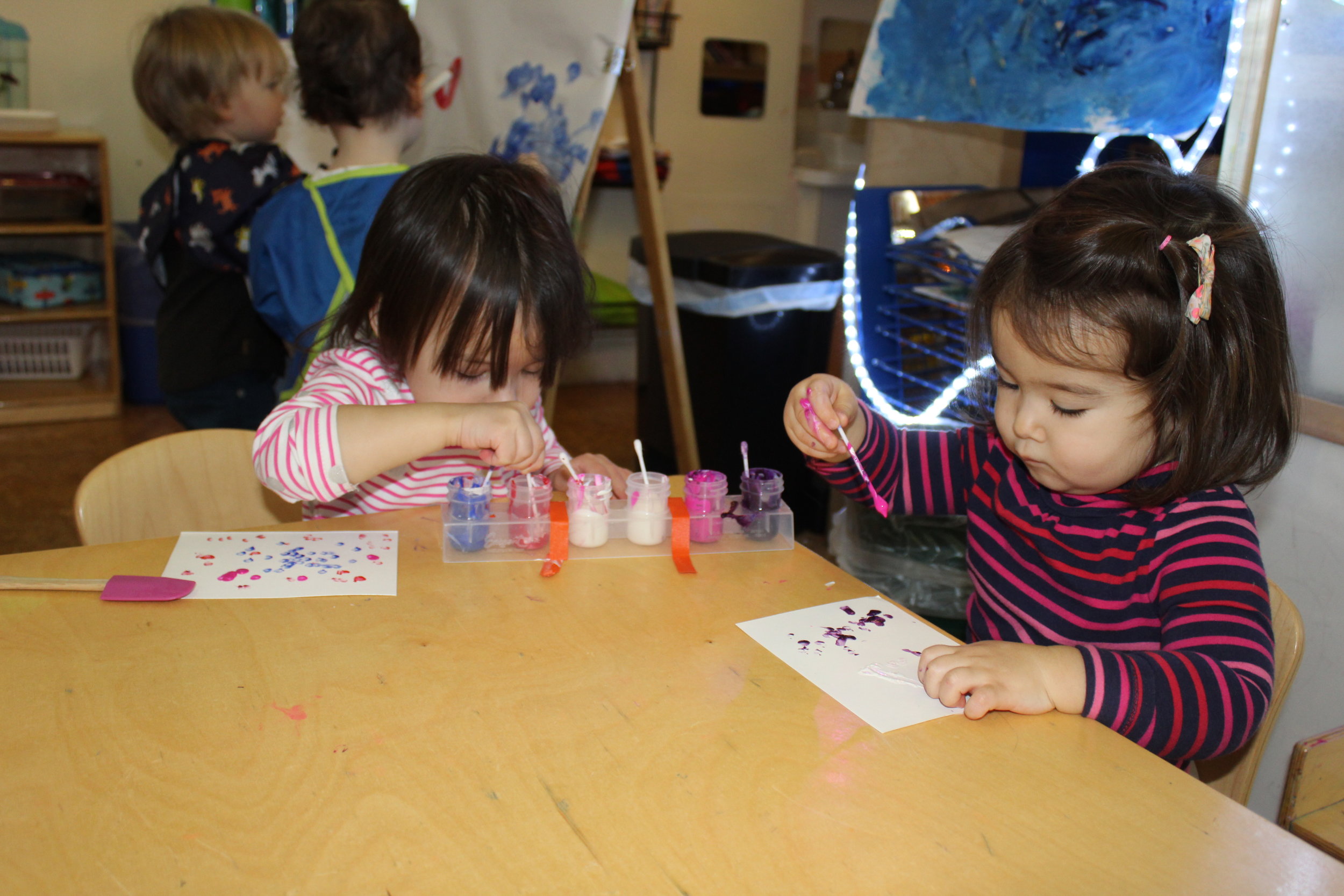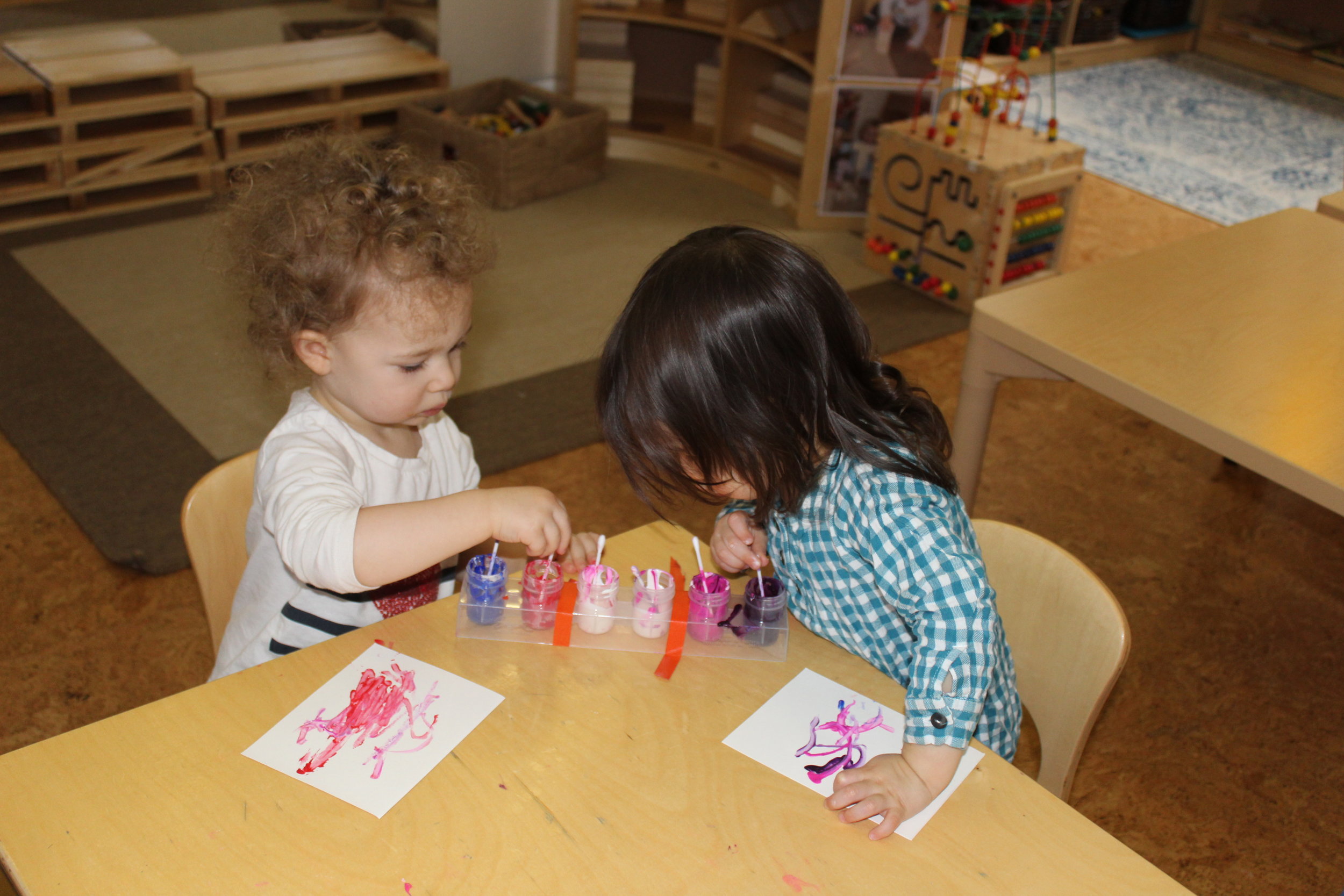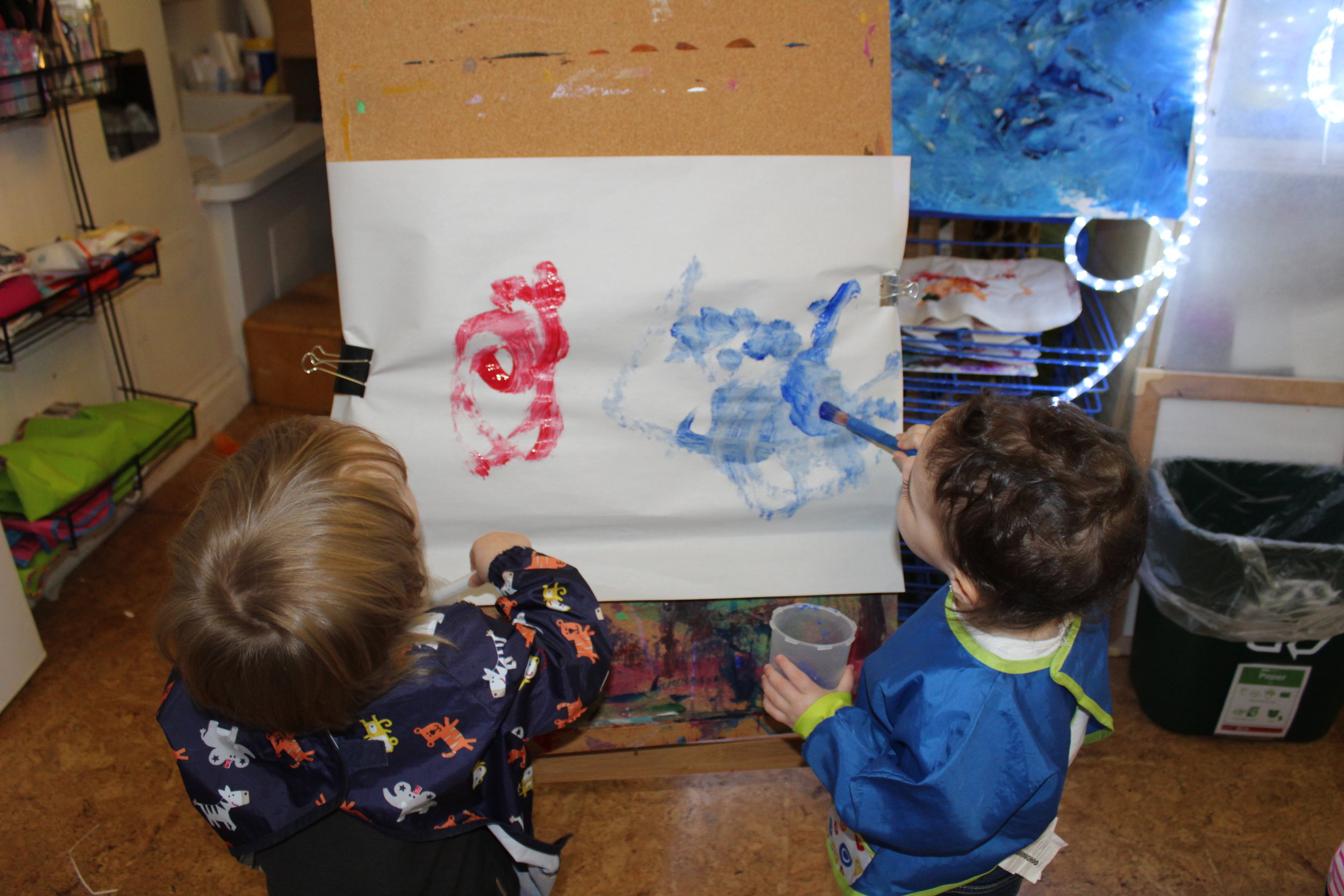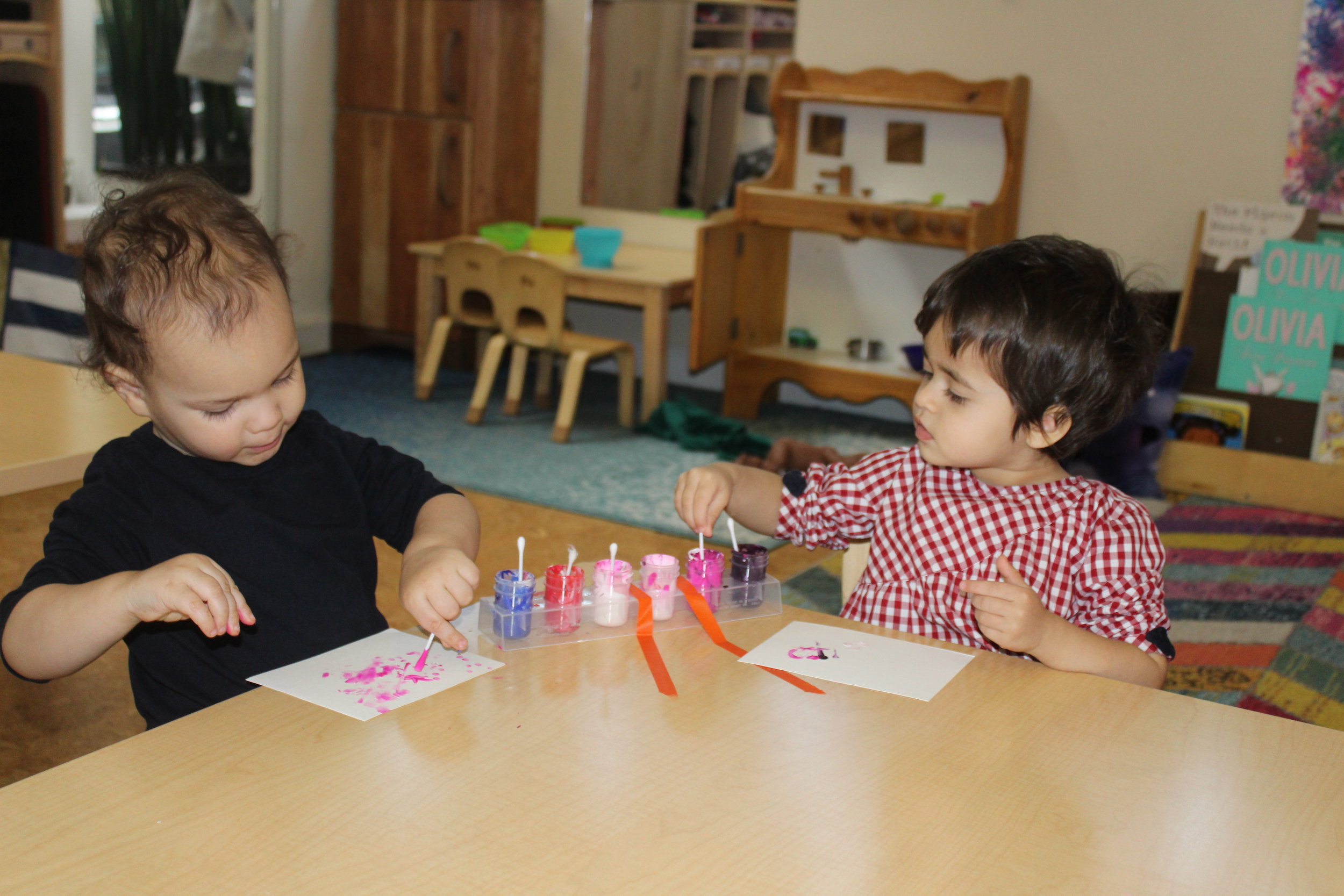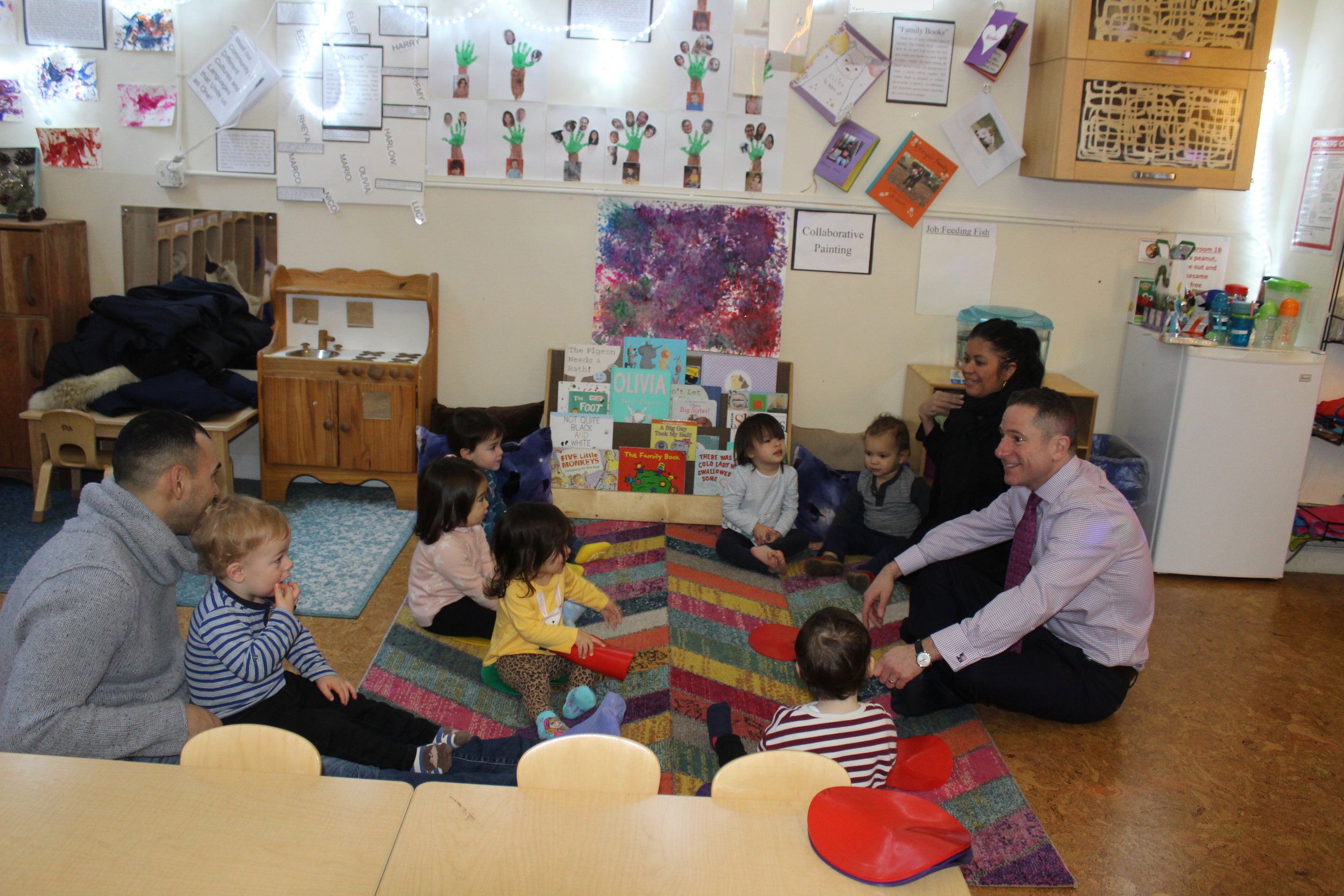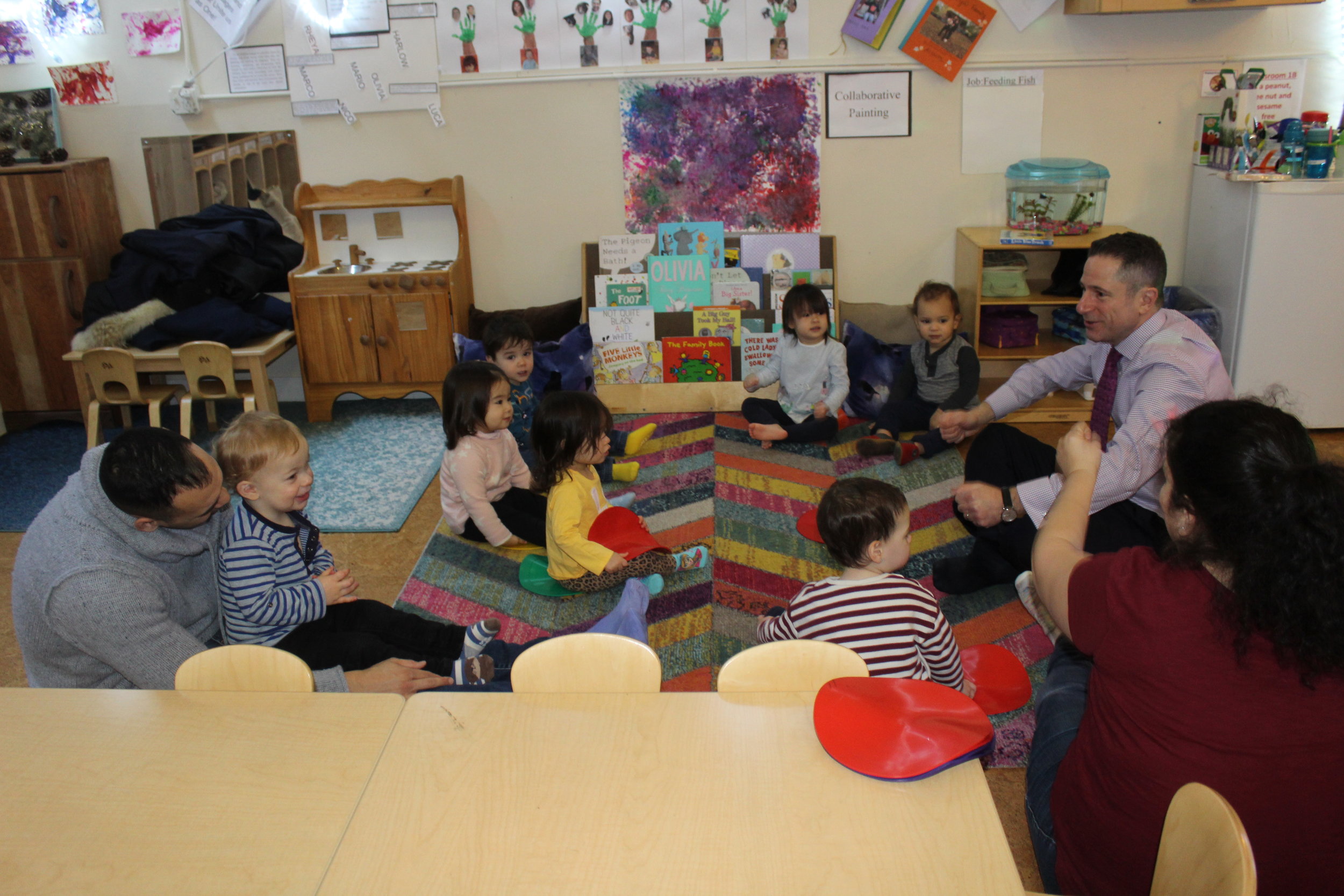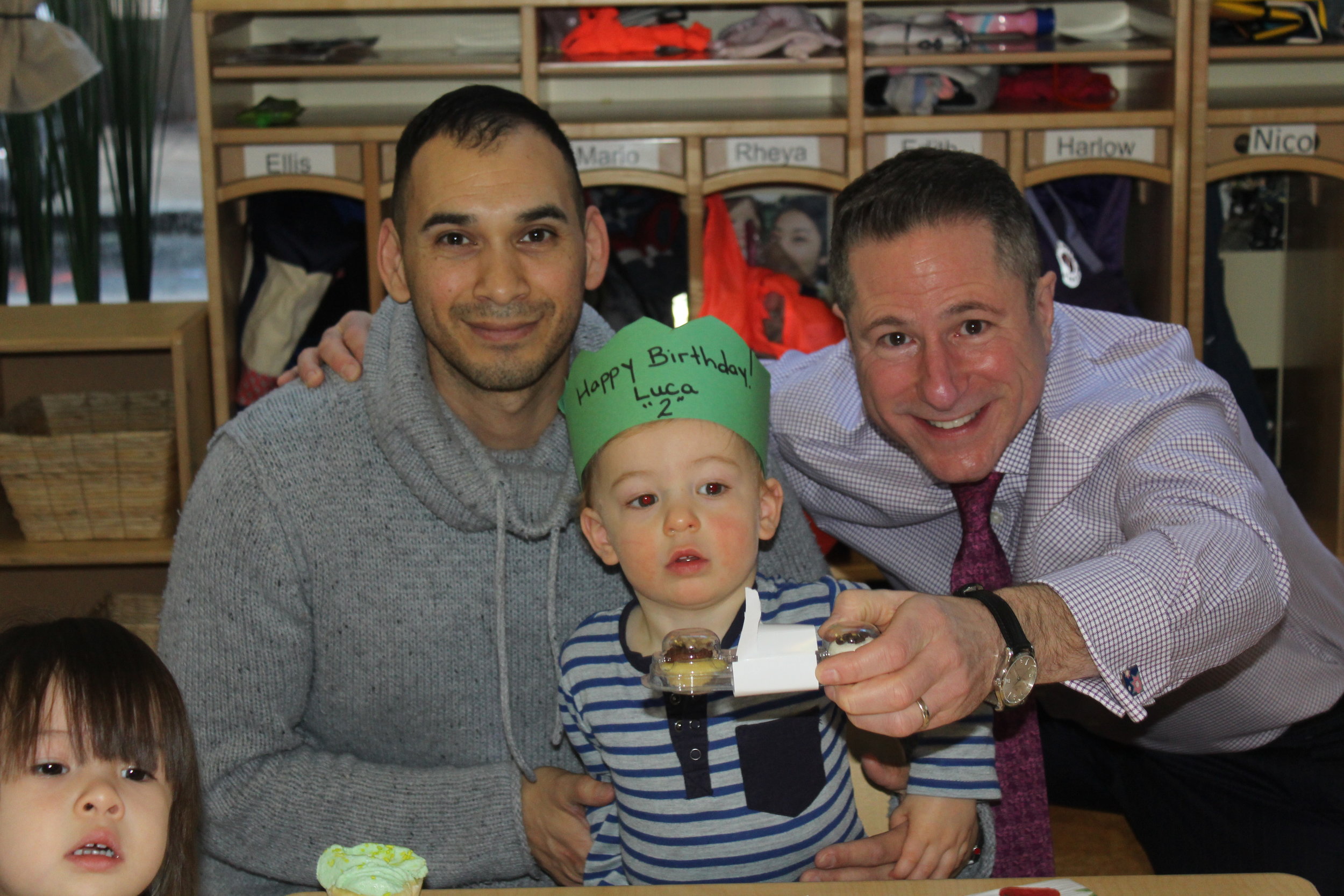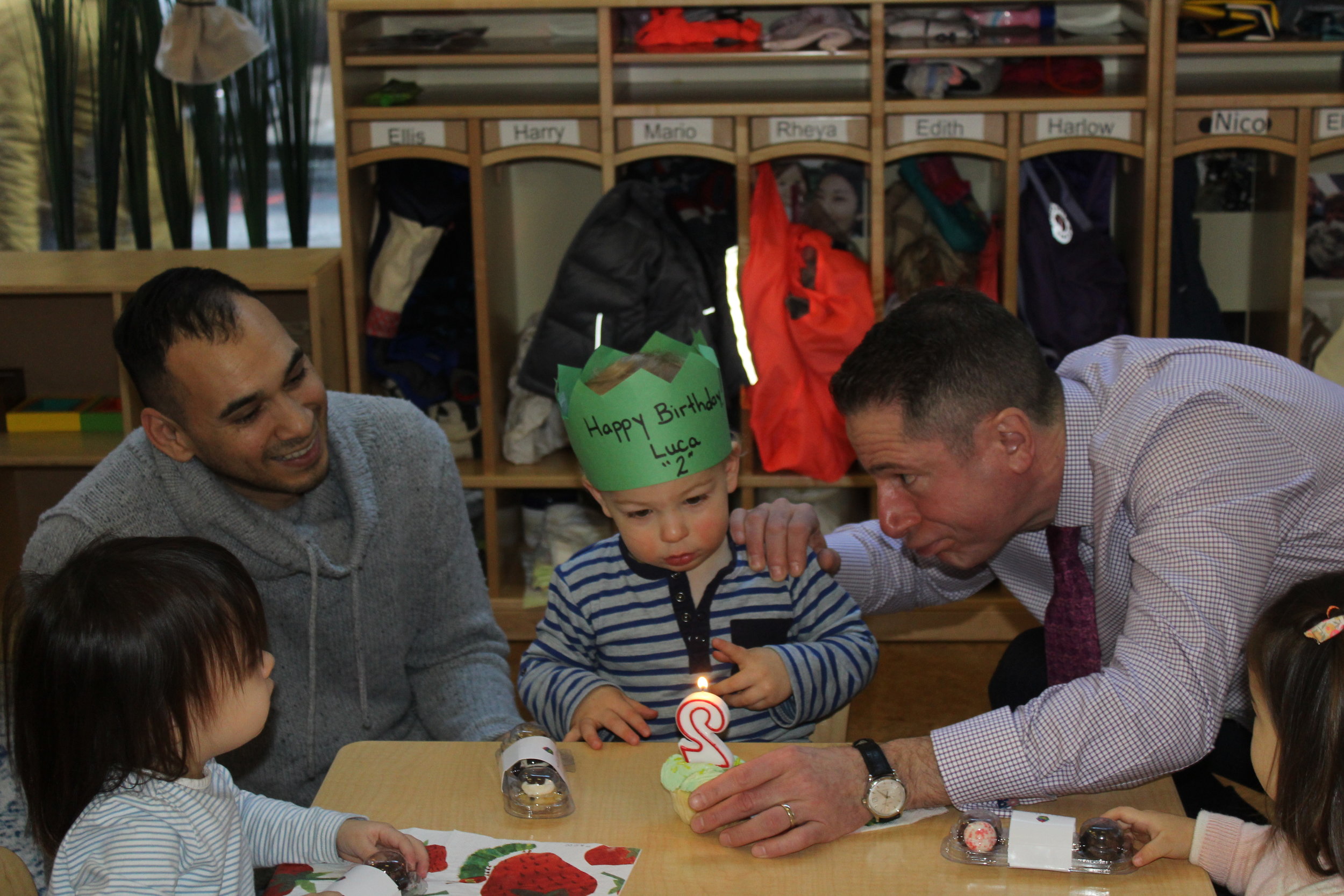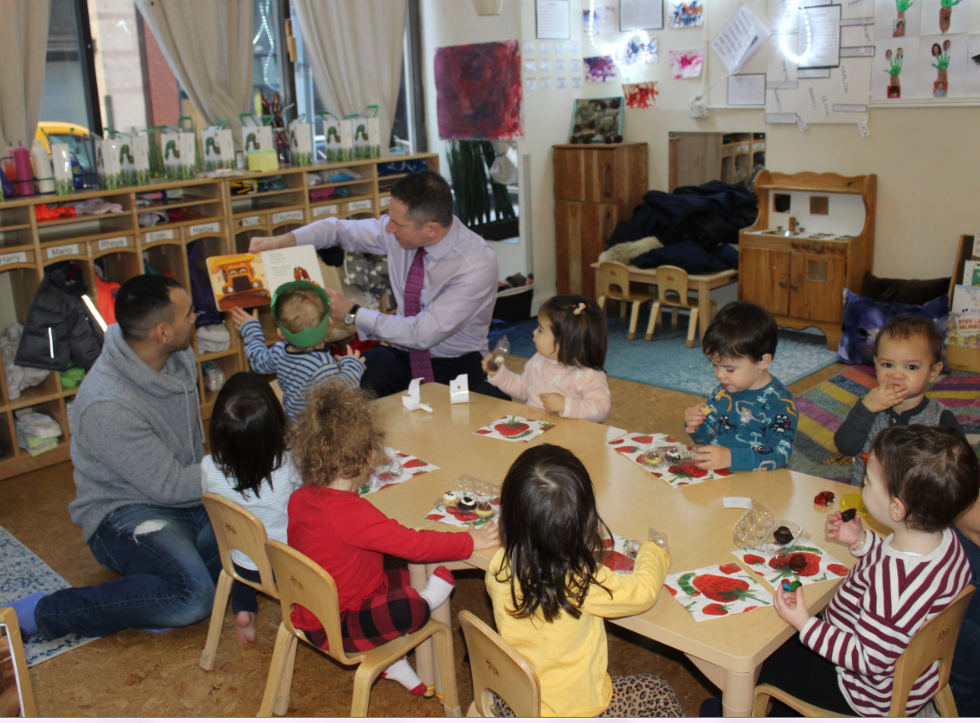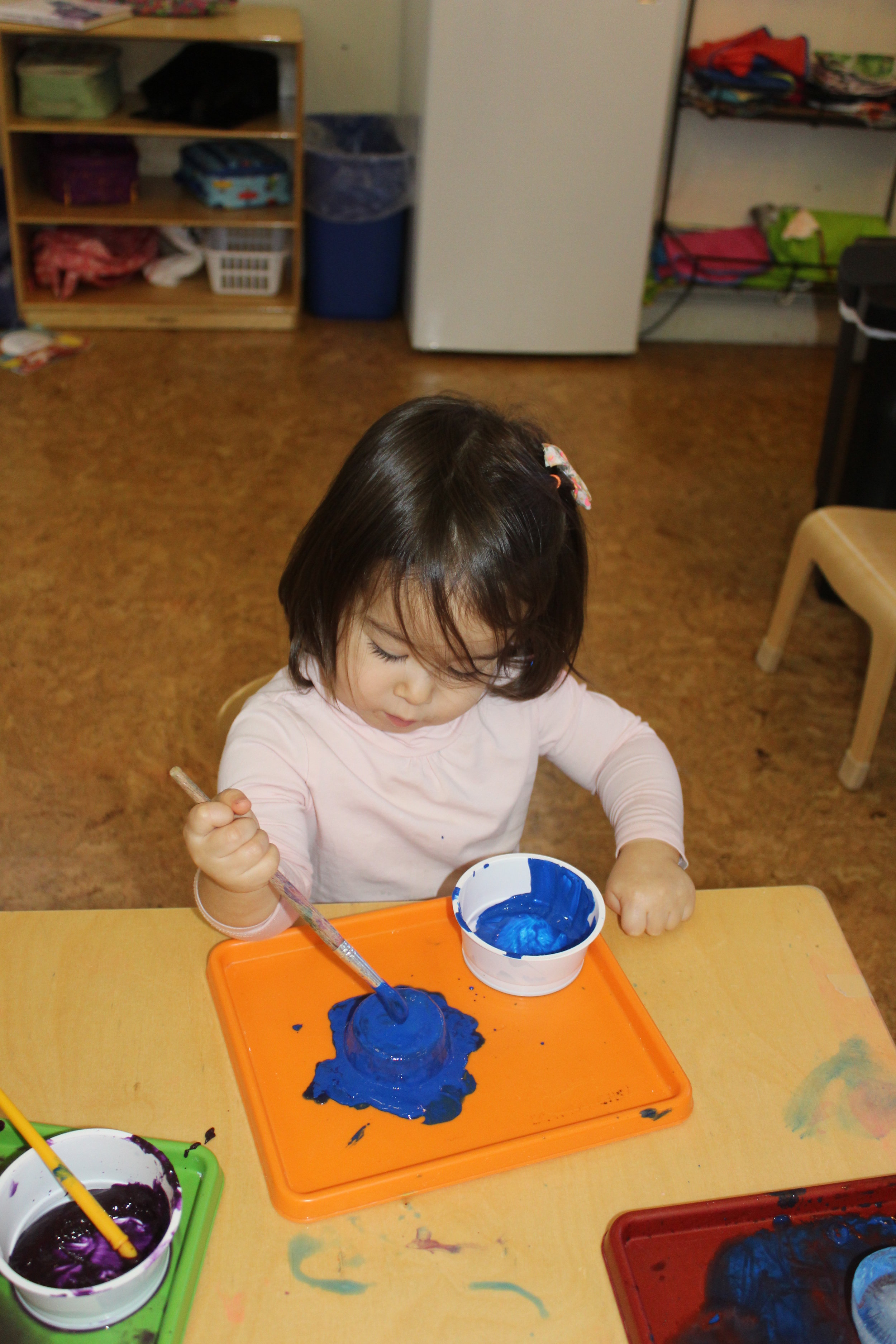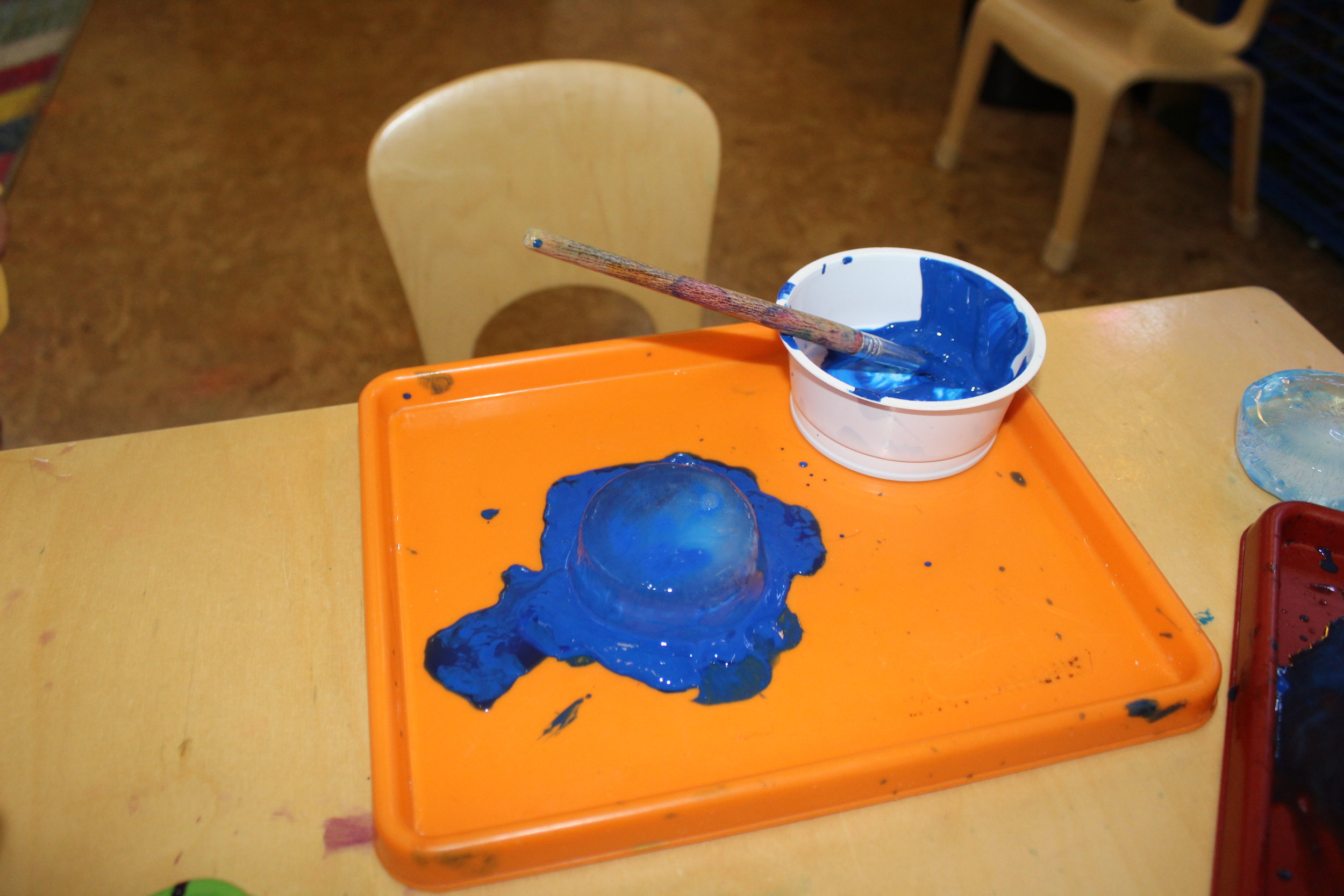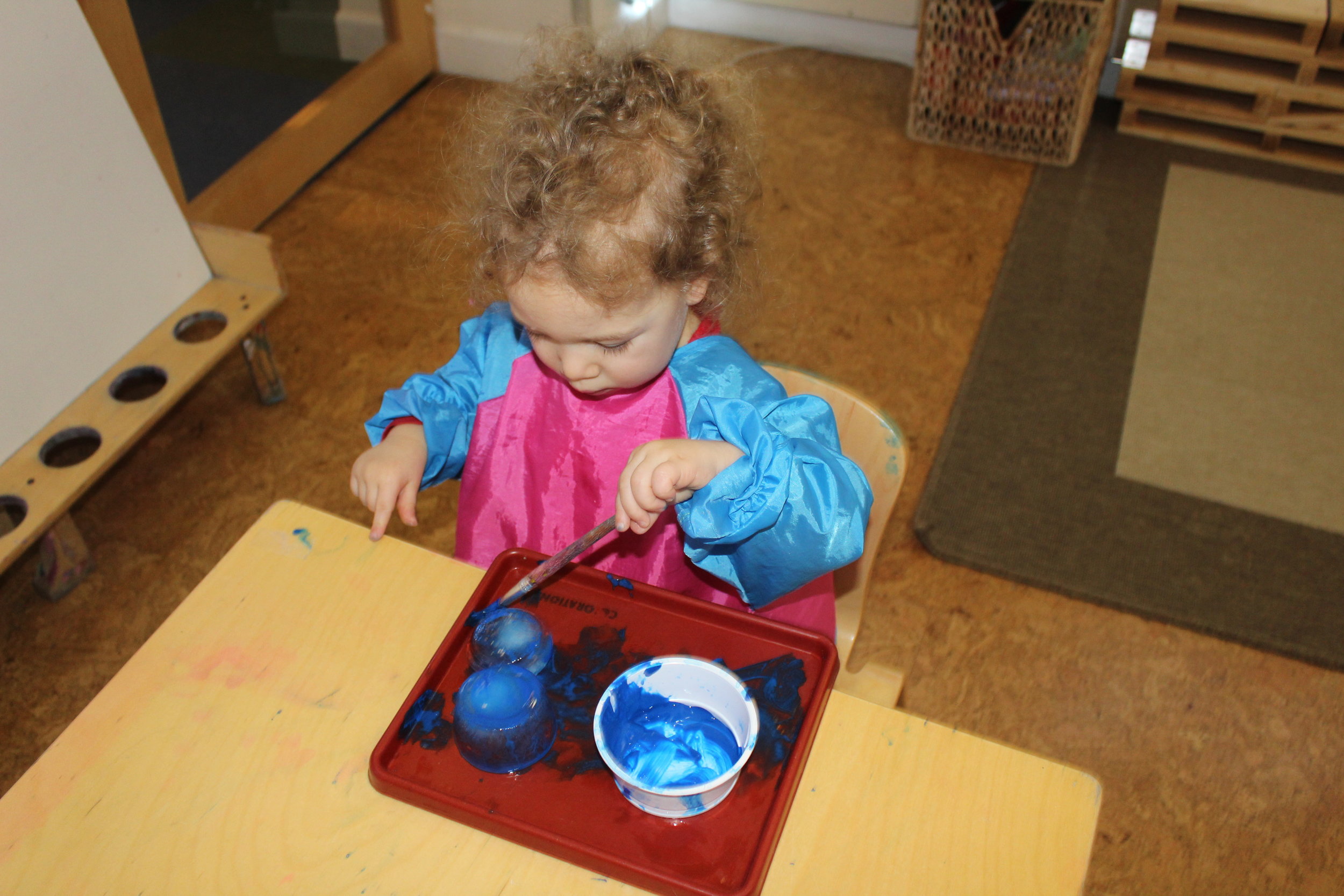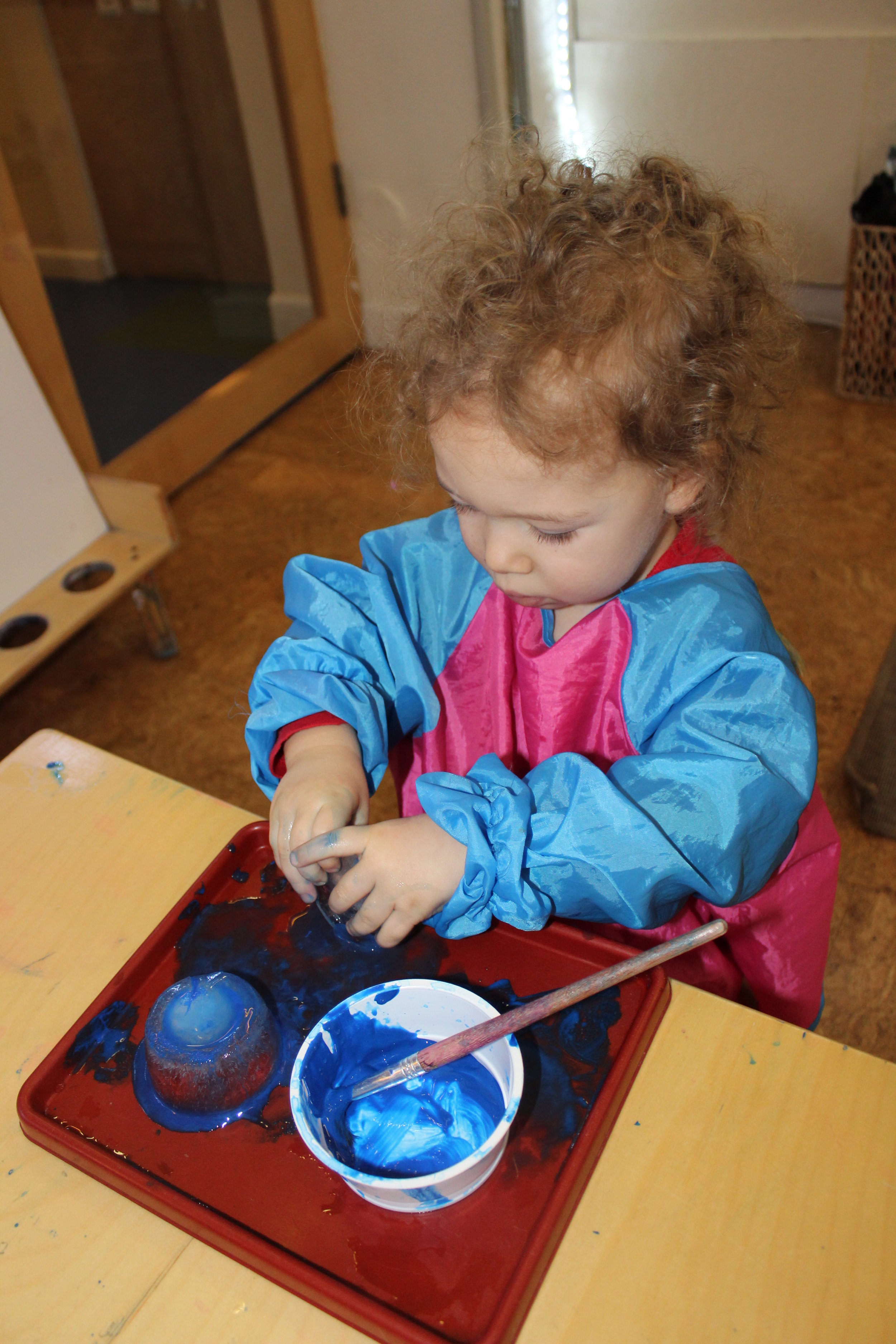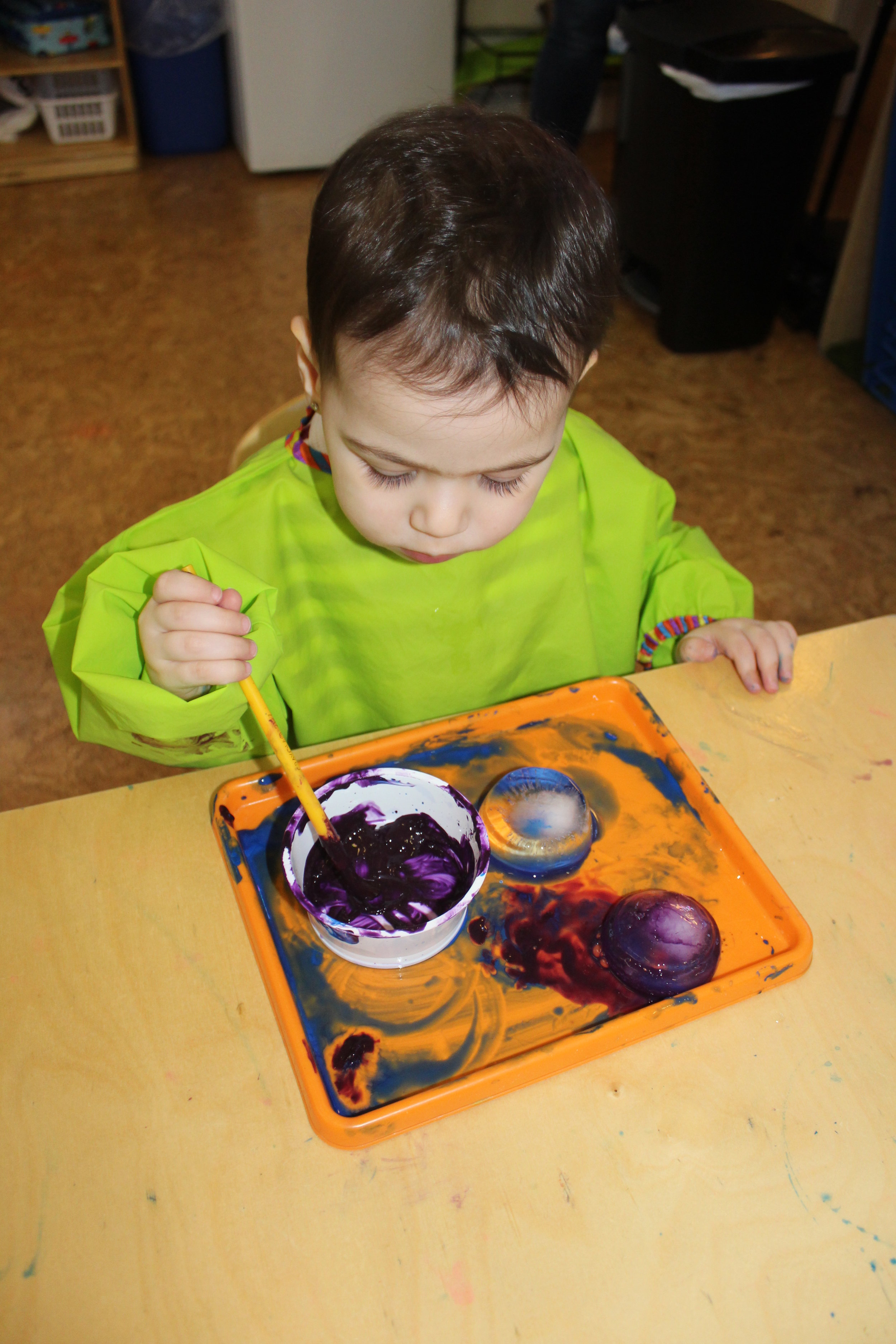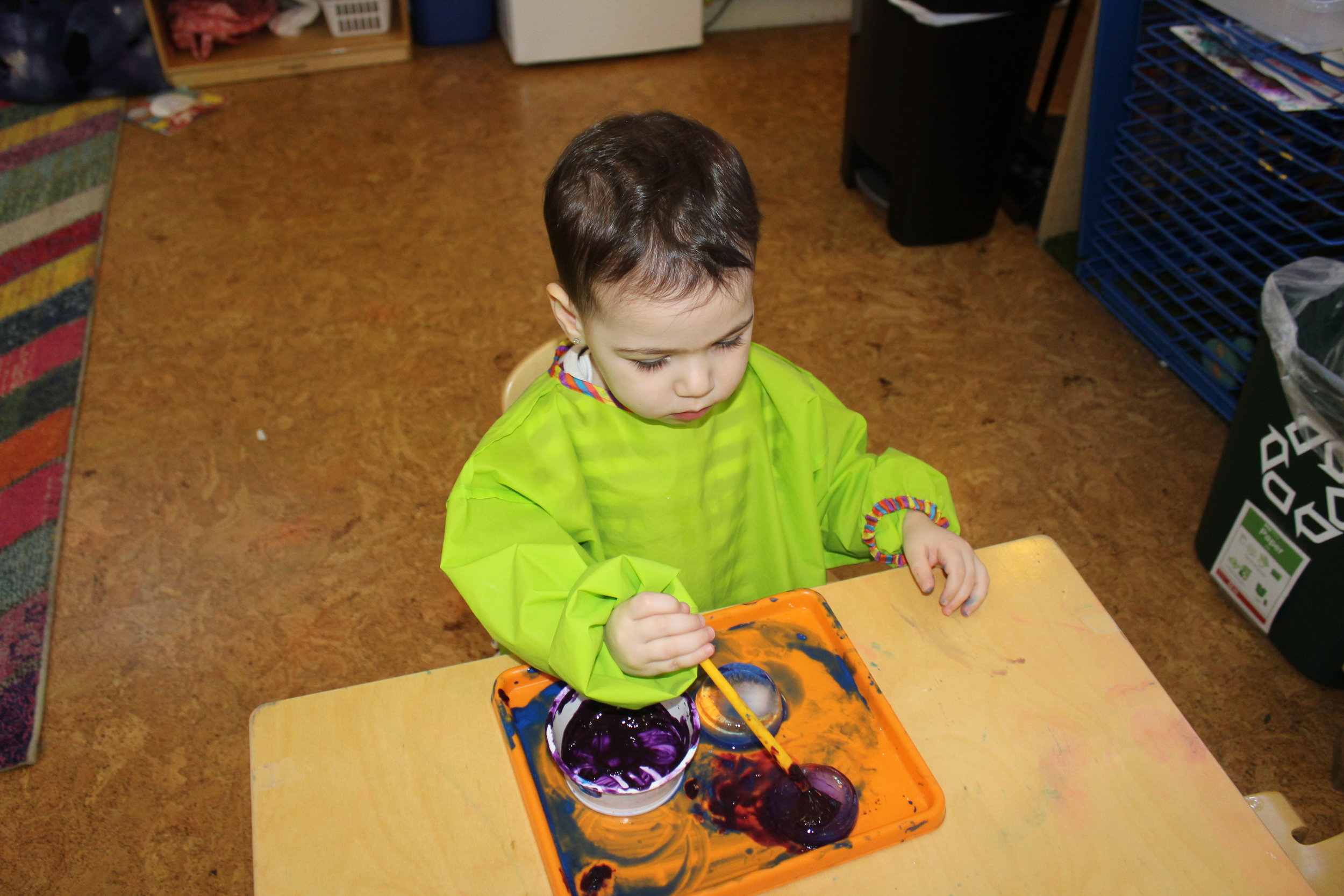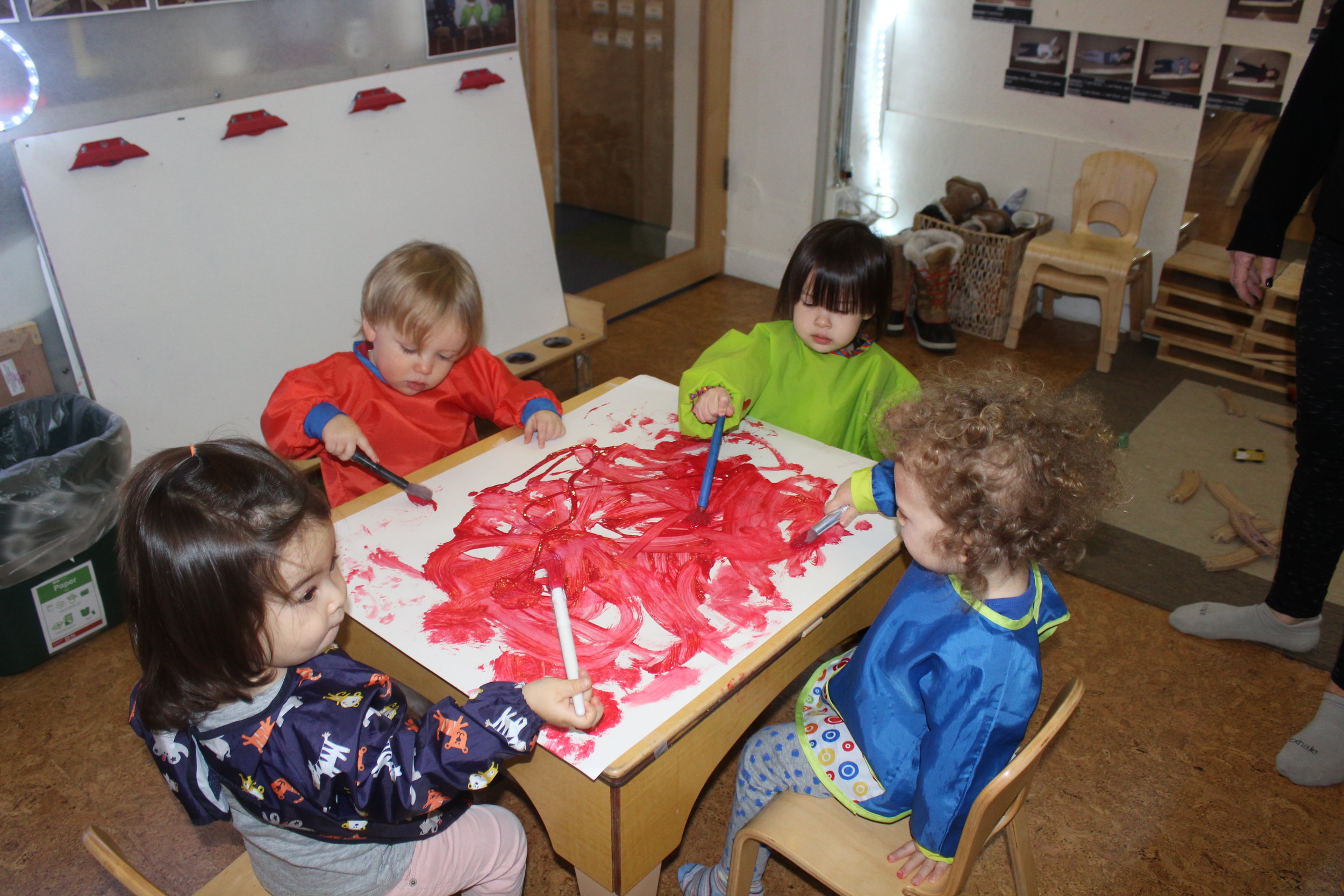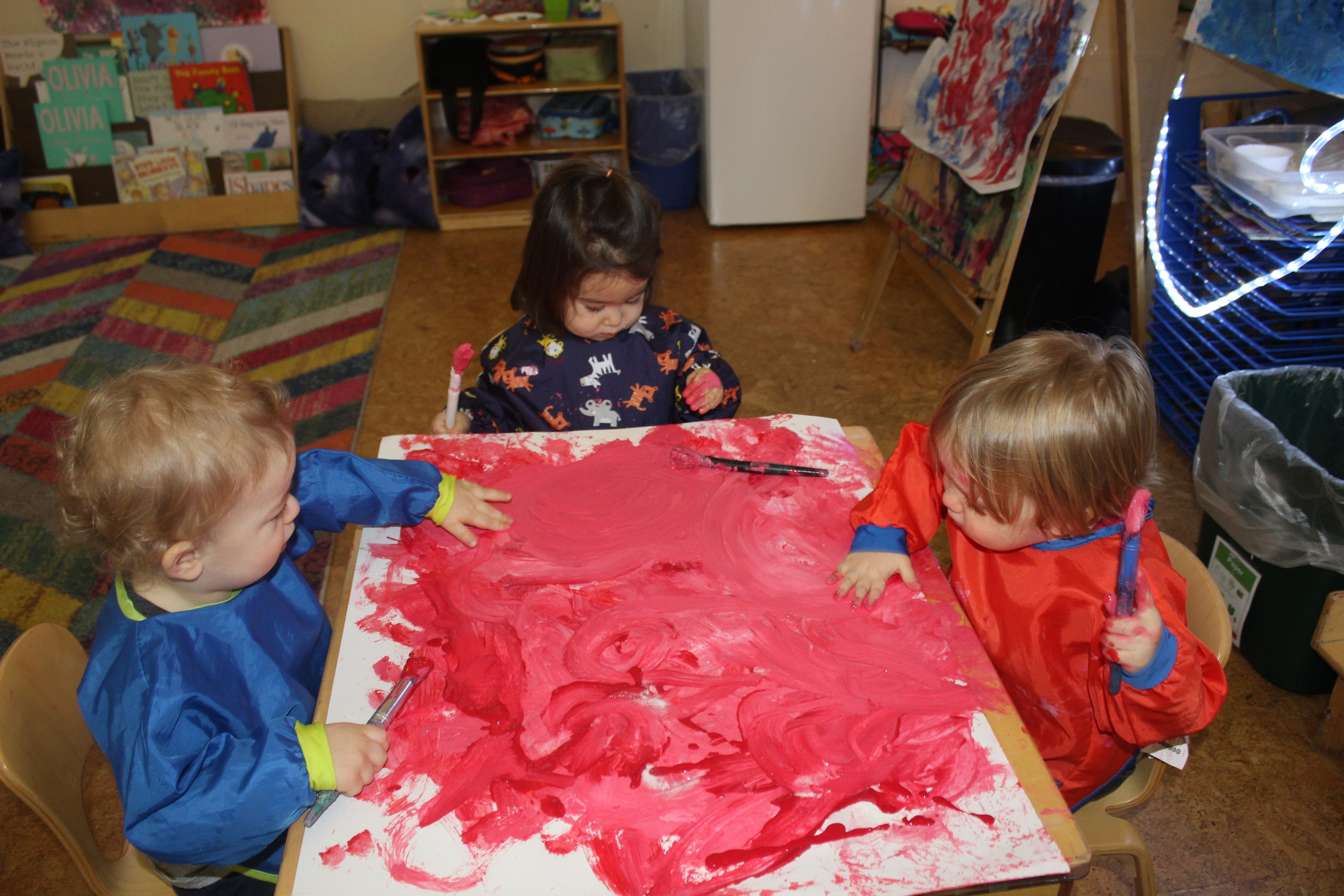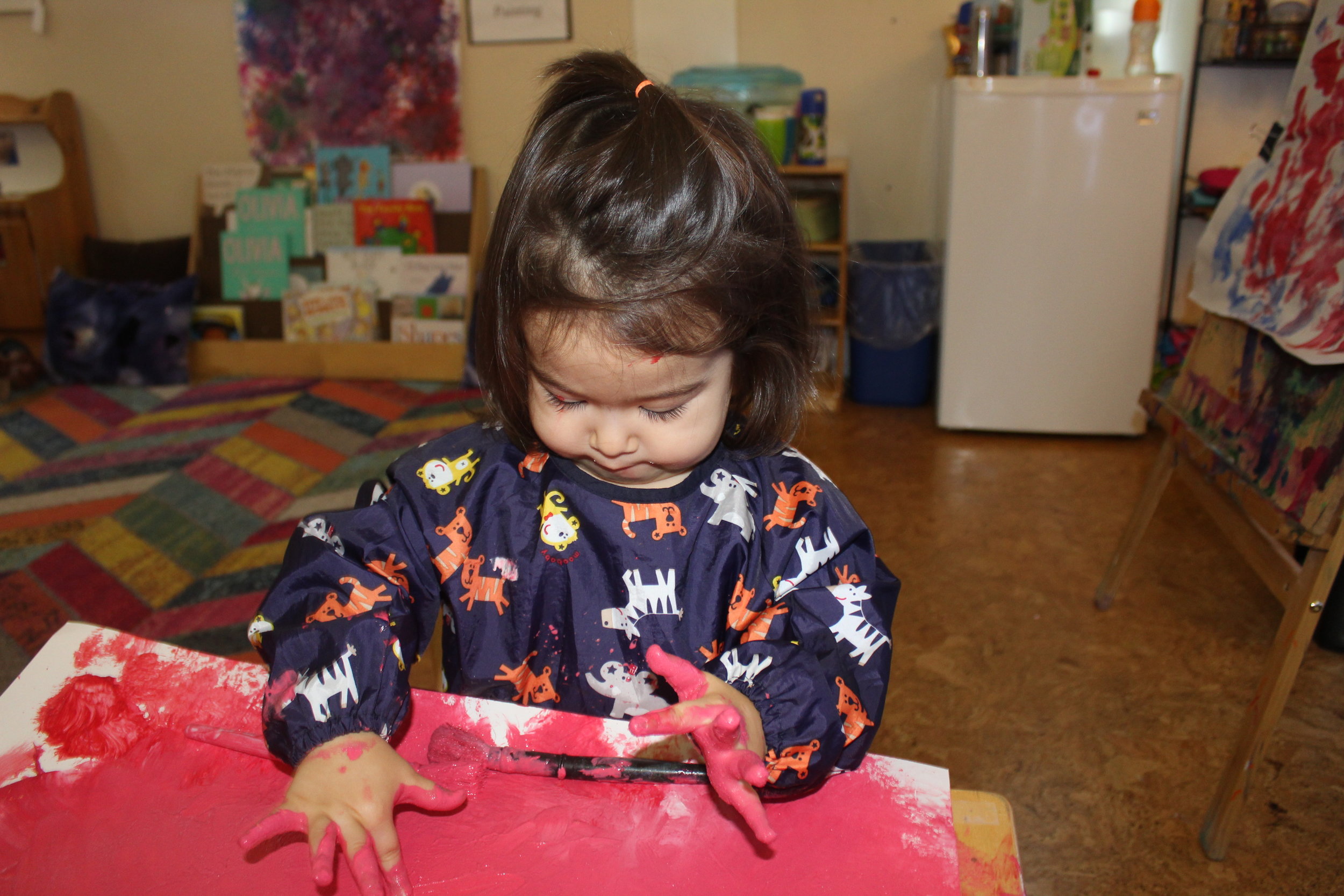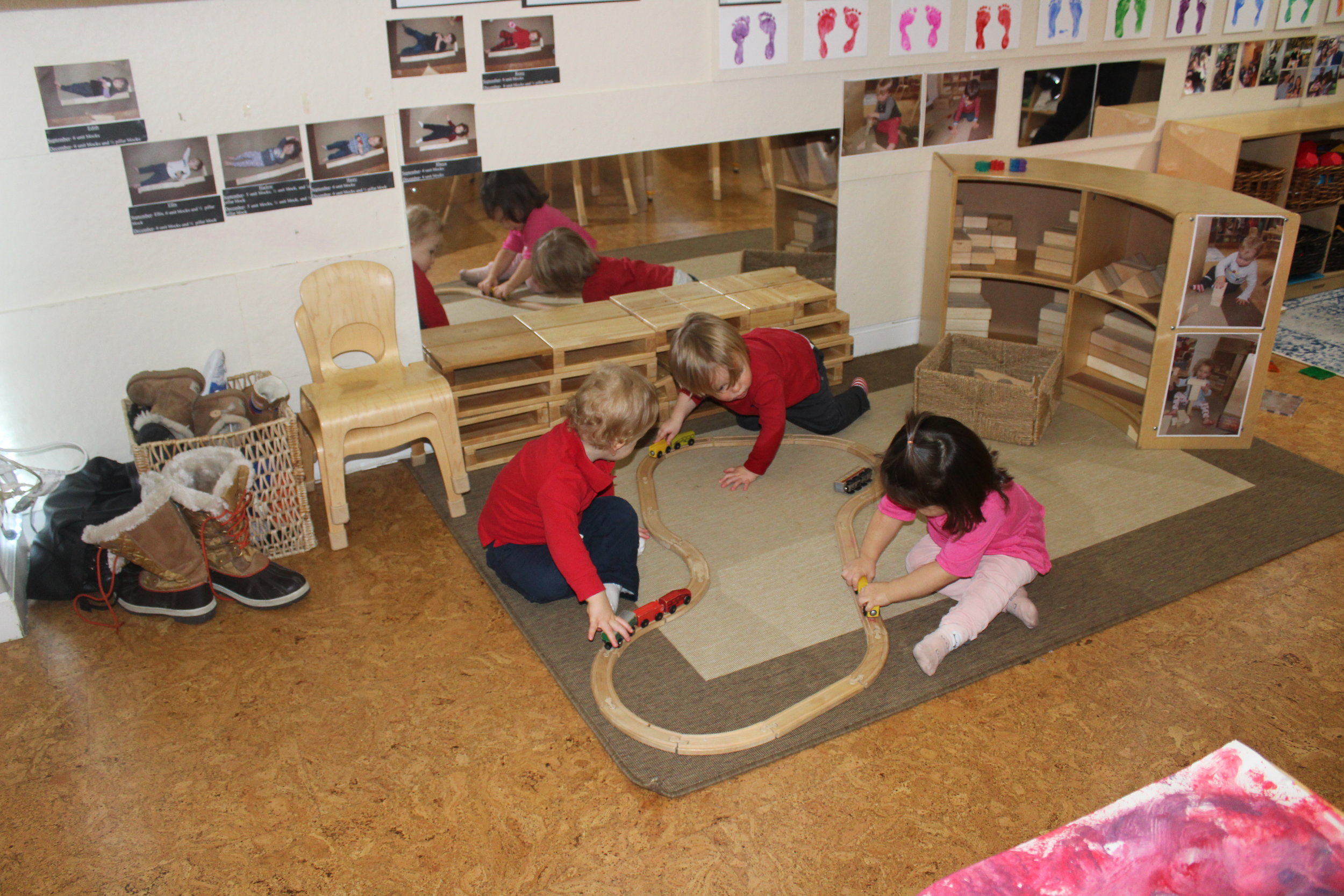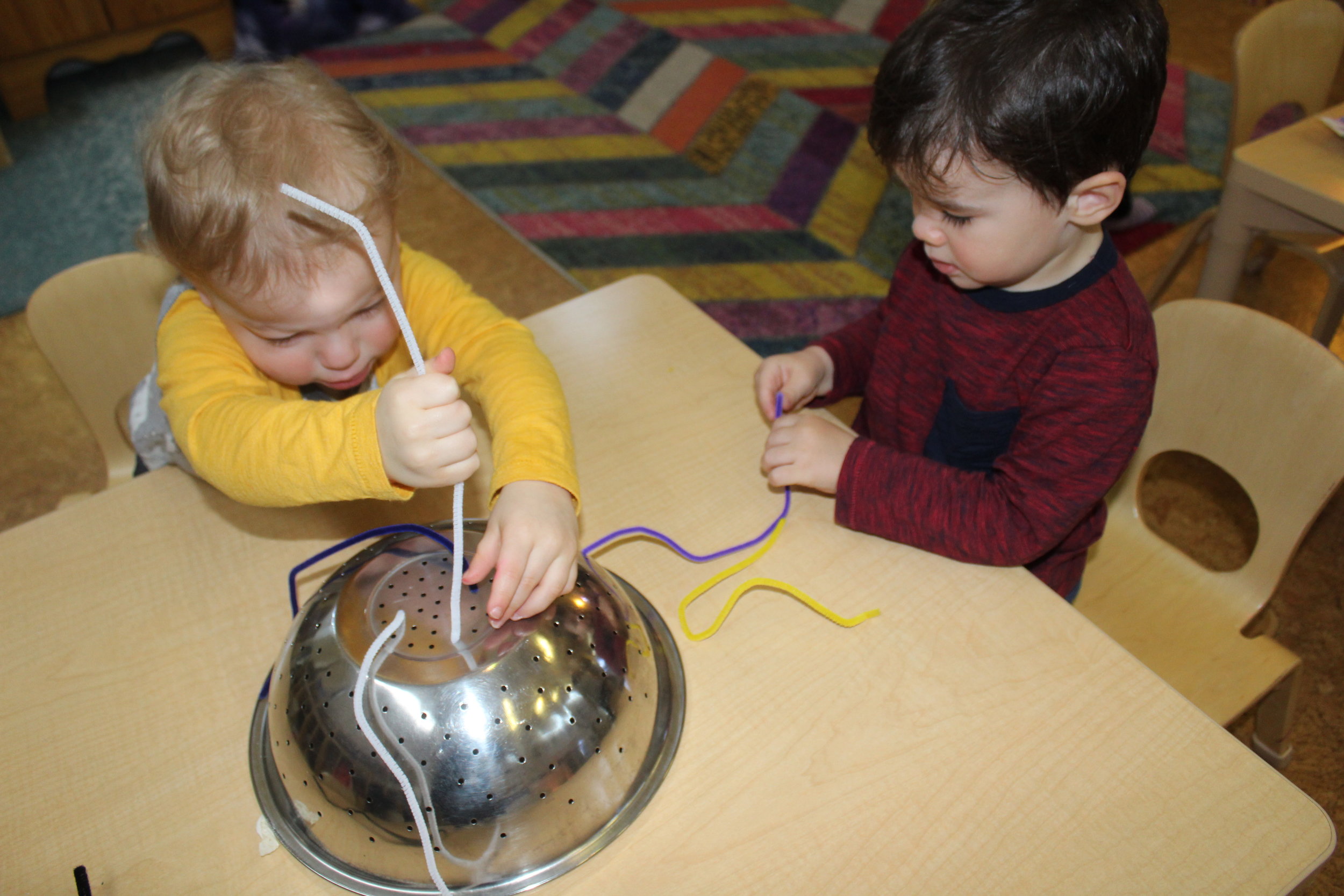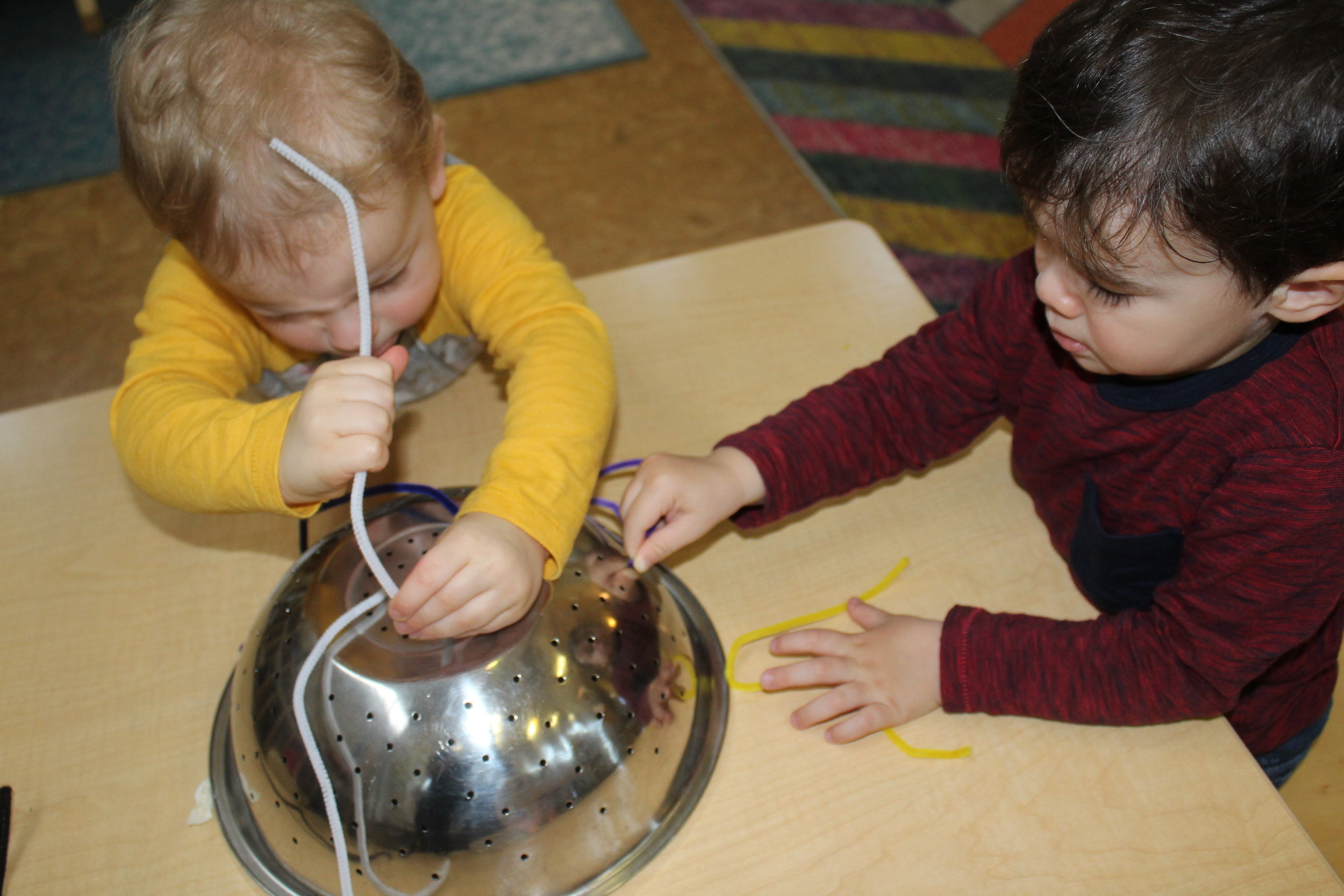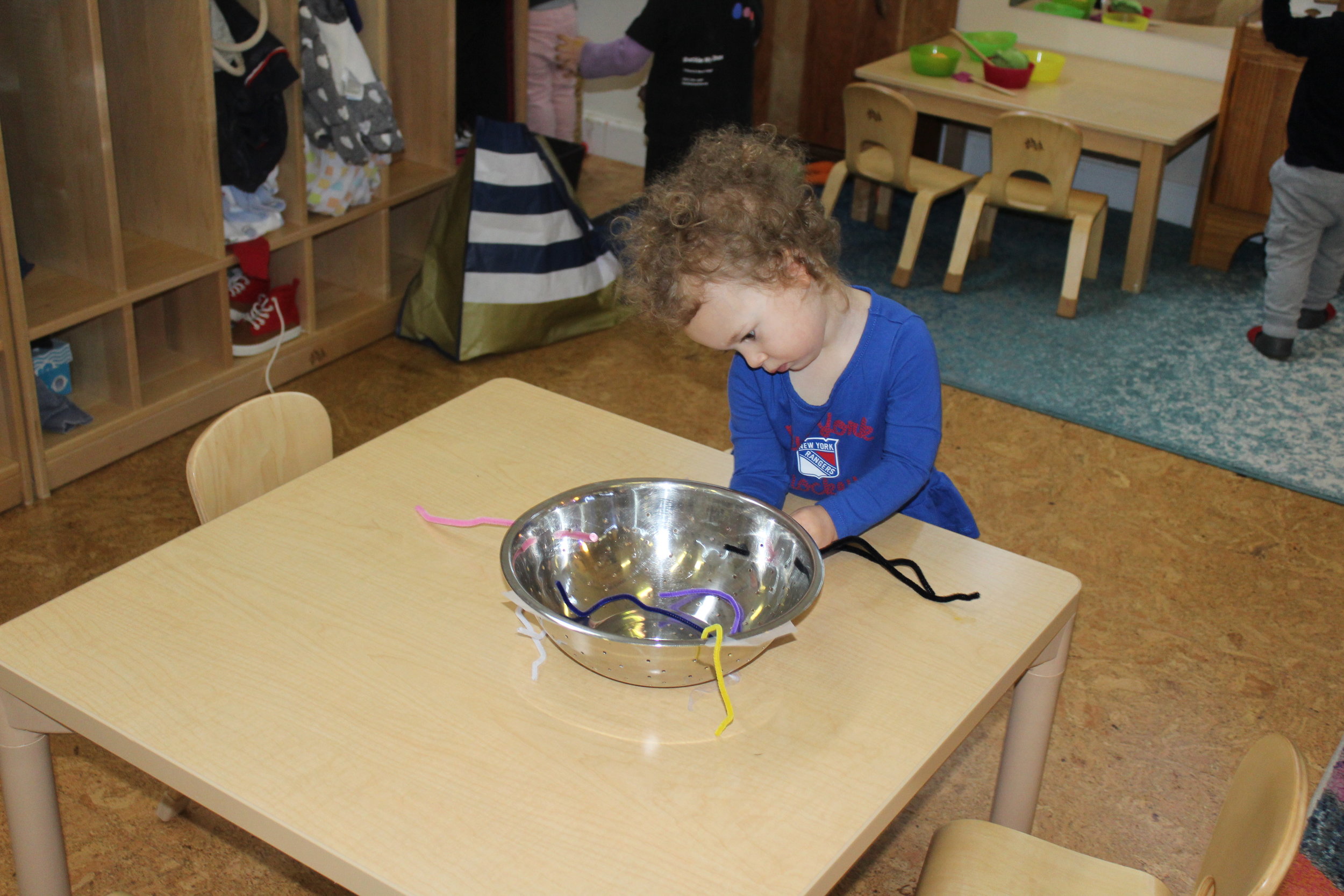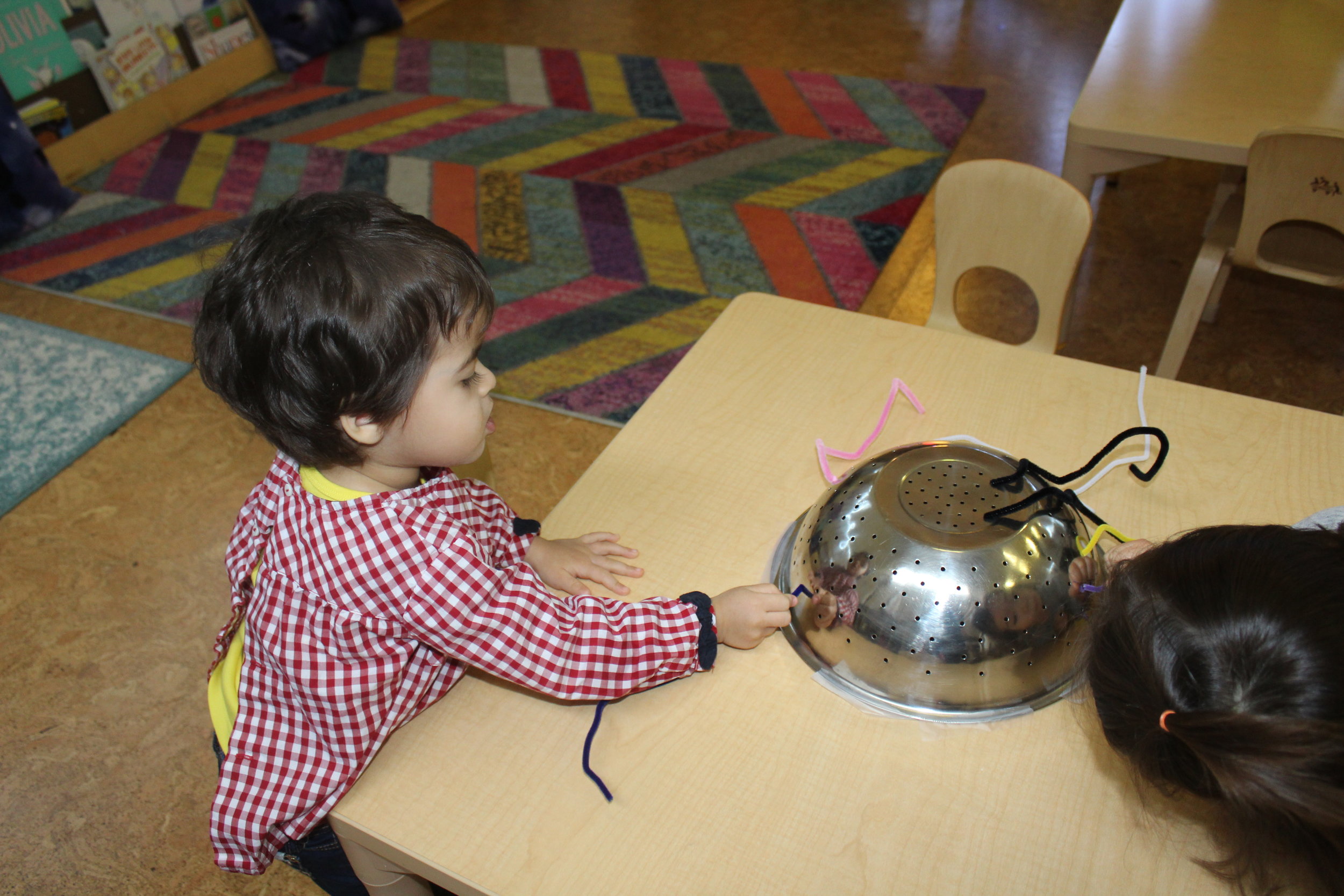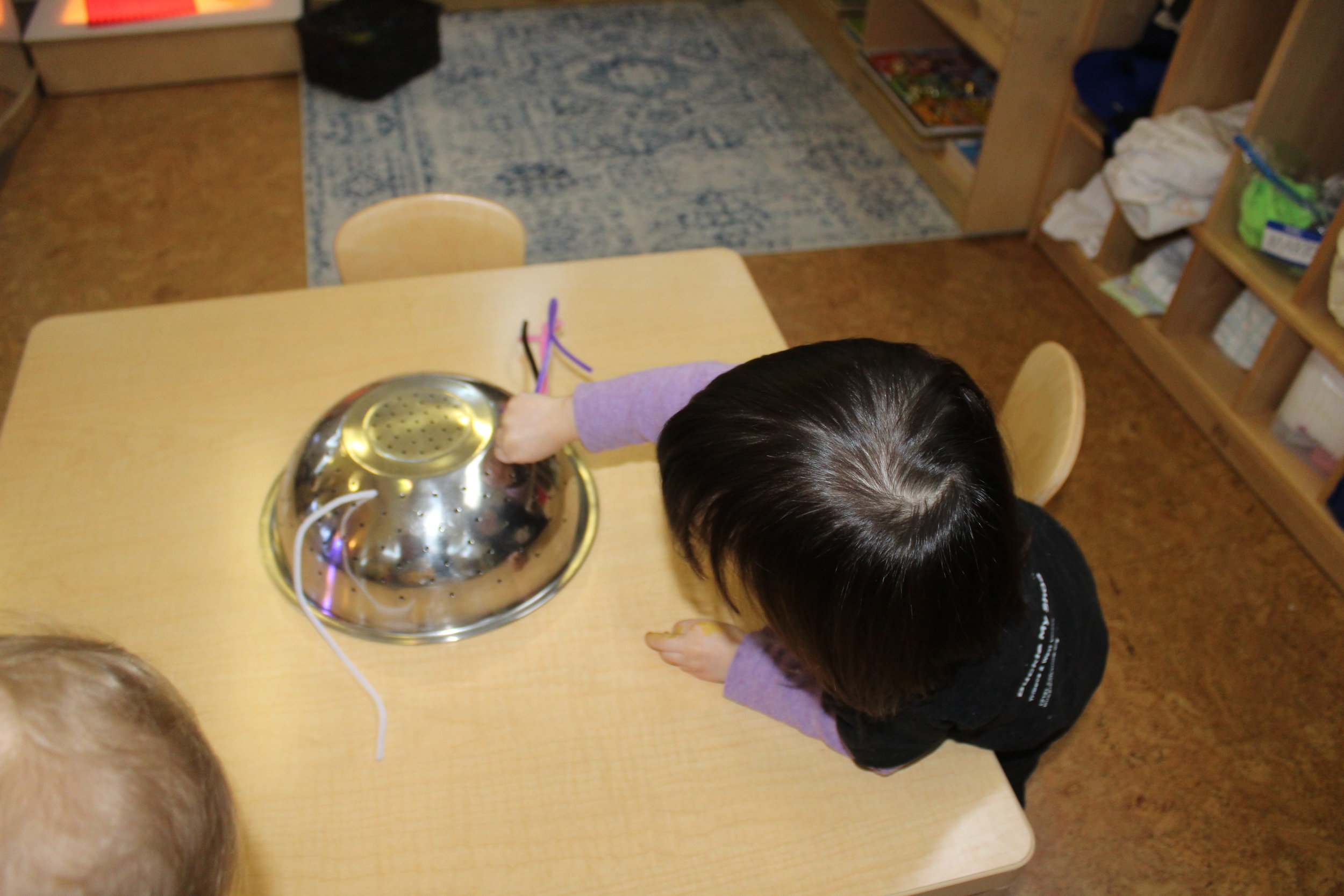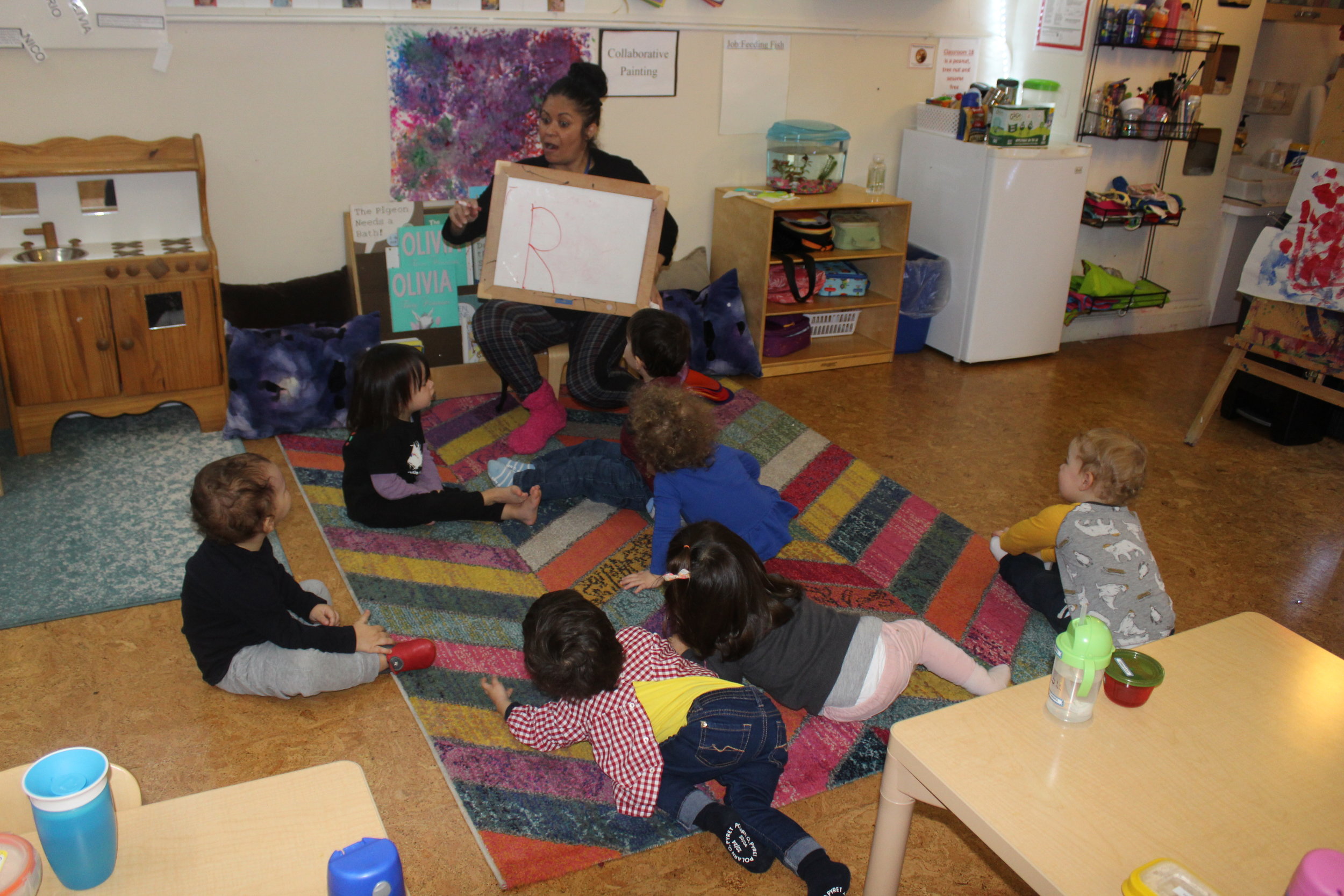Celebrating the Child and Family
Family can have many different facets and to be part of a family can have a different meaning to each individual. It can branch out to include many relatives. Member of the immediate family may consist of parents, brother, and sister; however, members of the extended family may include grandparents, aunts, and uncles. Sometimes these extended family members are also considered a member of the immediate family, depending on an individual’s specific relationship with them. Also, one’s “Family Tree” can include people that are significant in some way, so much so that they become part of one’s family.
The children created unique family trees using part of their arm and hand. As the children engage in this tactile exploration, they create a visual representation of family, and can, in turn, see how that differs for everyone. They observe and count the number of people they have on their corresponding tree, gaining an understanding of the number of people they have in their family.
Many areas of a child's development occur at home, for example, language. Our toddlers are developing language at an amazing rate. Language learning begins at home, creating the foundation for a child’s growth. In the early childhood years, the amount and variety of language children hear at home and later at school is strongly related to their language development.
Before children enunciate words, they experience receptive language before expressive language. Receptive language is the understanding of words; however, it's more than acquiring vocabulary skills, but having the ability to interpret a question as a question and the understanding of concepts. Children develop receptive skills first, absorbing information from the different interactions with people and environments they experience. Expressive language is most simple "the output" of language, how one expresses his/her wants and needs. It includes words, grammar rules that dictate how words are combined into phrases, sentences, and paragraphs as well. Our children are using more words and connecting them into longer sentences!
Language gives children the ability to communicate and voice their thoughts and ideas, which shapes their personality. The bridge of language learning from home to school impacts a child’s language development and social/emotional growth! The amount of verbal interaction we give to the children is as important as the amount of language we use.
Interactions with parents create the environment with which children can begin to learn the language they hear adults speaking. Language is a social process and a child’s language environment is the foundation for the development of the early language. Talking to children is teaching!! The different aspects in which language is implemented in the classroom: circle time, counting (math language), Music, Spanish, Science Experiments, Reading Stories and during play when children are engaging.
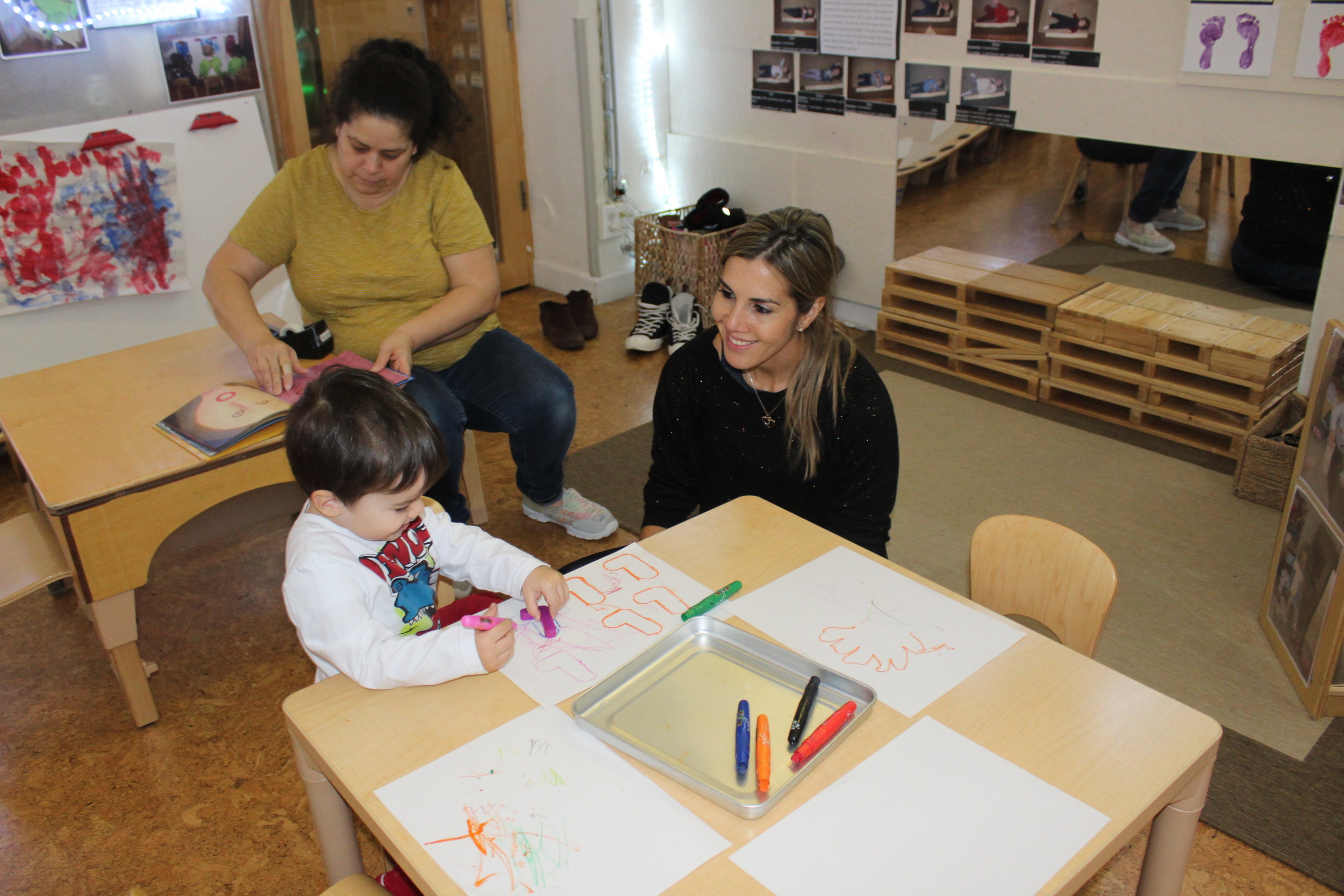
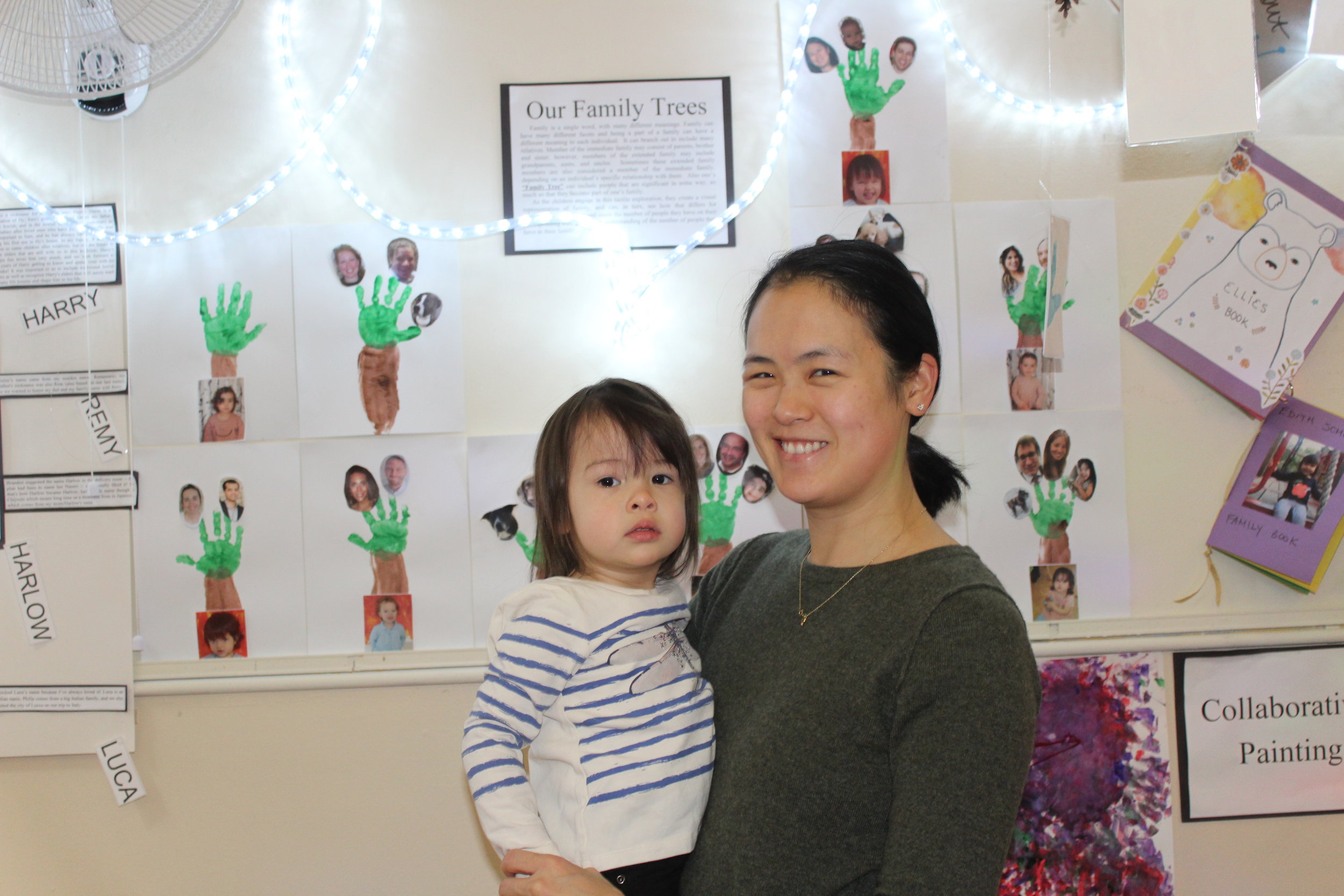
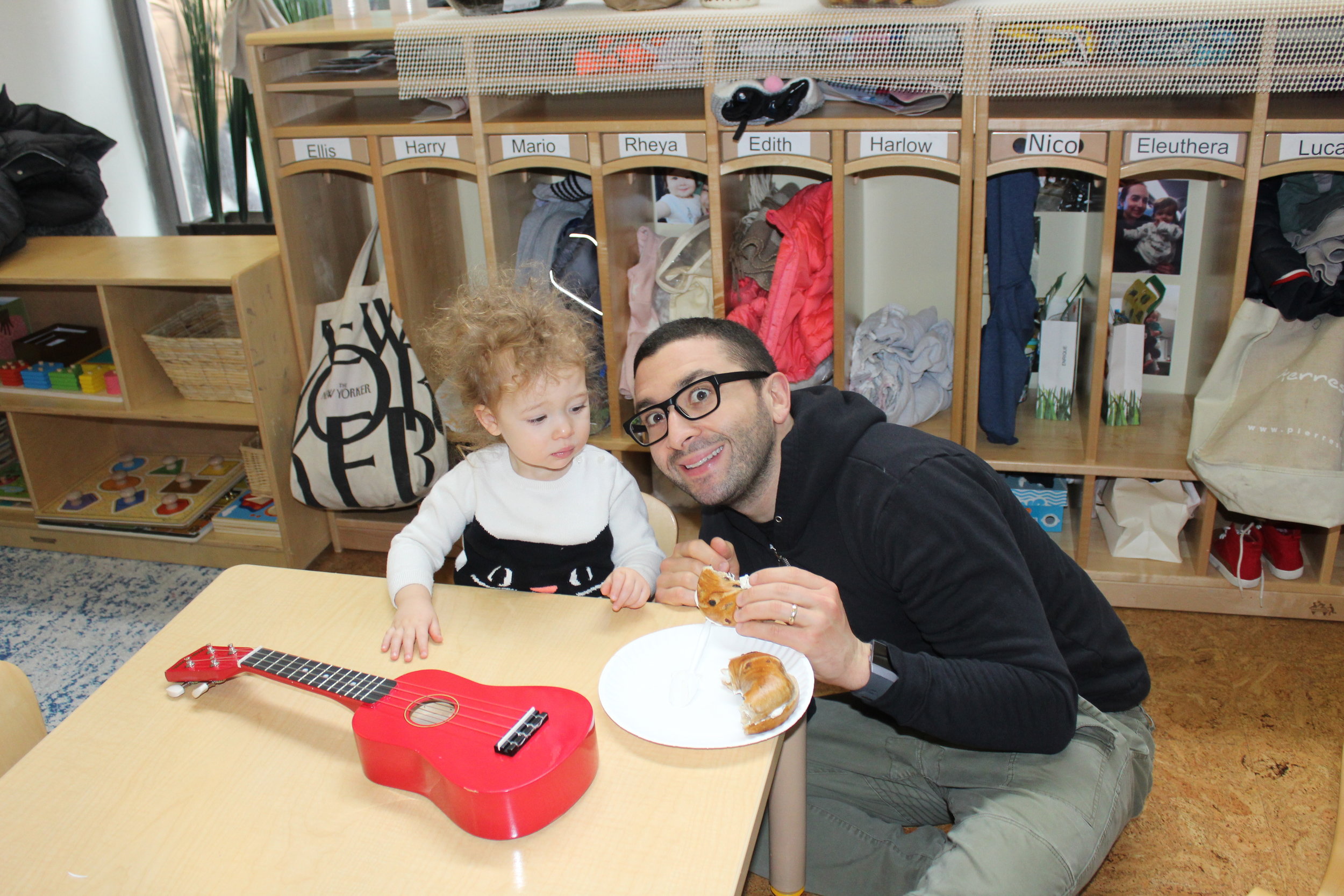
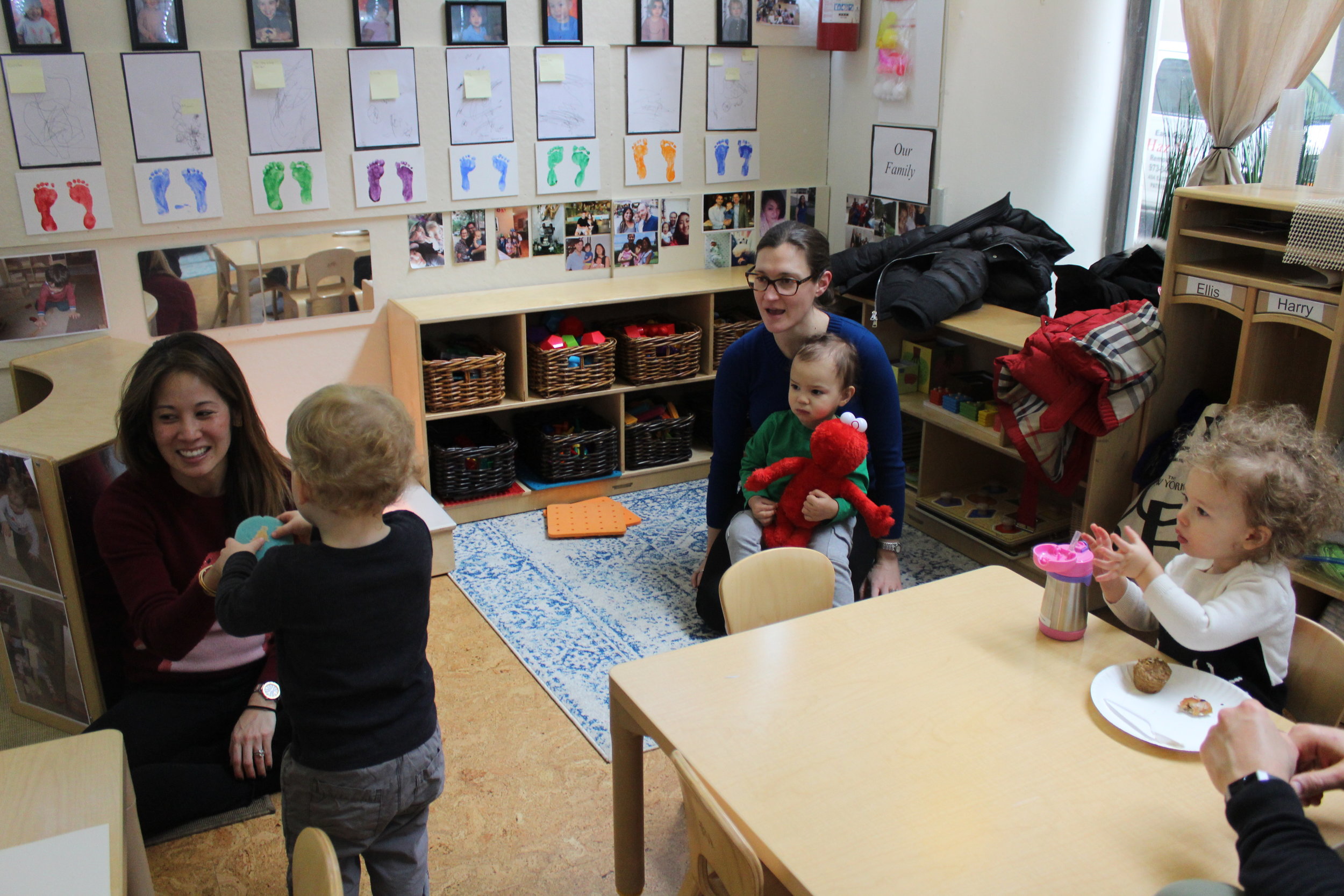
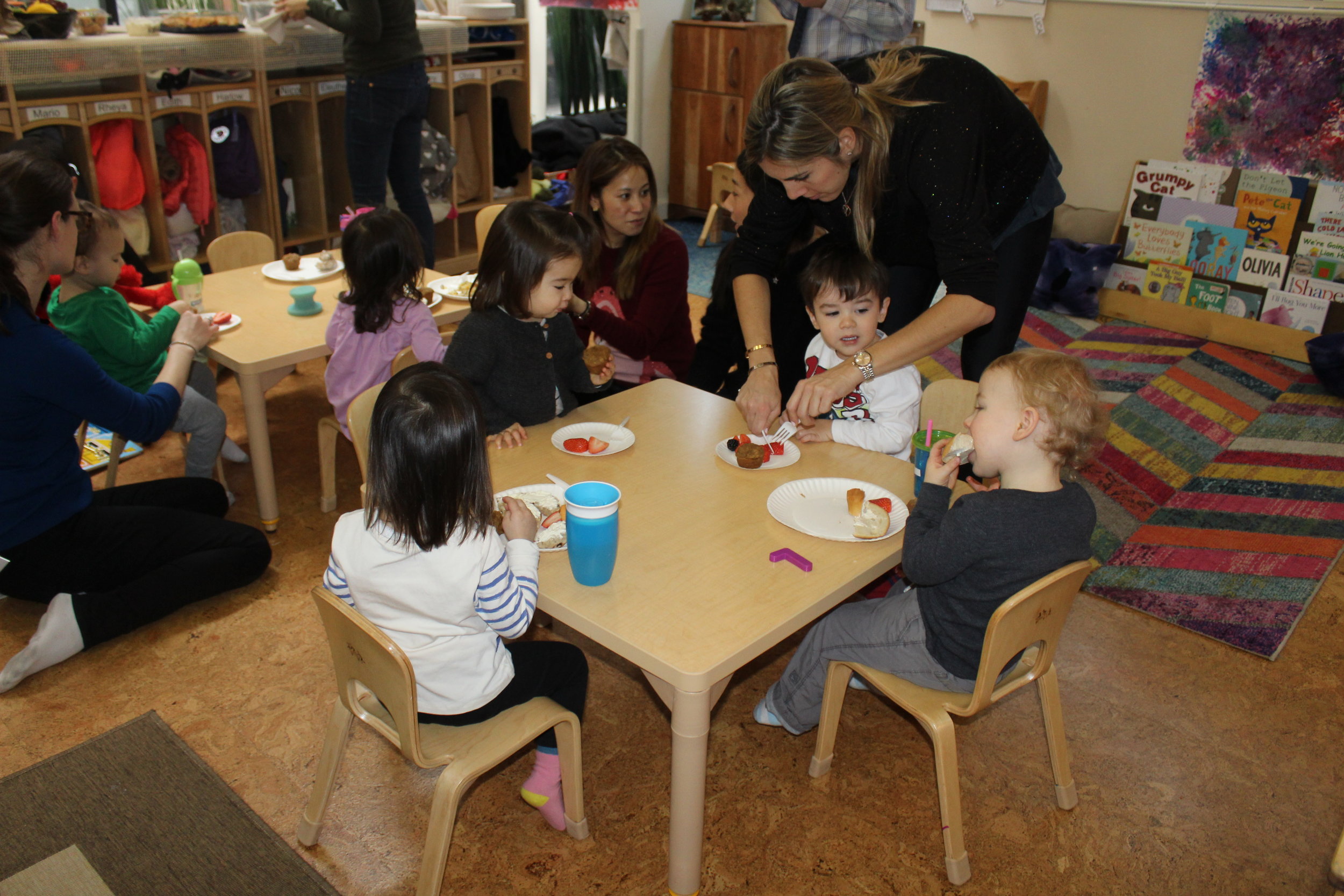
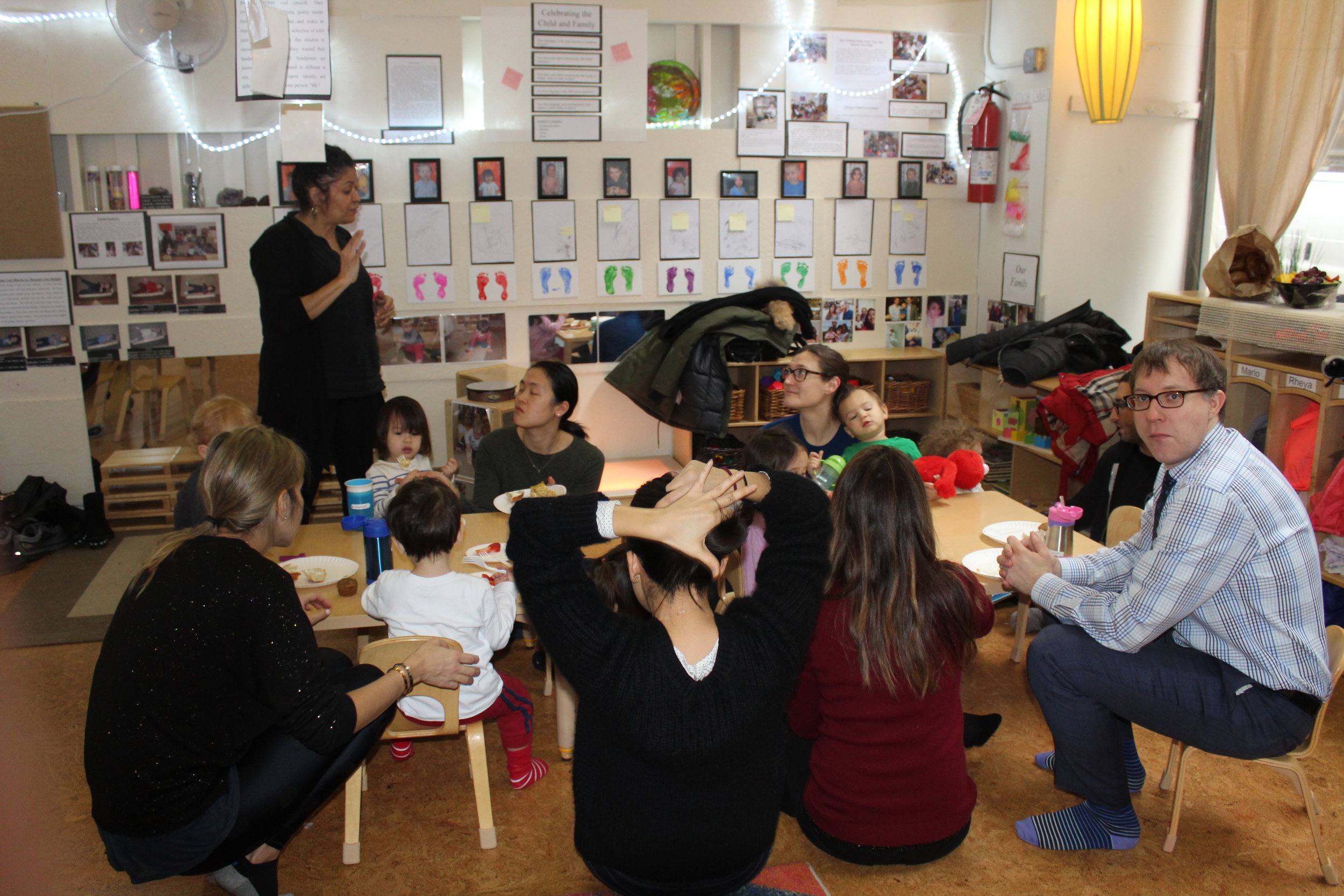
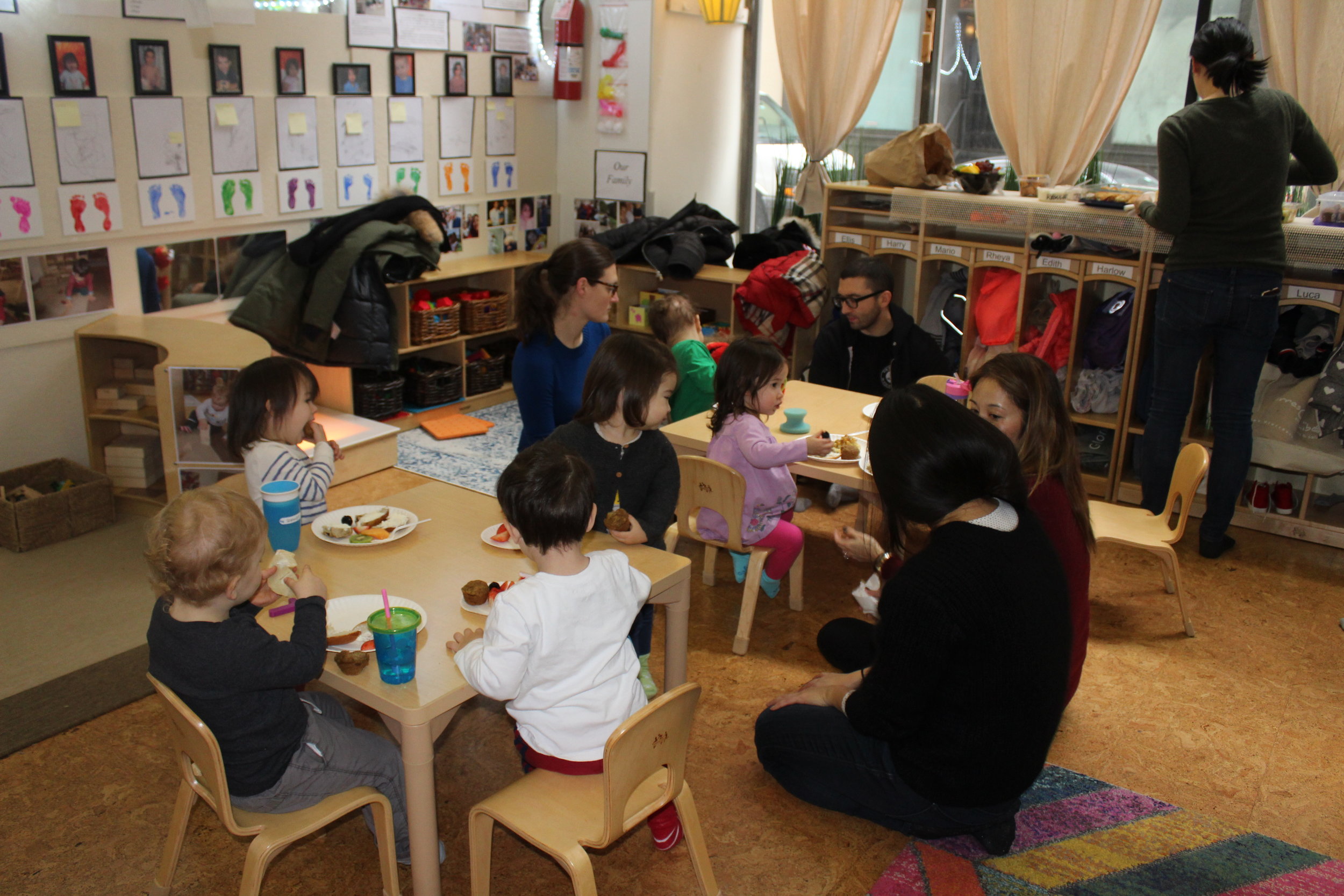
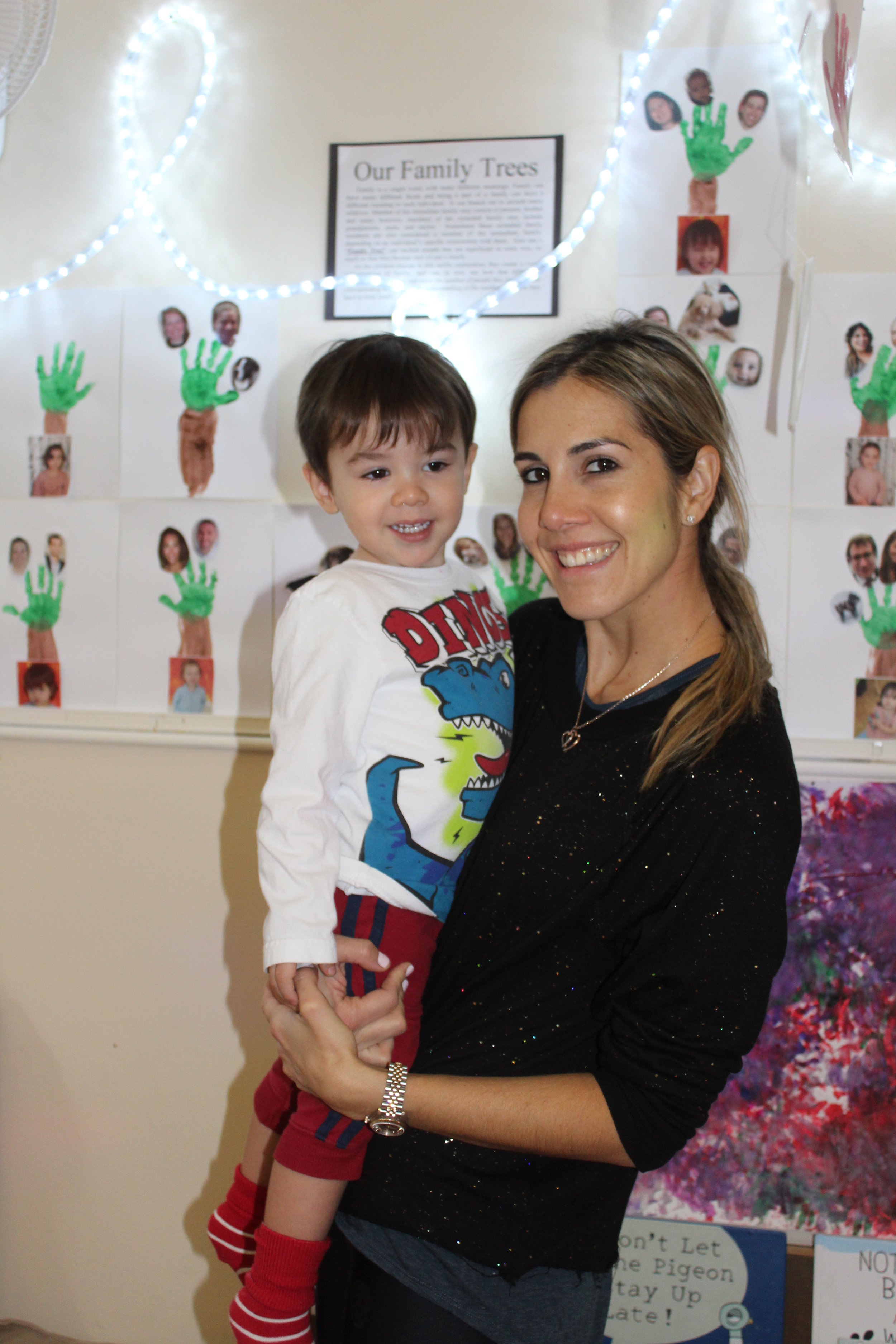
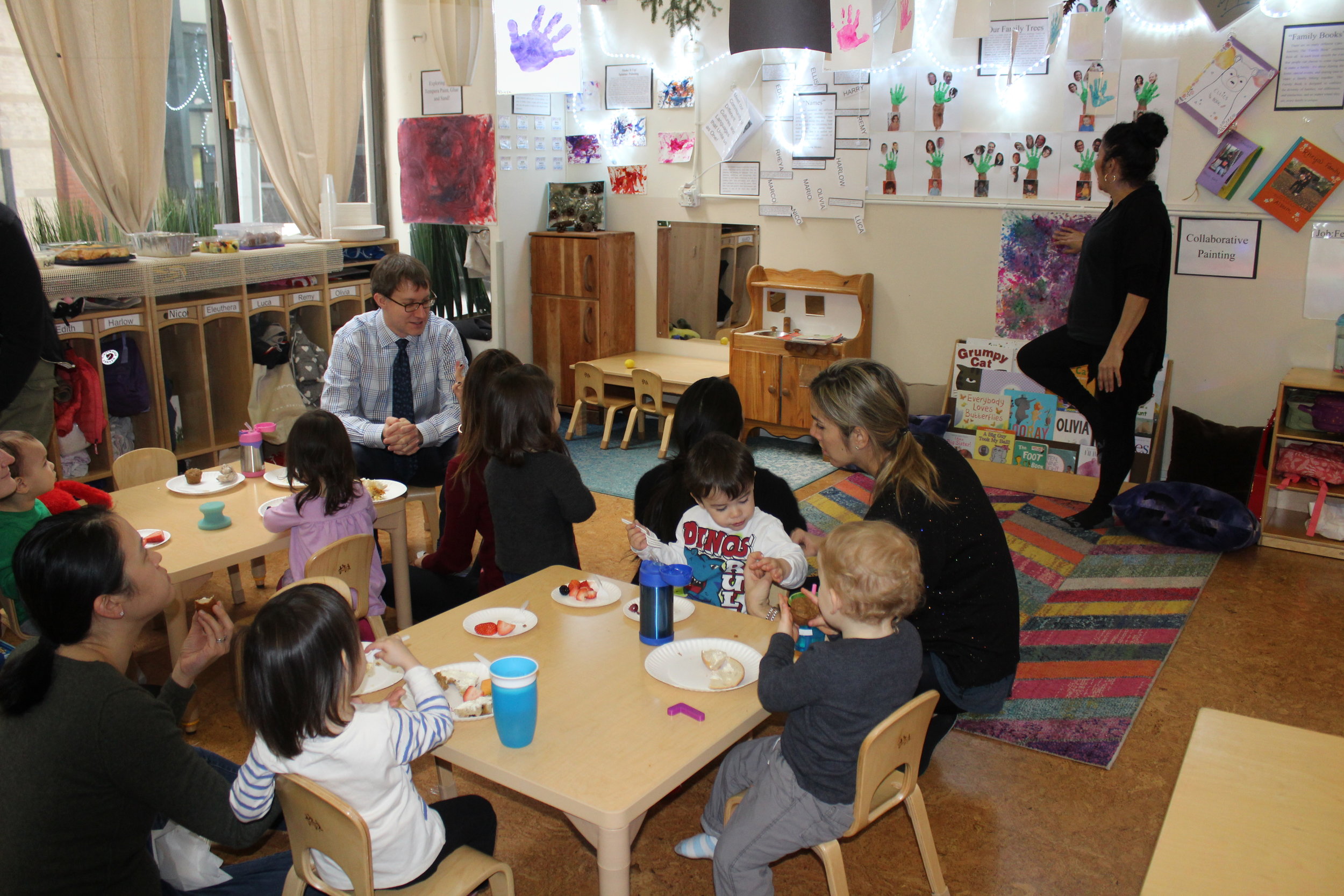
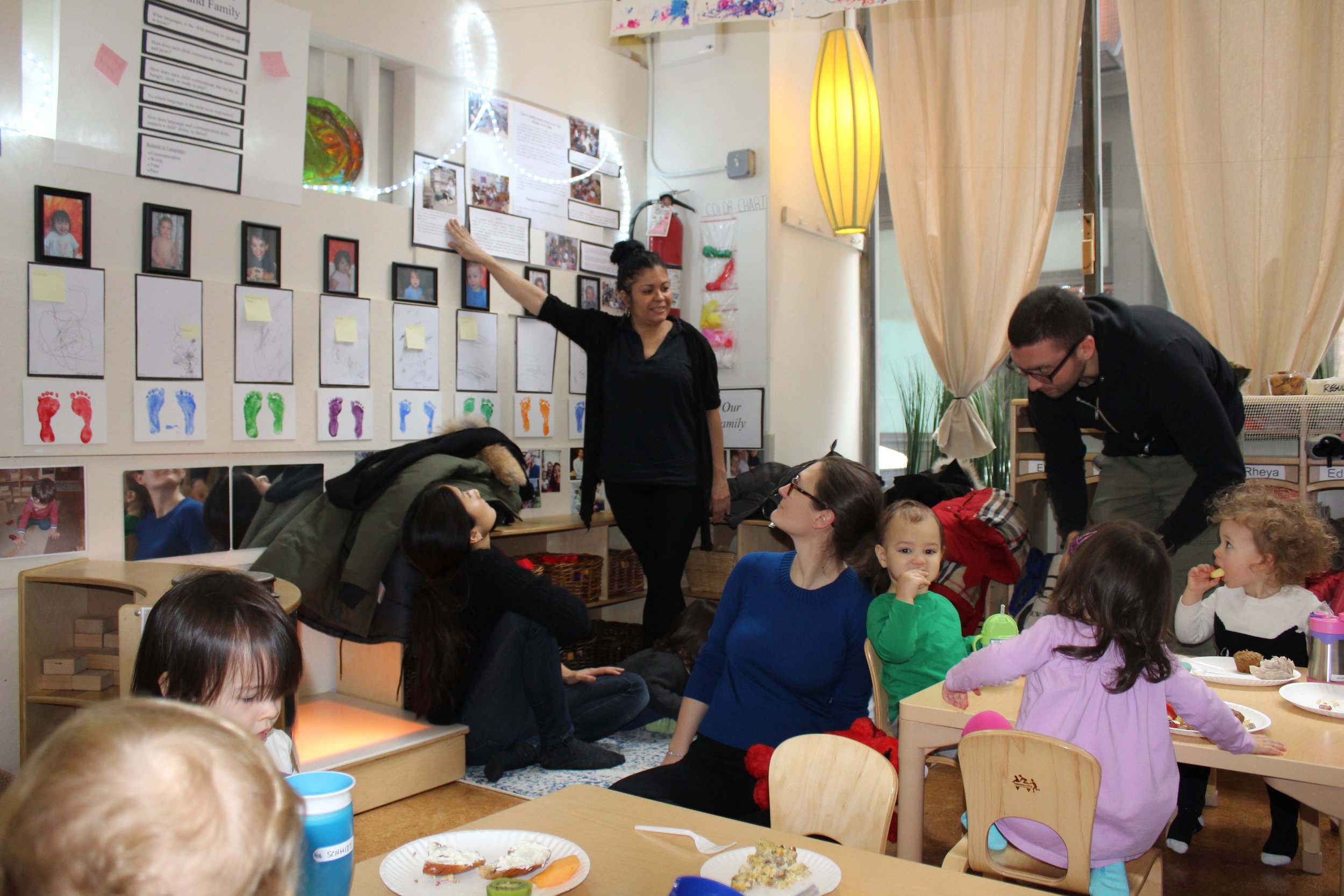
"Finger Paint Art Project"
Some of the highlights of the week:
During this week we also celebrated, No Name-Calling Week and spread Kindness to all. Some of the children had a share snack day. It entails, a classmate bringing a snack that he/she will share with their peers. The children enjoyed their snacks and gradually are learning and understanding to say, Thank you. Kind words are essential to implement in the classroom as they engage in play, share, and take turns.
Edith brought some homemade pumpkin muffins:
Mario brought drinkable applesauce:
Ellis shared raisins and crackers:
Harlow appeared happy as she serves her snacks to her peers. All the children had the opportunity to serve their snacks to their classmates. This act provides them with a sense of accomplishment and independence.
The children also painted a unique picture for one of their friends in the classroom. Harry and Olivia worked at the aisle side by side as they shared a painting together. As they were using distinctive brushstrokes, they both stopped and observed their picture. Harry articulated the colors on the paper. Then they continued working on their artpiece.
We celebrated Lucas birthday this week.
Ice Painting with Tempera Paint: A hands-on activity in early childhood is an avenue that links new concepts to ideas that children already understand. Piaget and Vygotsky are two educational pioneers, their theories, learning occurs as children acquire new concepts, from their interaction with people and experiences, and all the information is stored in their mind until they can make sense of it. Experiencing new concepts with paint enhances imagination and creativity. Painting is a hands-on activity that allows children to explore their senses, color, explore process and outcomes.
Painting on ice incorporates science, texture, and color recognition while observing the ice go from solid to a liquid state. As the children engaged in this activity, they explored the ice by touching and painting. The children brushed the tempera paint on top of the ice block. They noticed what happens with the tempera paint as the ice started melting. The textures started to change, as well as the colors. Sensory experience is the basic element to learning and understanding how everything works in our environment.
All the children interacted with the activity differently. Rheya carefully covered the ice with paint, Remy focused painting the side of the ice, and touched the ice and said, "The ice is cold." Olivia stirs the paint, presses the brush onto the ice, and covers the top. We will continue this activity next week to give all the children an opportunity to explore.
Exploring with tempera paint, glue, and sand: As the children interact with their environment, they experience different stimulation. These experiences enhance their cognitive, physical and language development. Some of the children observed while others explored the sensory activity. We provide options for the children to explore the materials available. It helps us as educators to observe children and alternate our activities as they study them.
Manipulative:
Engaging in play in the same activity, promotes, sharing, taking turns, and language!
A Strainer and Pipe Cleaners: The objective is for the children to try to stick the pipe cleaners through the strainer holes. The activity promotes, concentration, work on their small muscles of their fingers, imagination, and creativity. i will put this activity again next week.
Circle Time:
During circle time we started to write every child's first letter of their name on an erable board. We use this activity as a transition song to wash our hands and then eat lunch or snack. The teacher asks, "What letter is this or what letter do you think it is?" Ellis said, "The letter R, for Remy." Amazing!! Our children are not only beginning to recognize and articulate their first letter of their names, but their peers. Providing opportunities, exposure, consistency, and following the child's pace, allows them to learn in a fun and interactive way.

